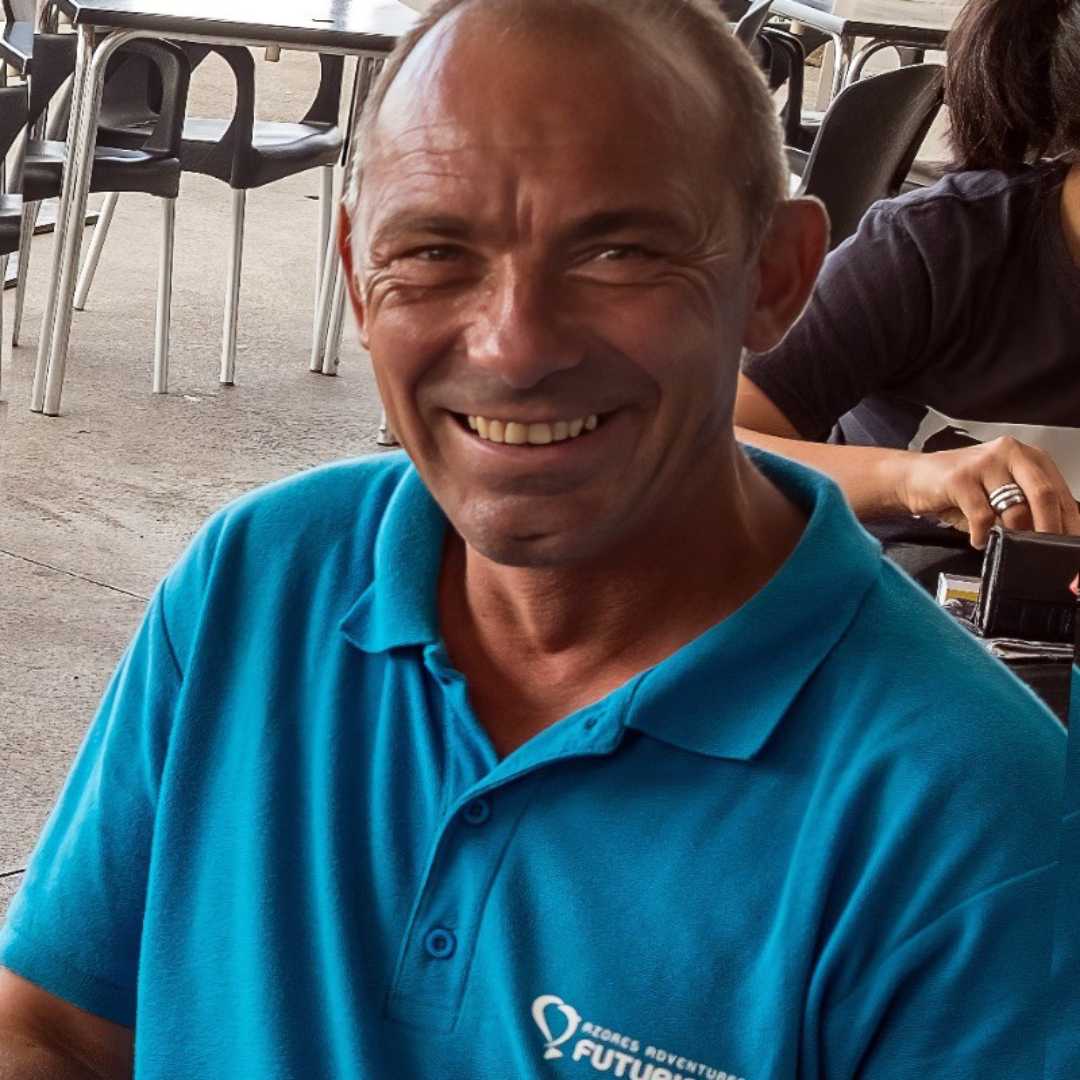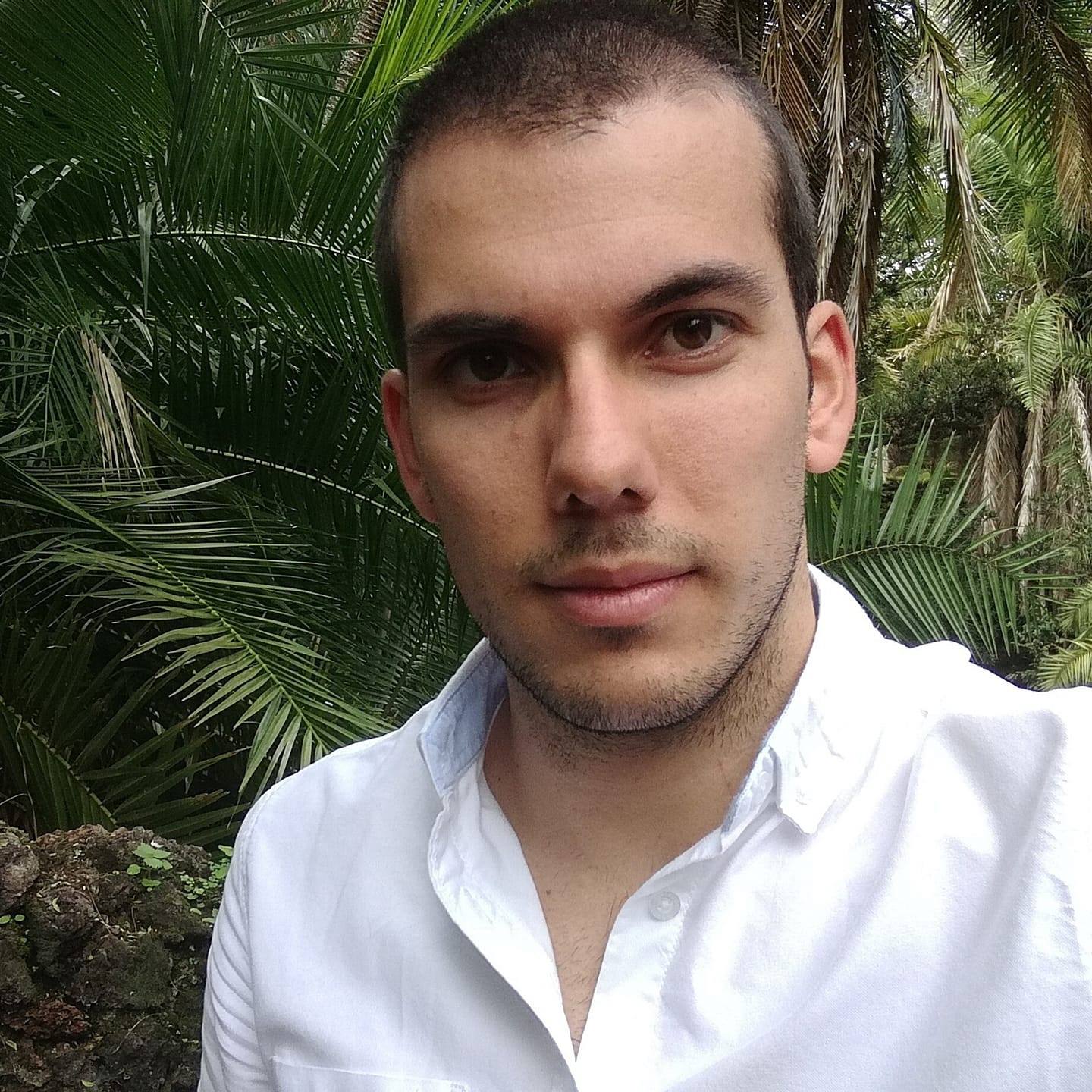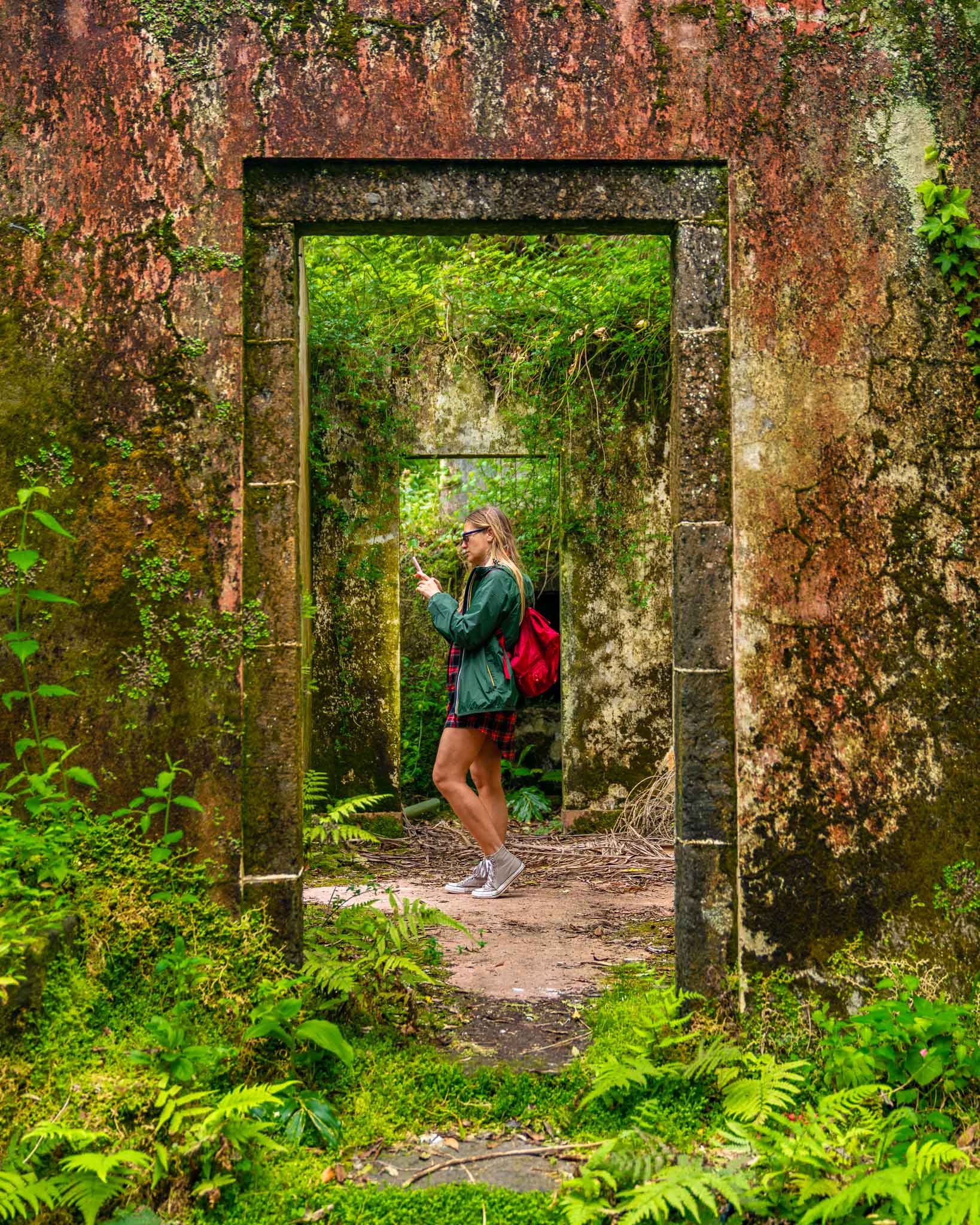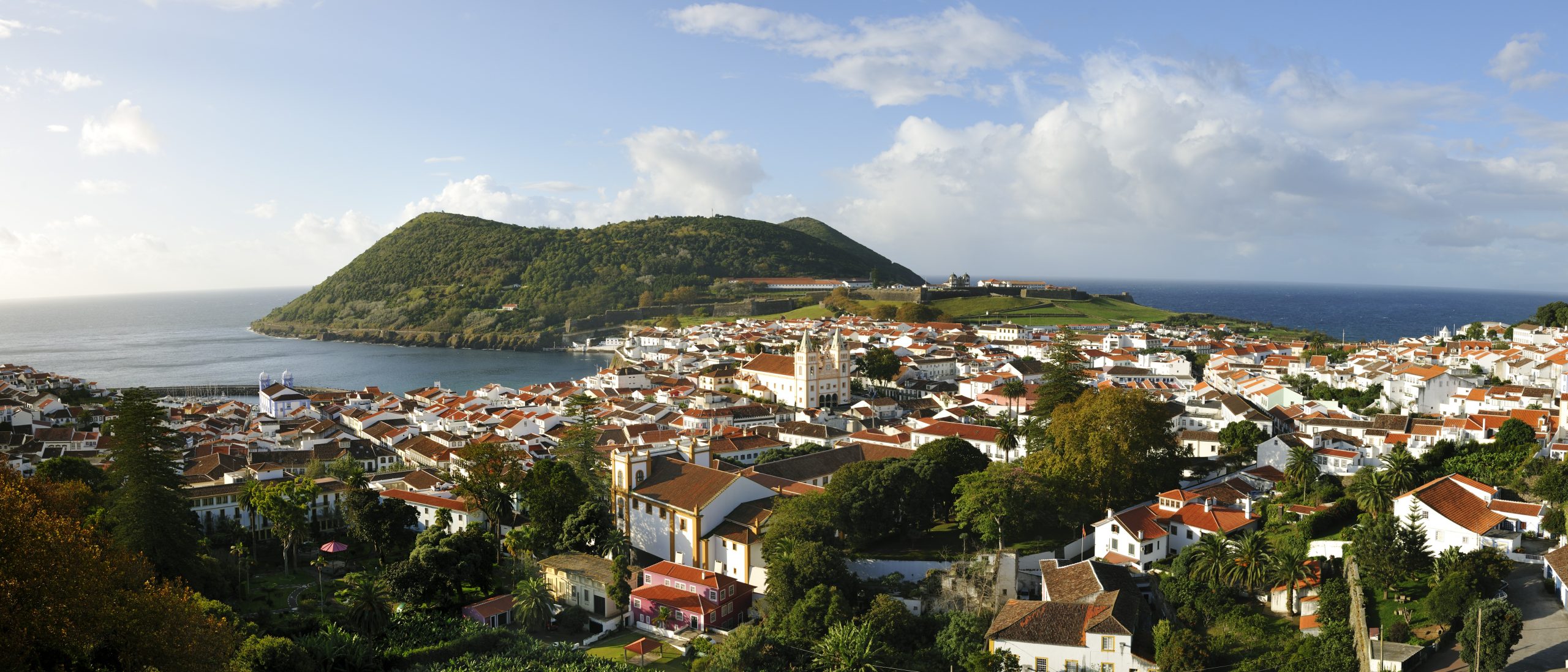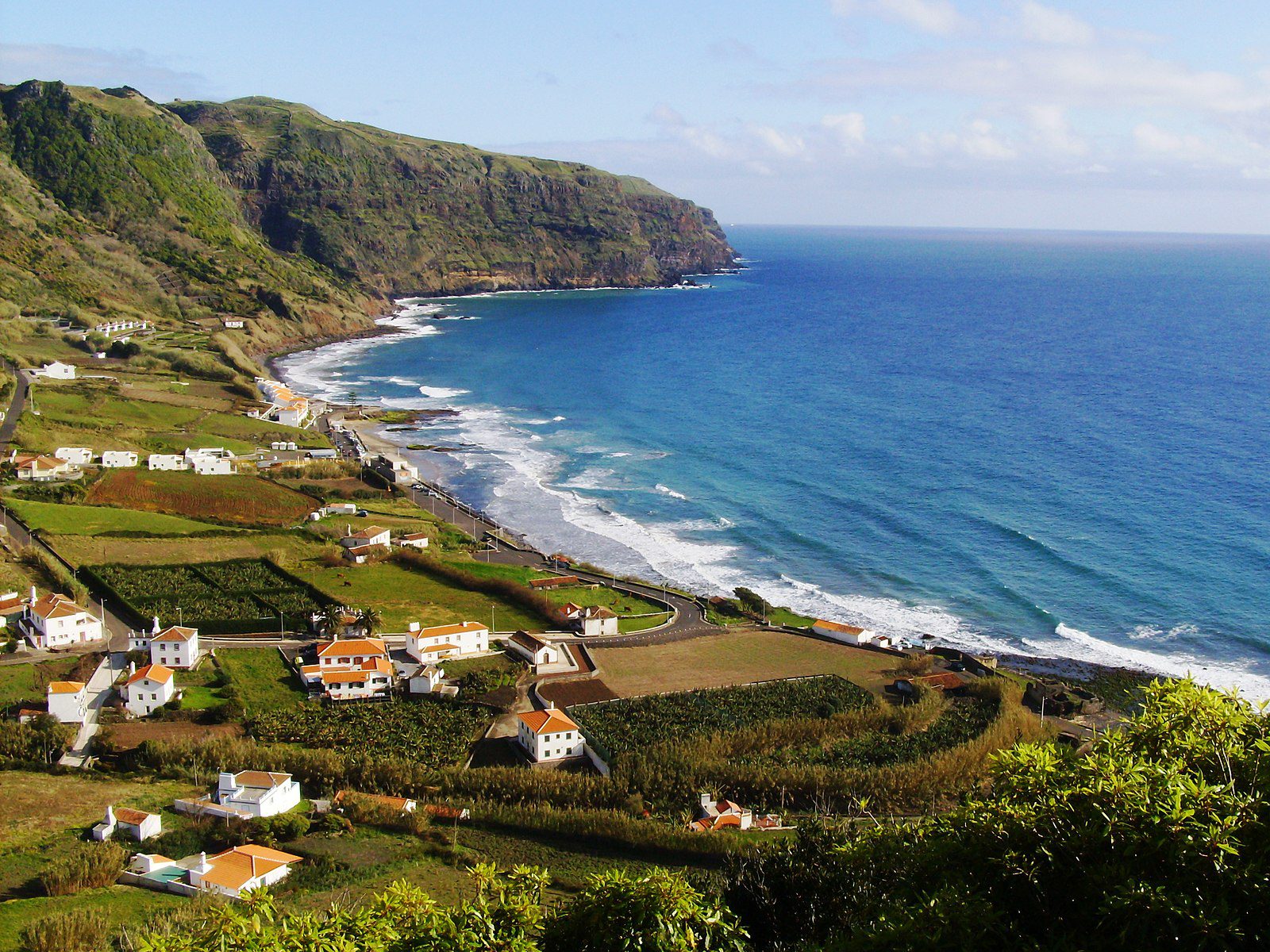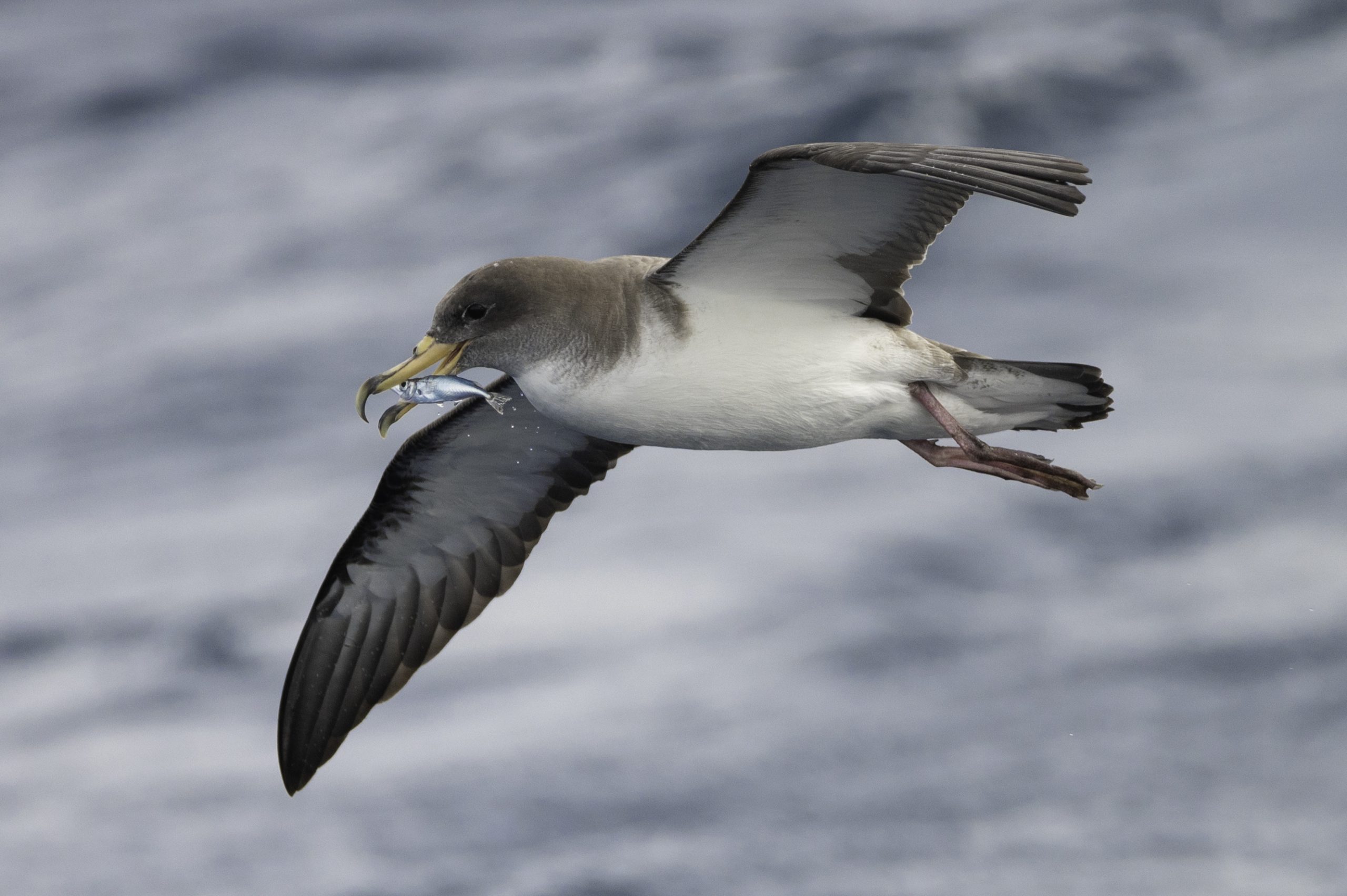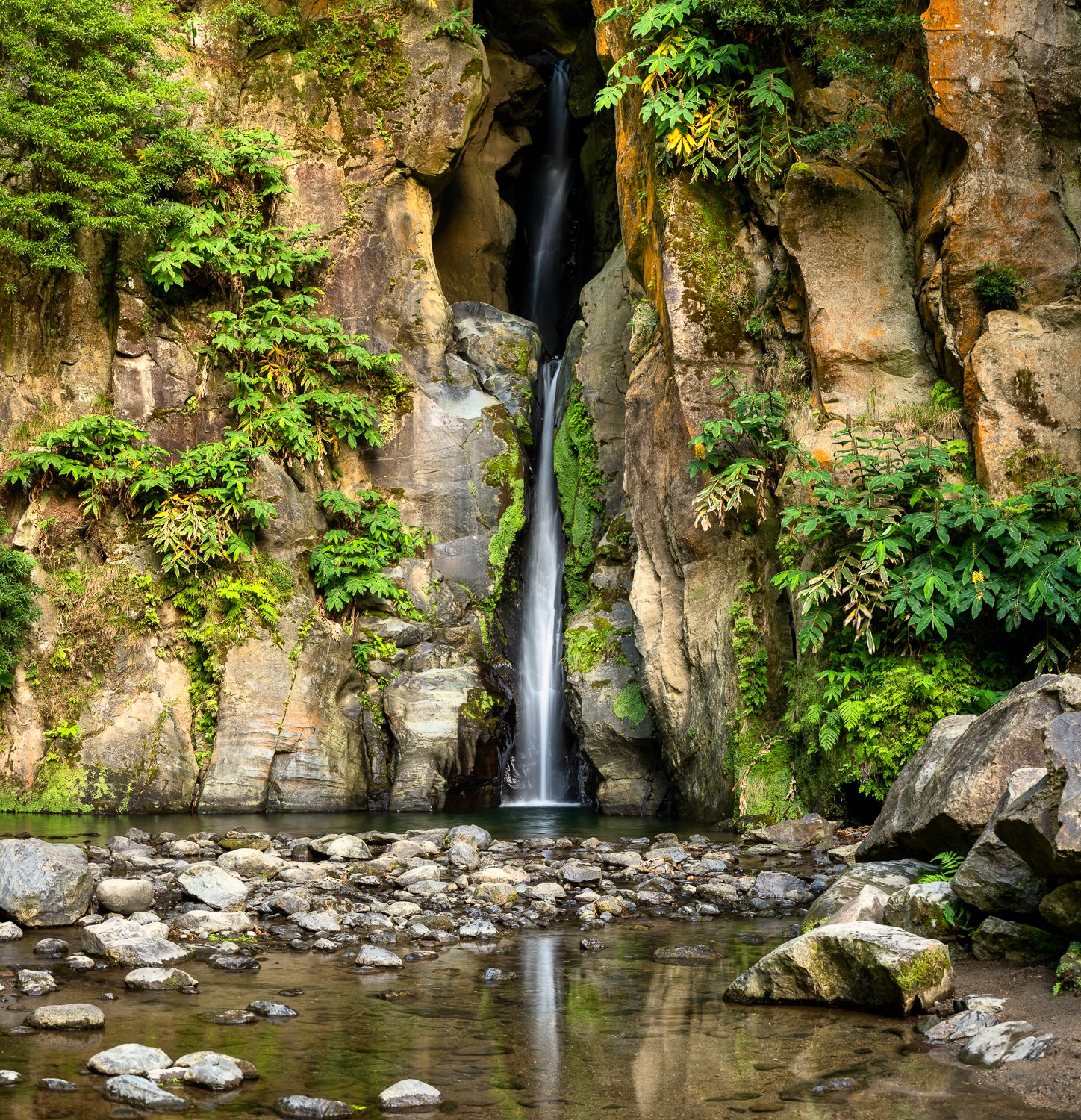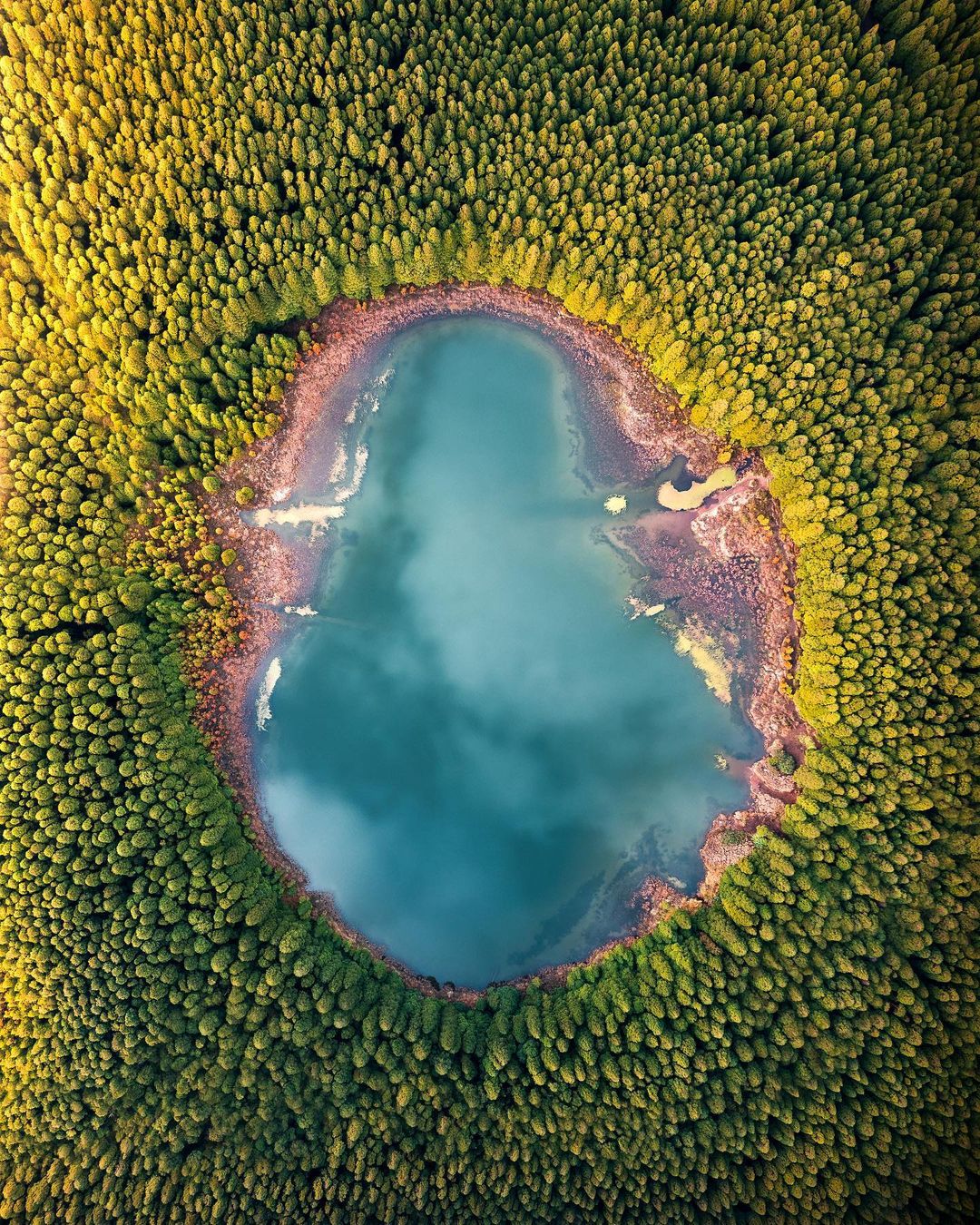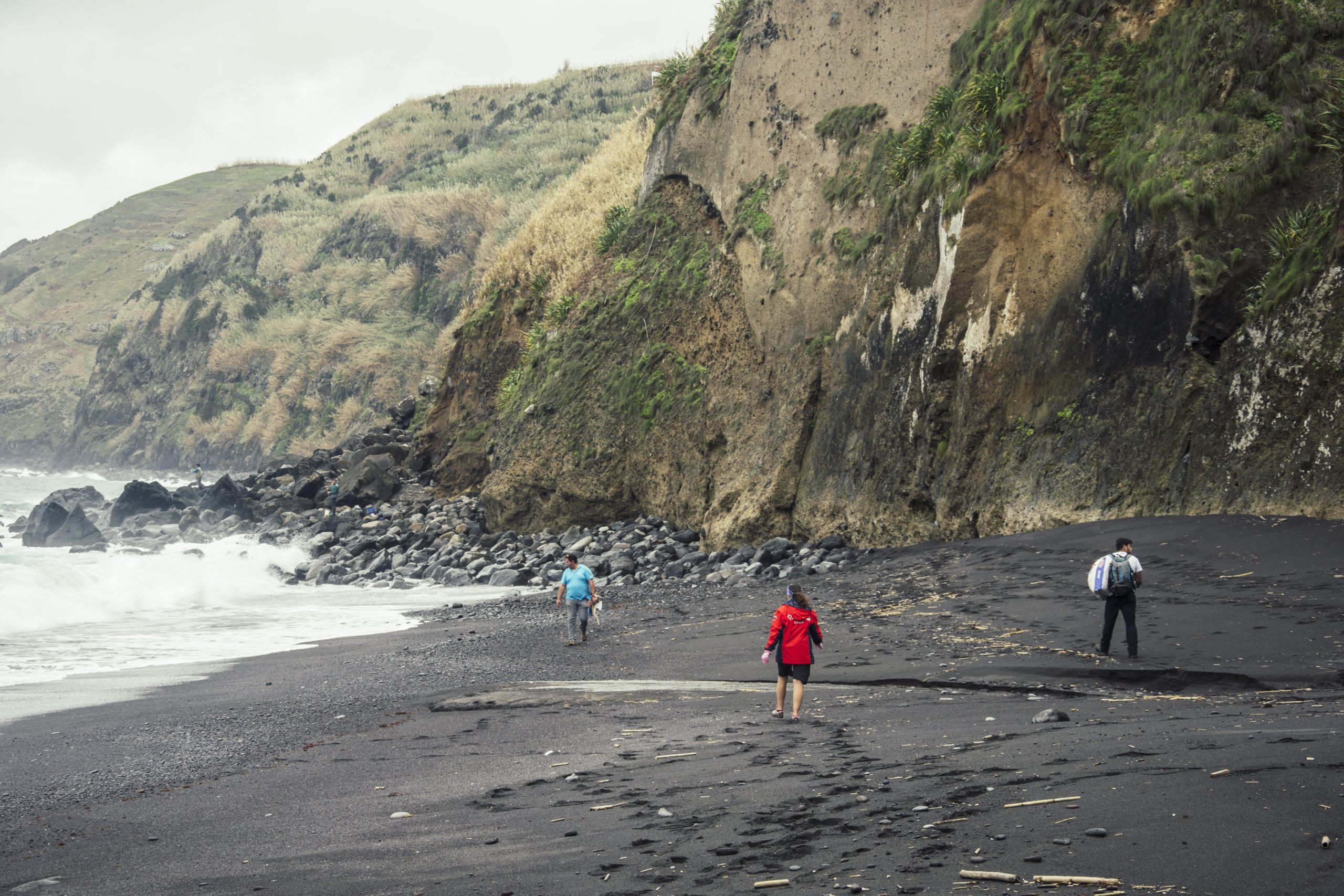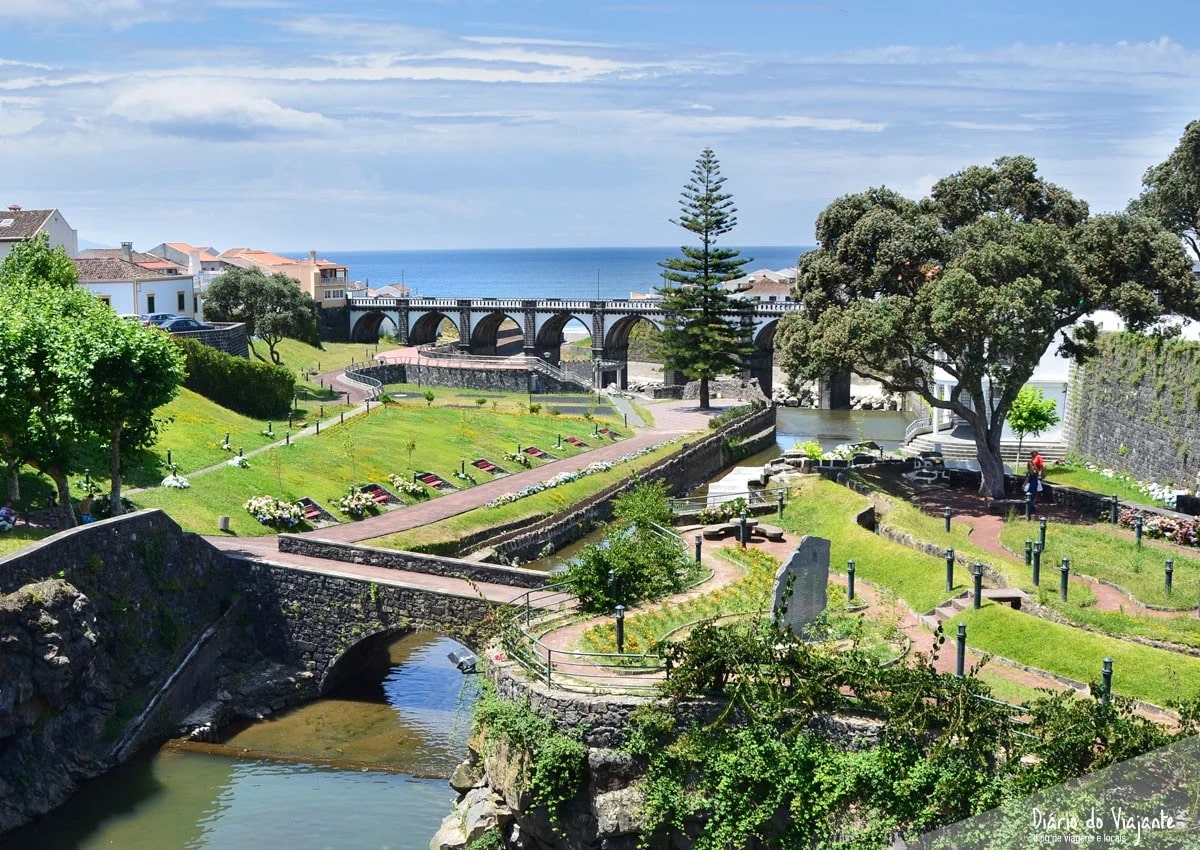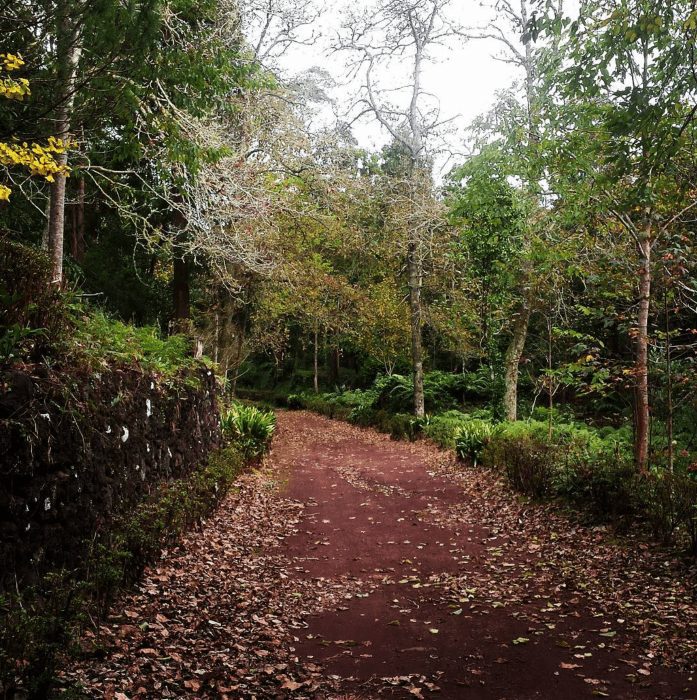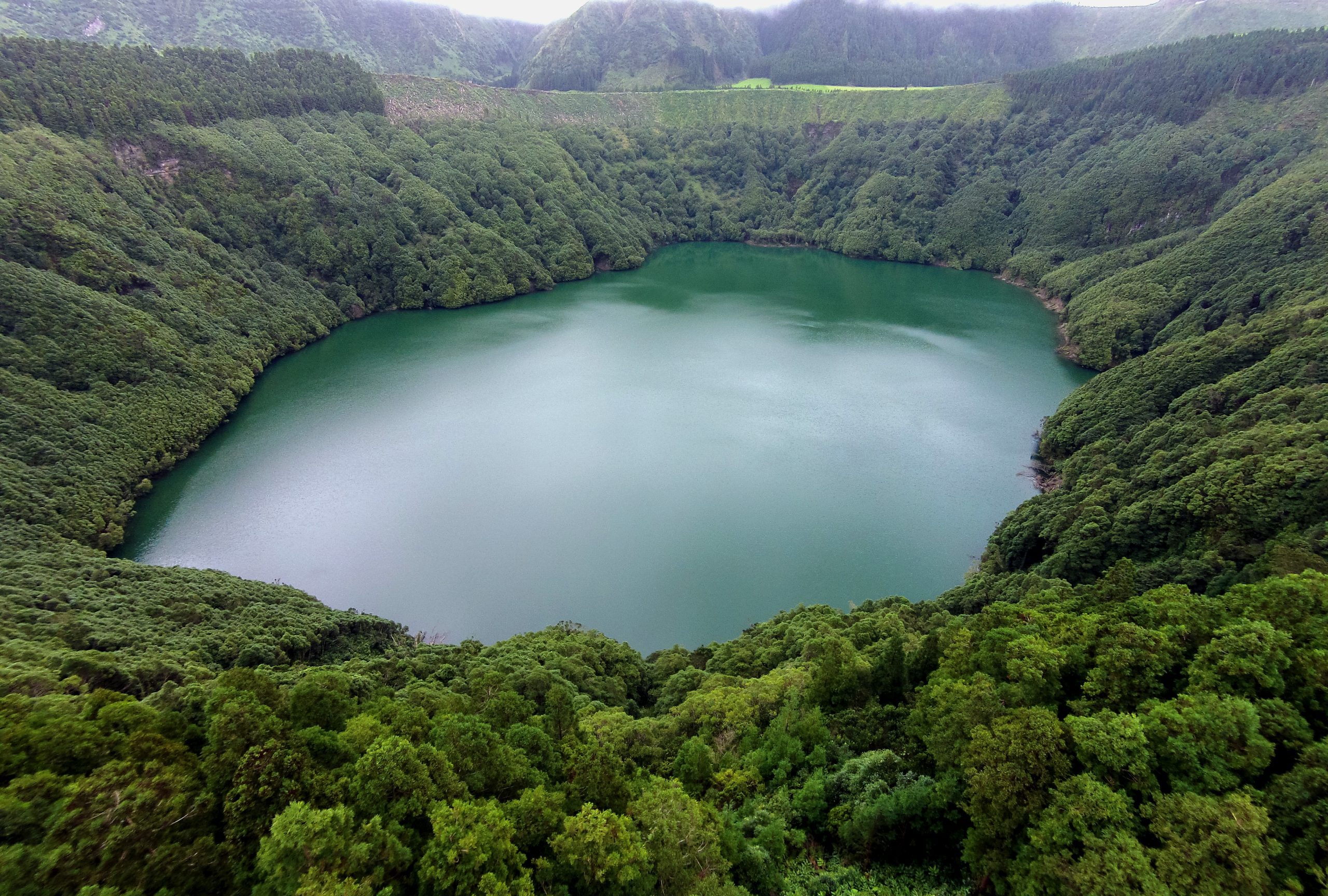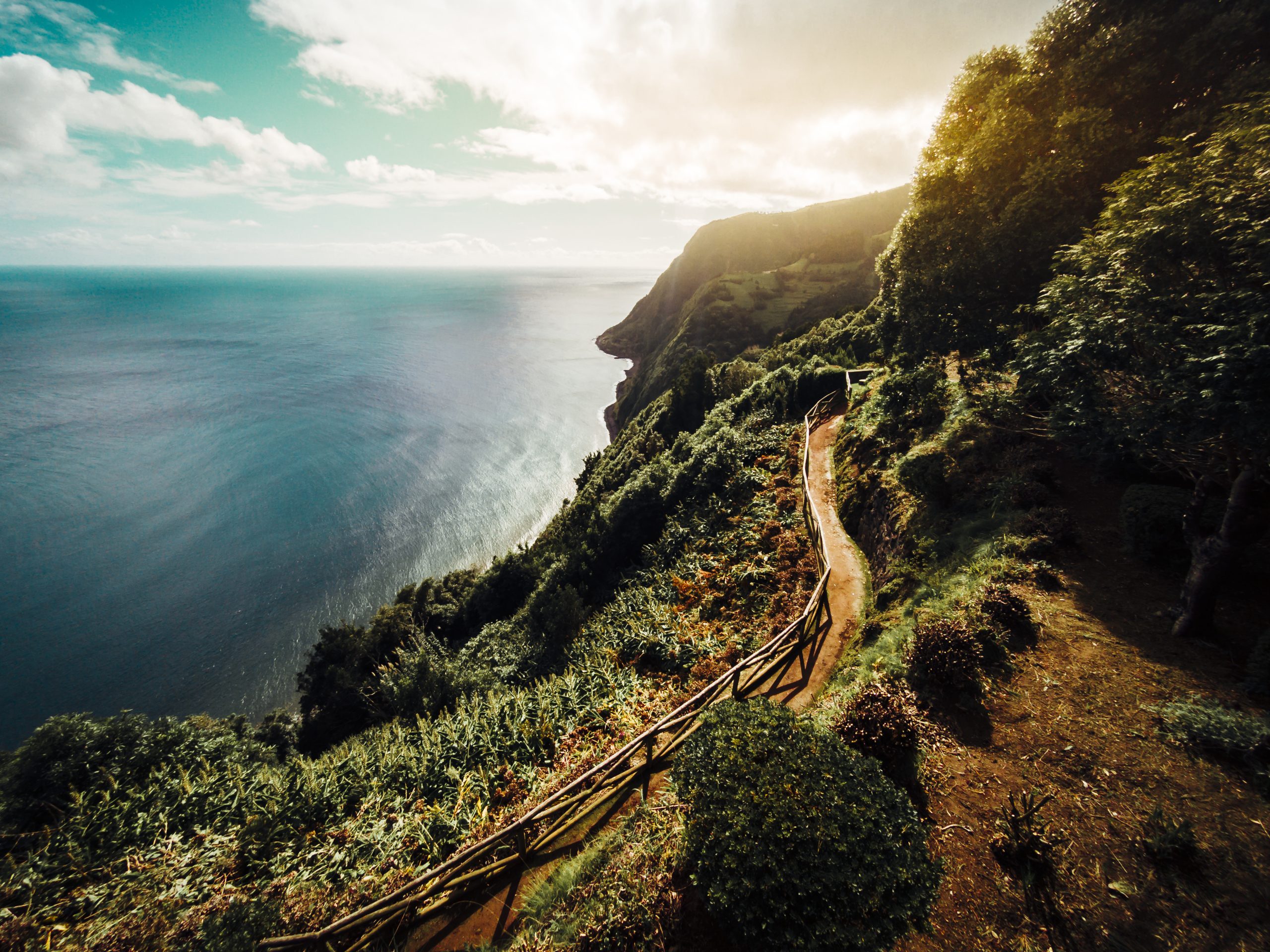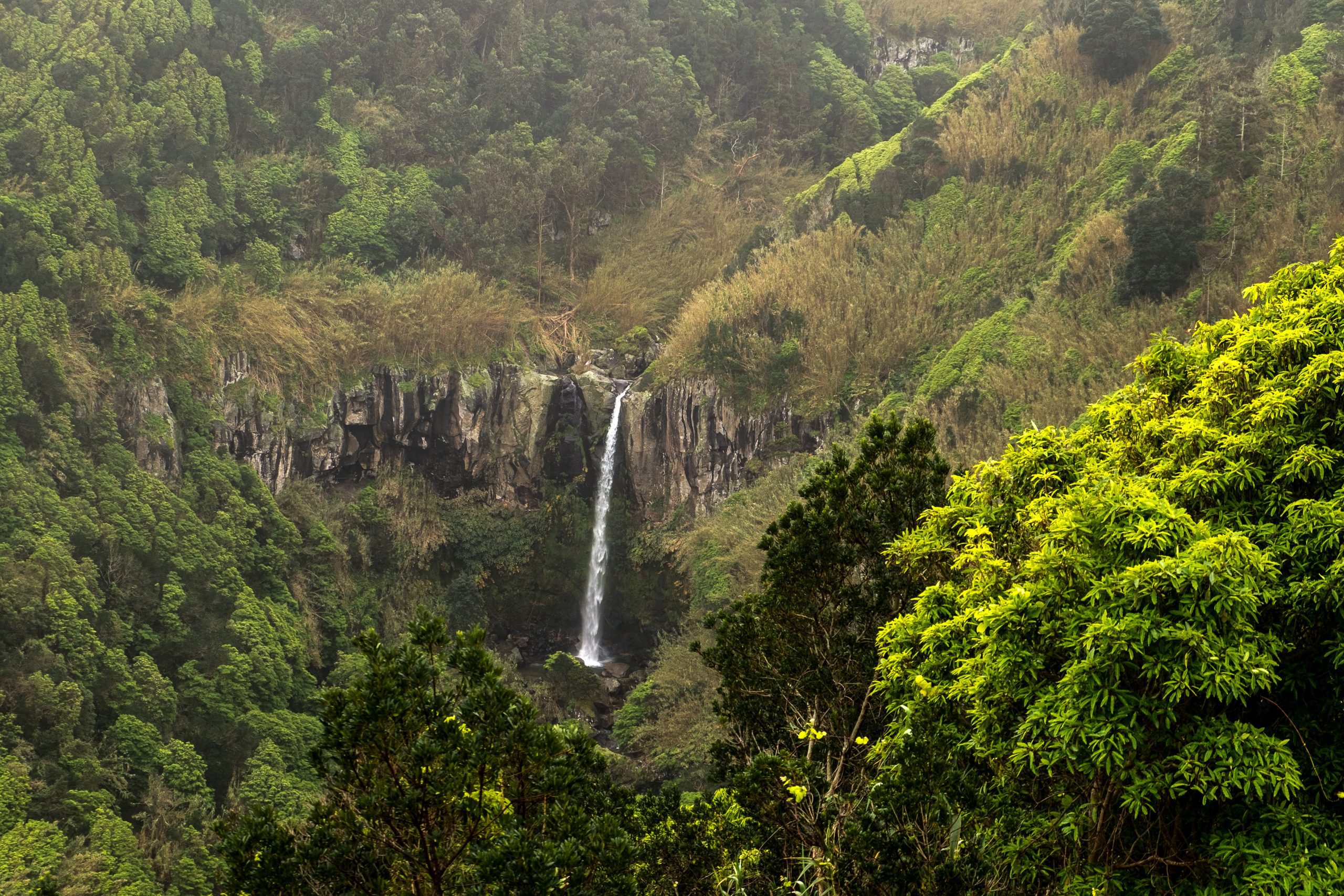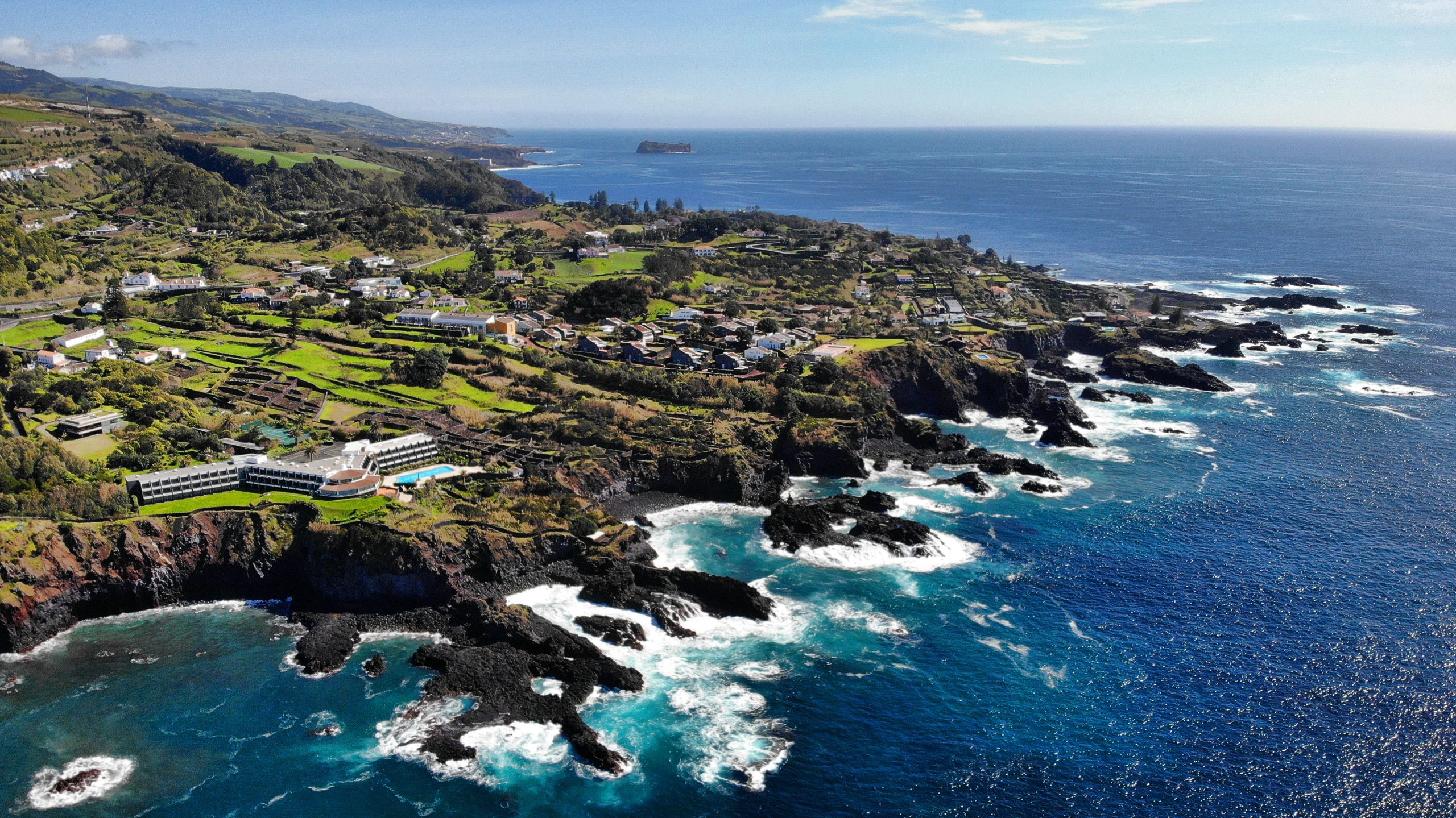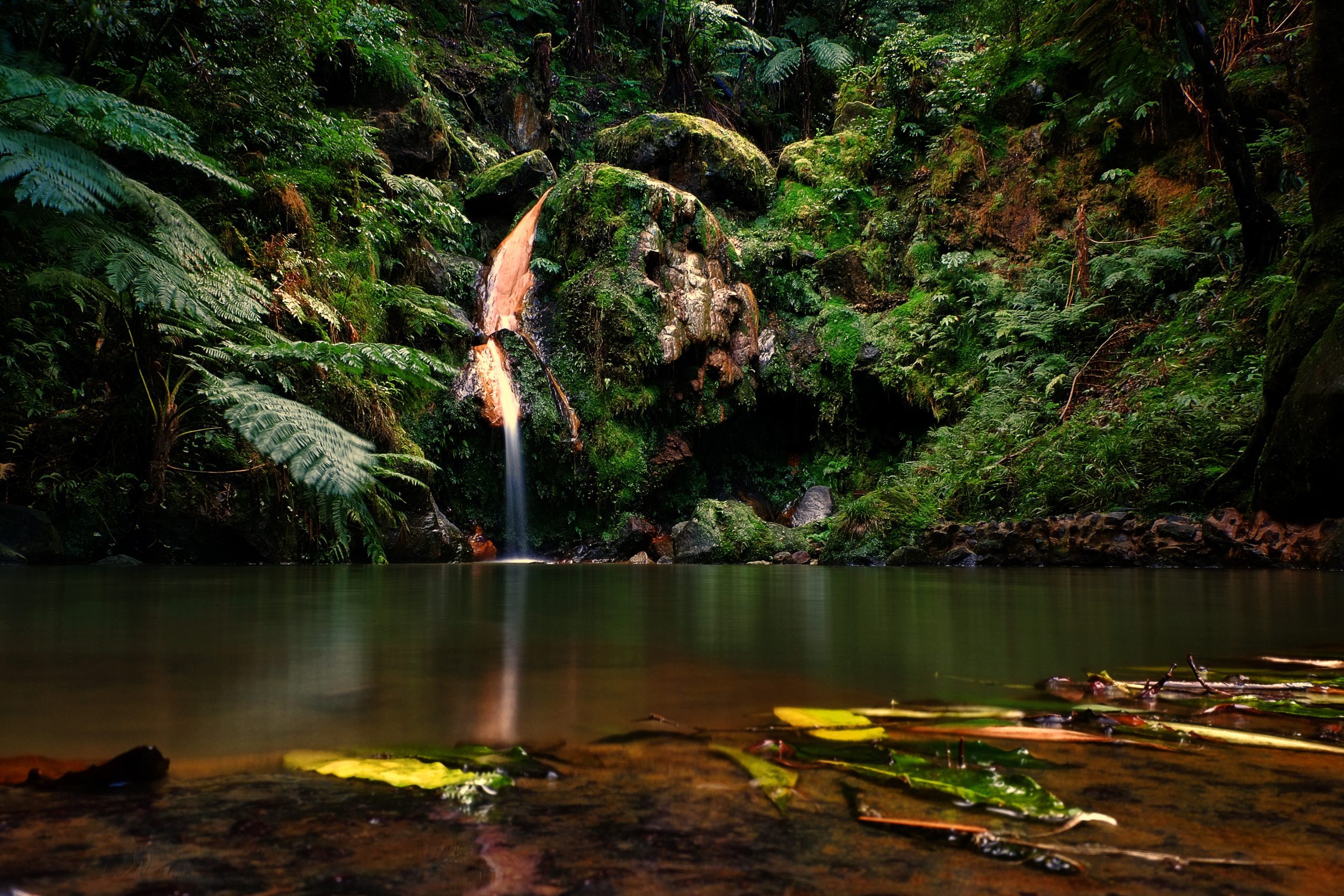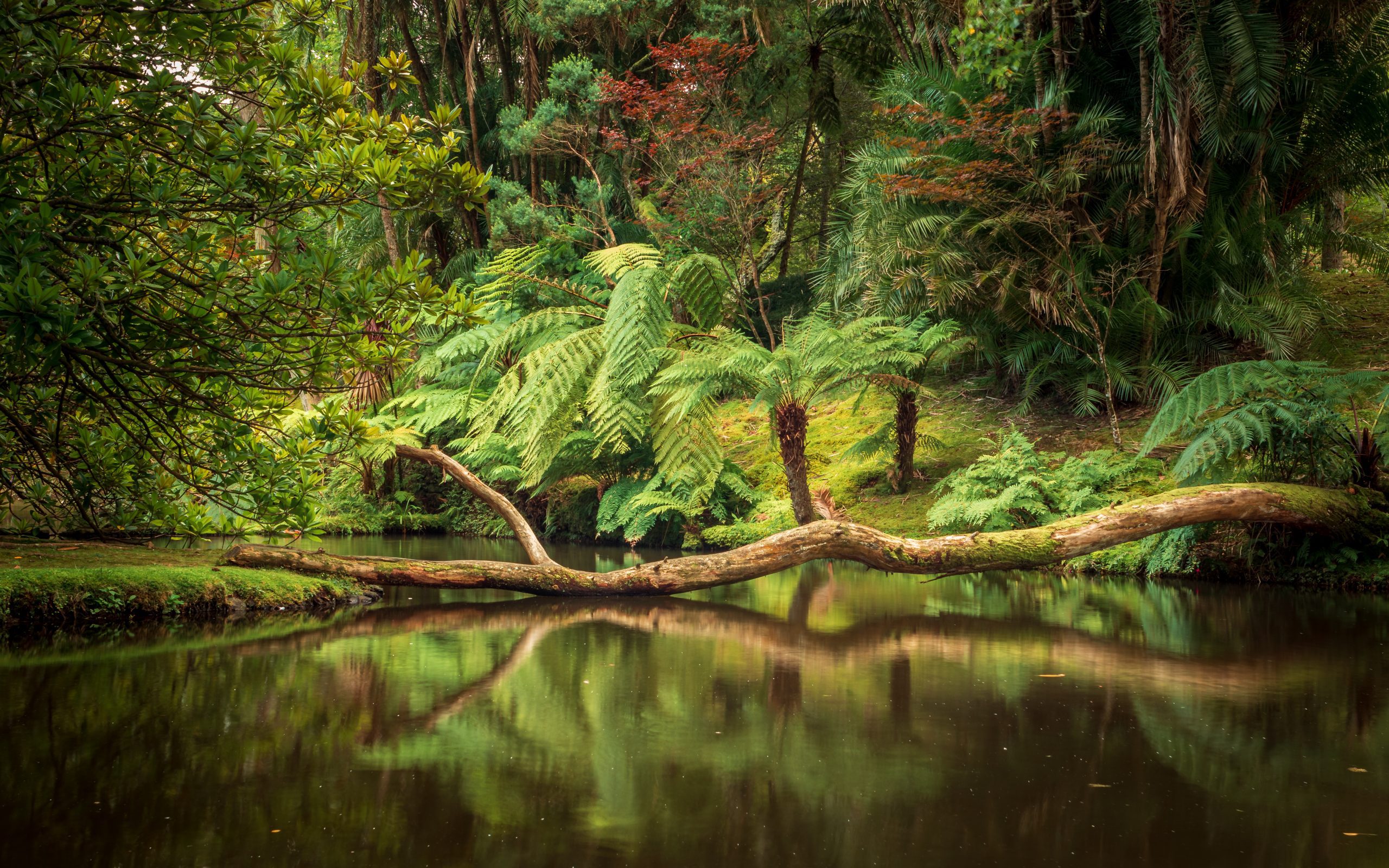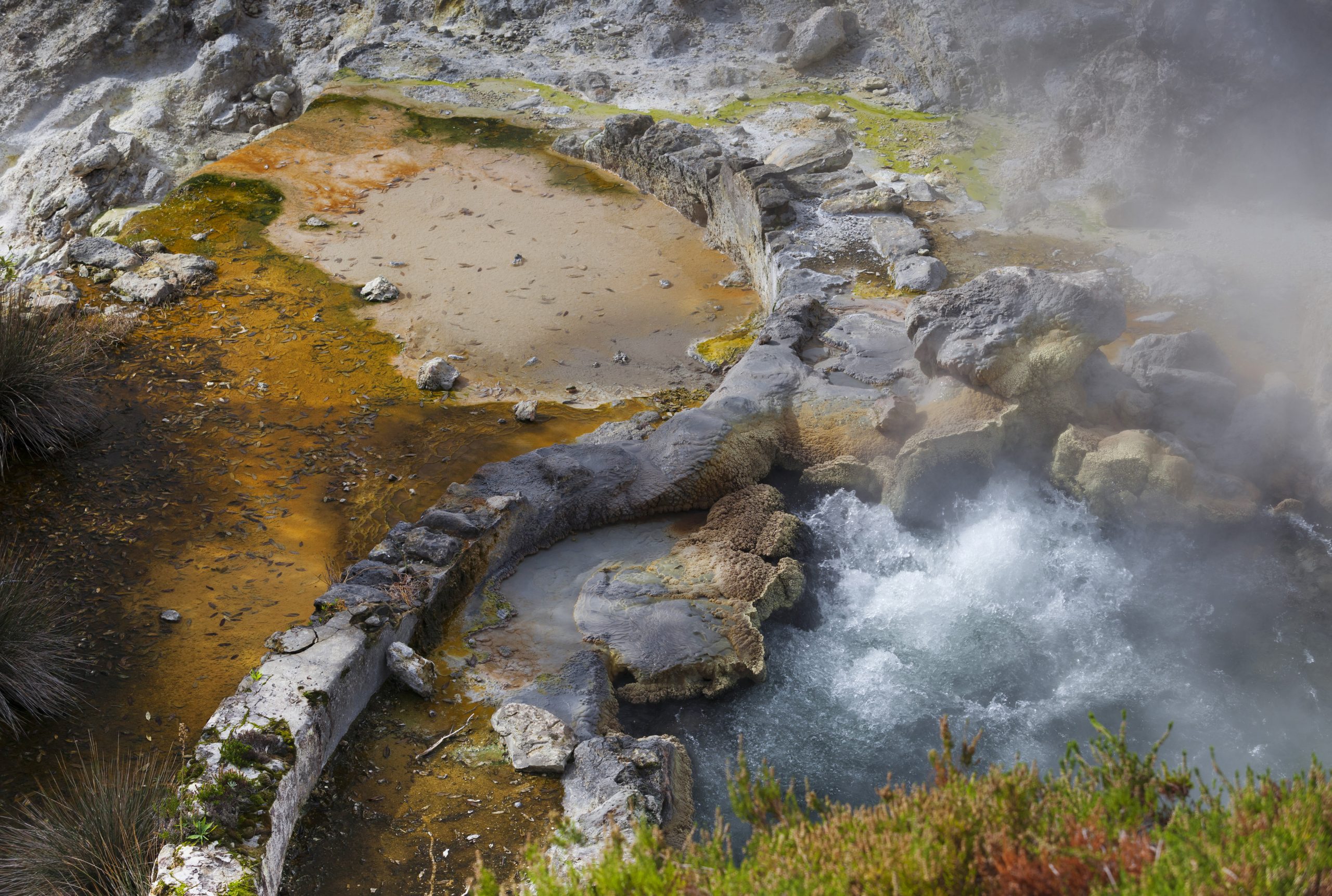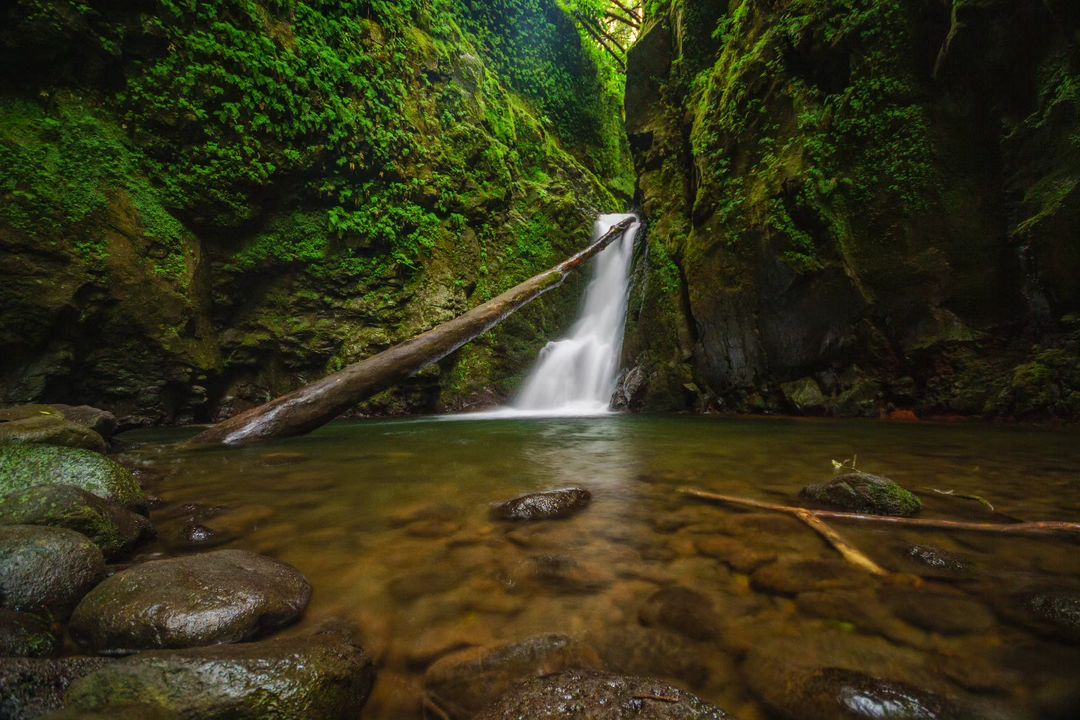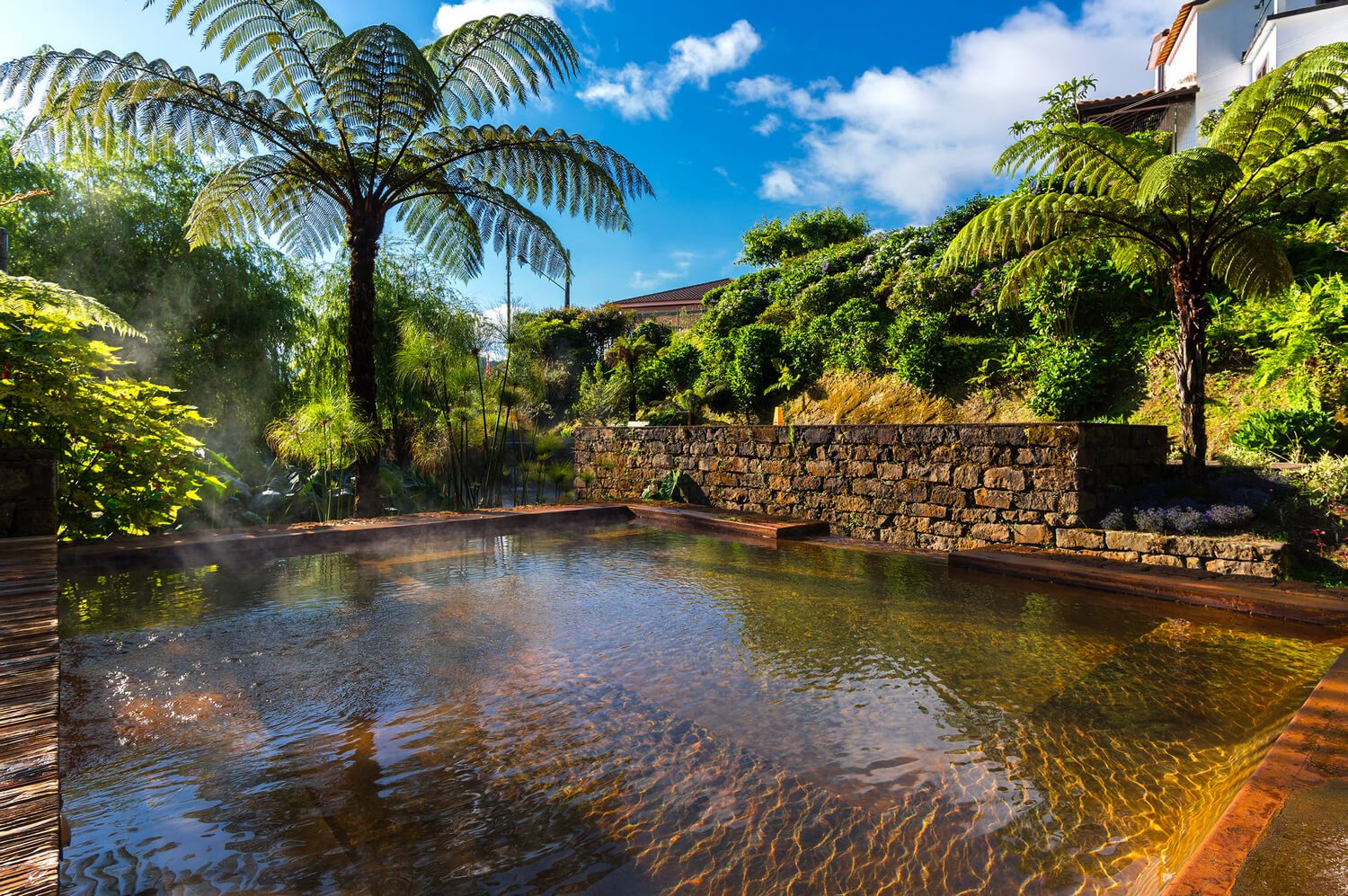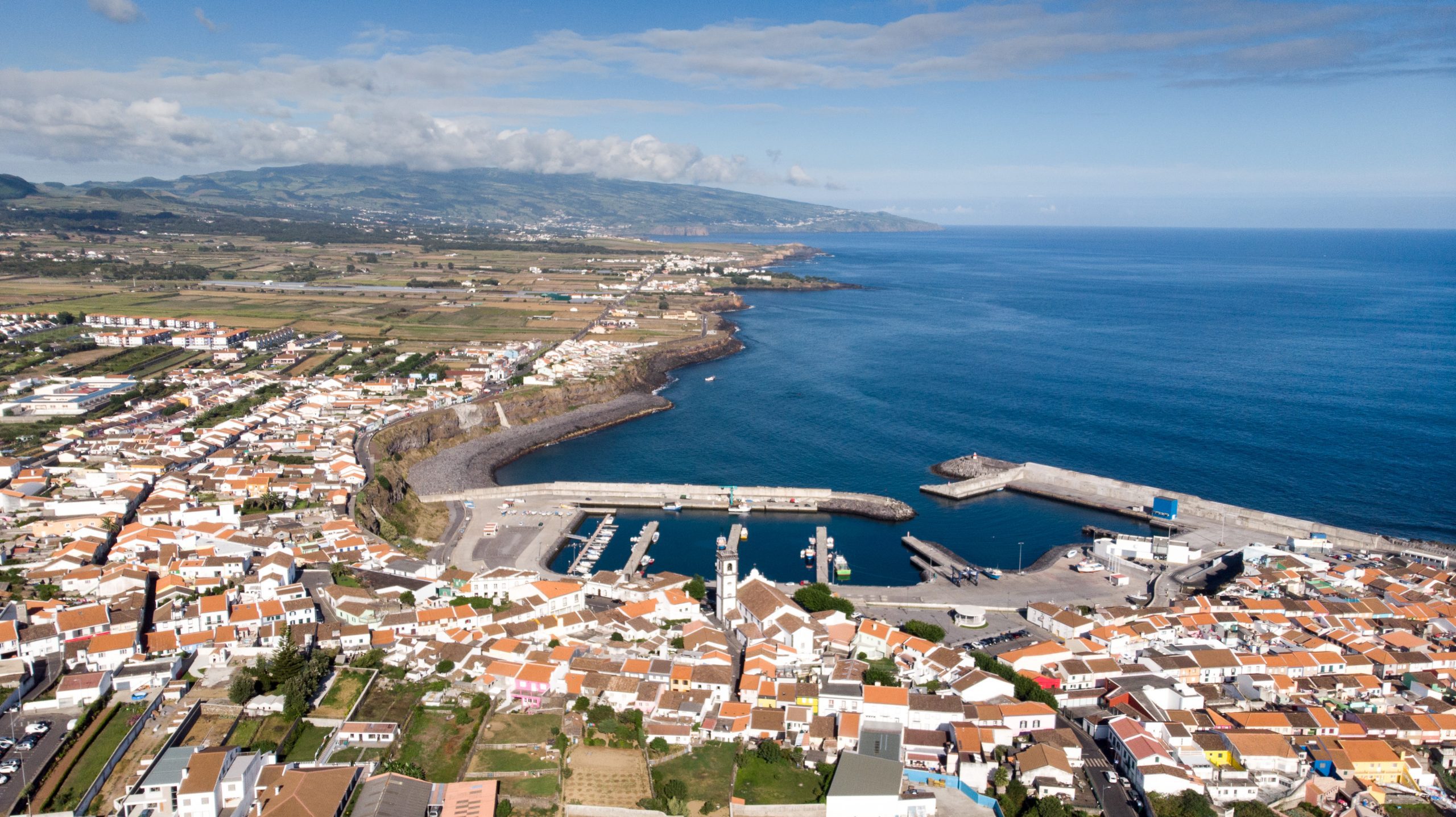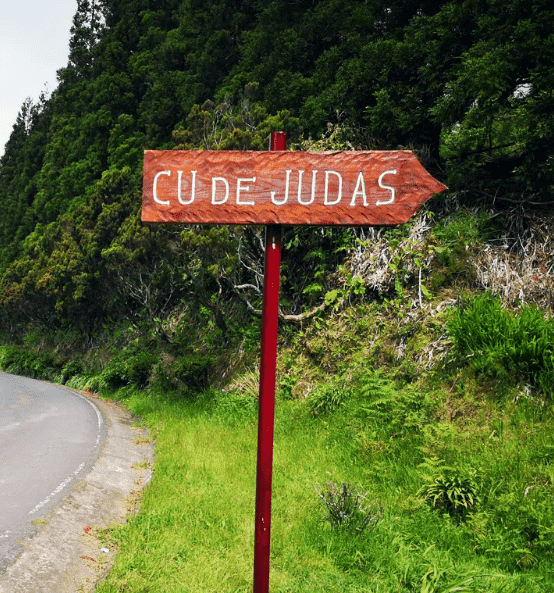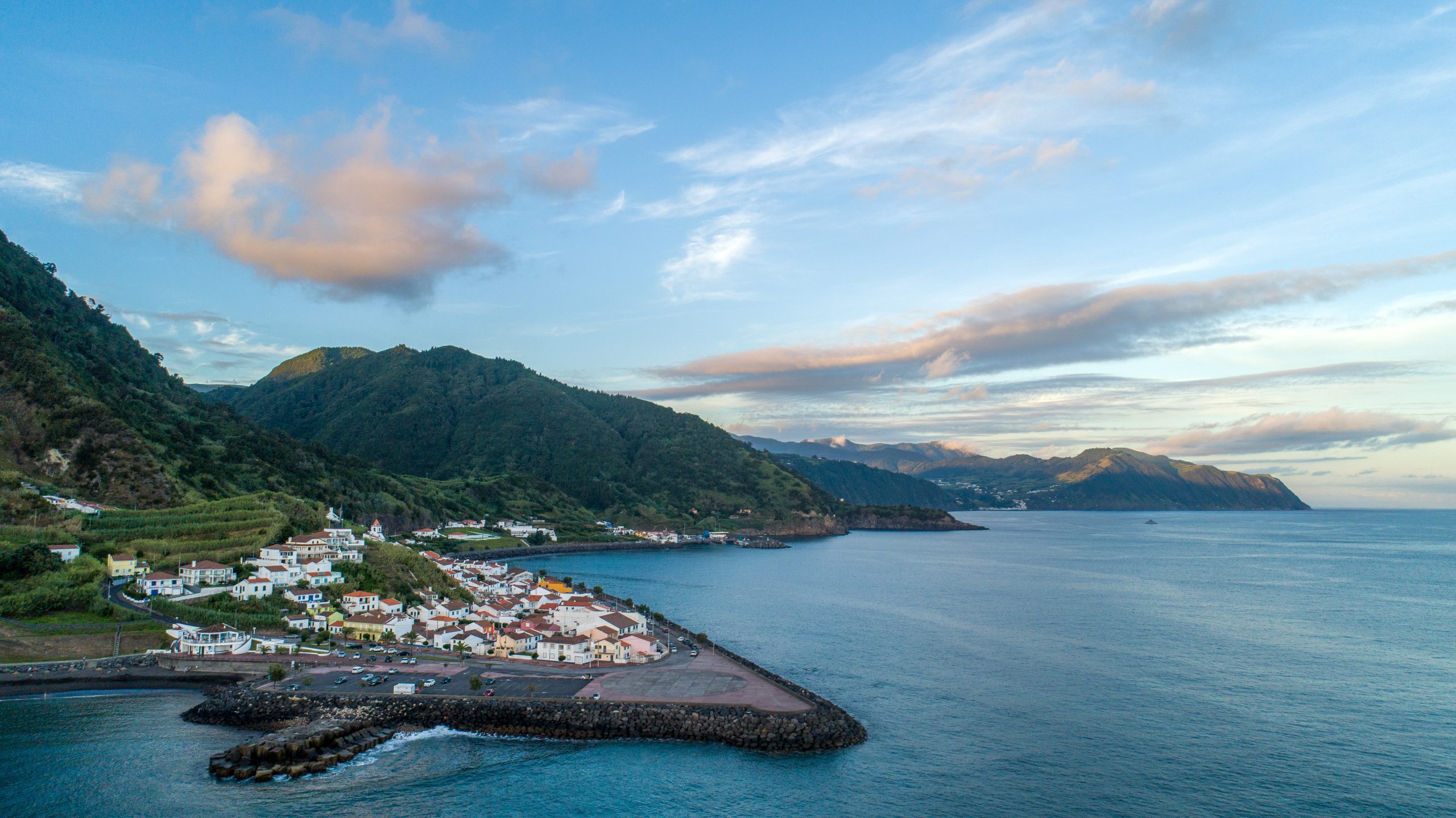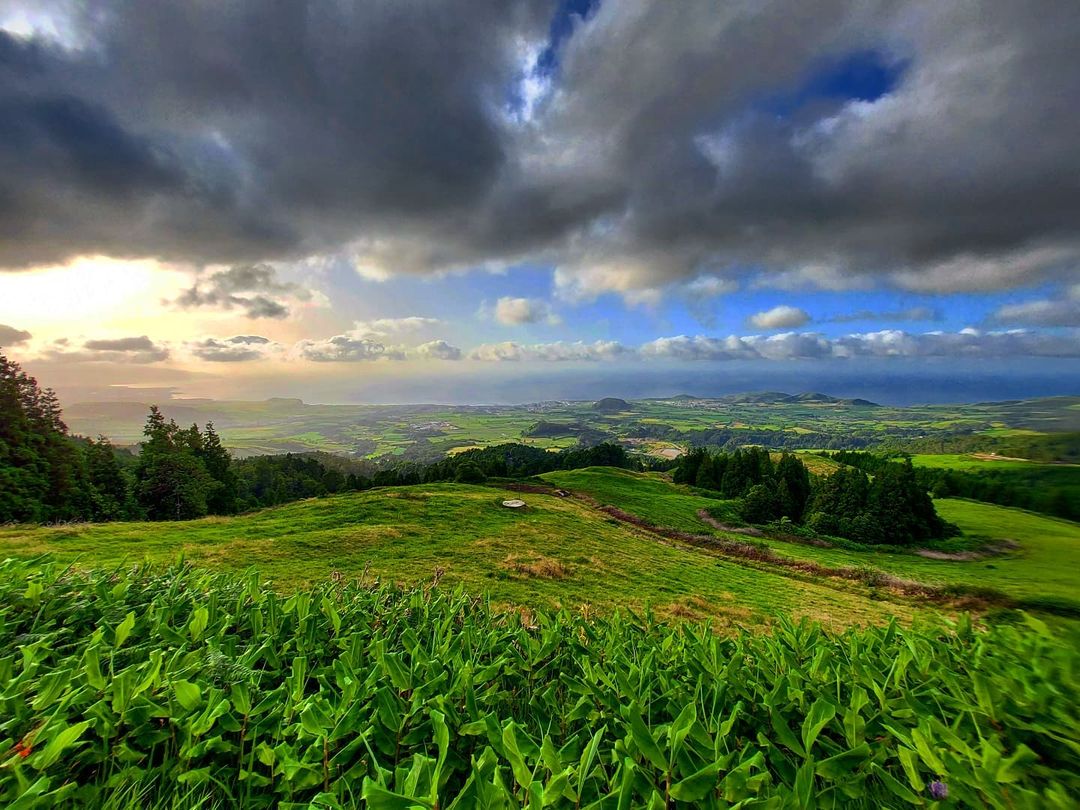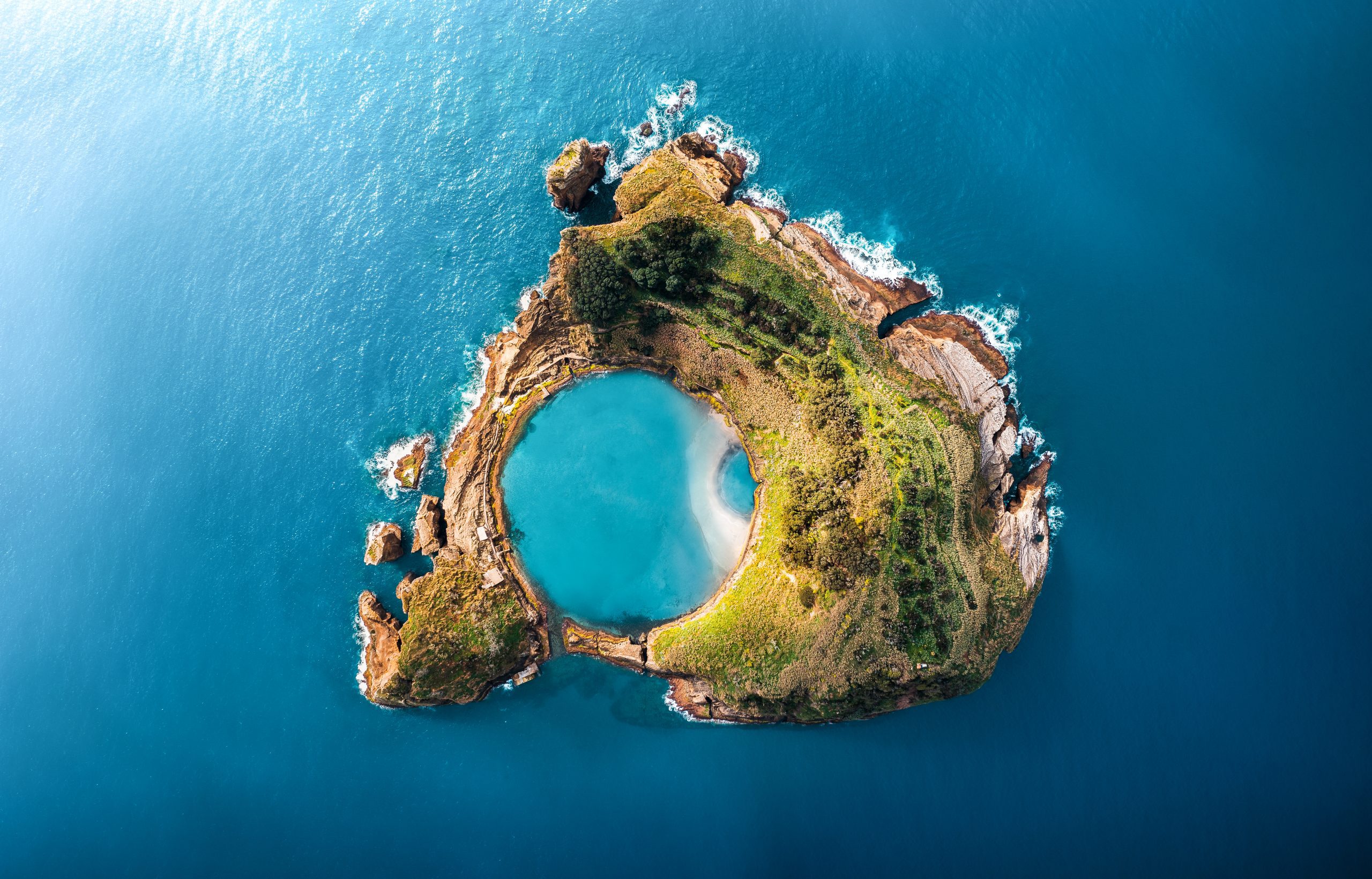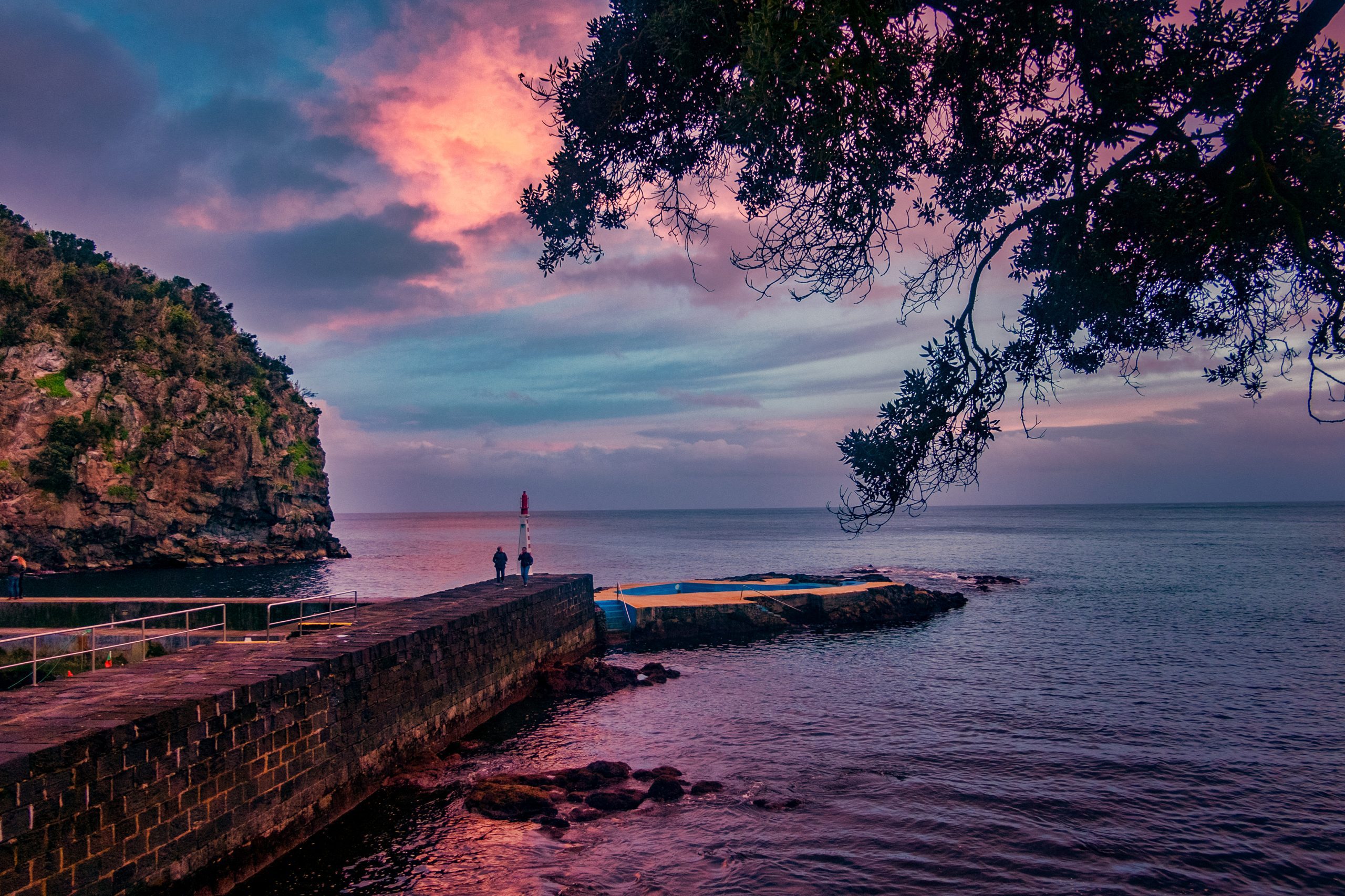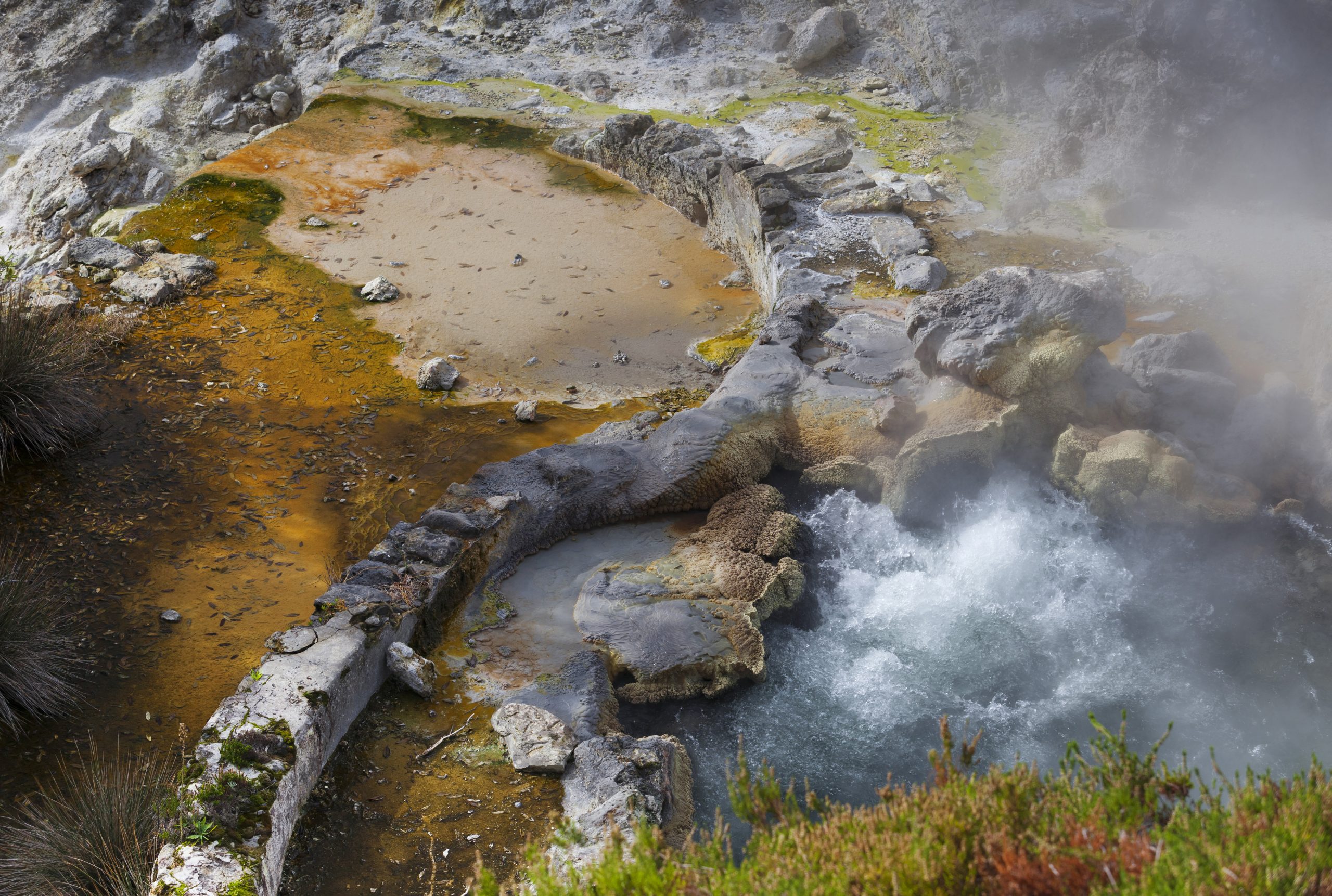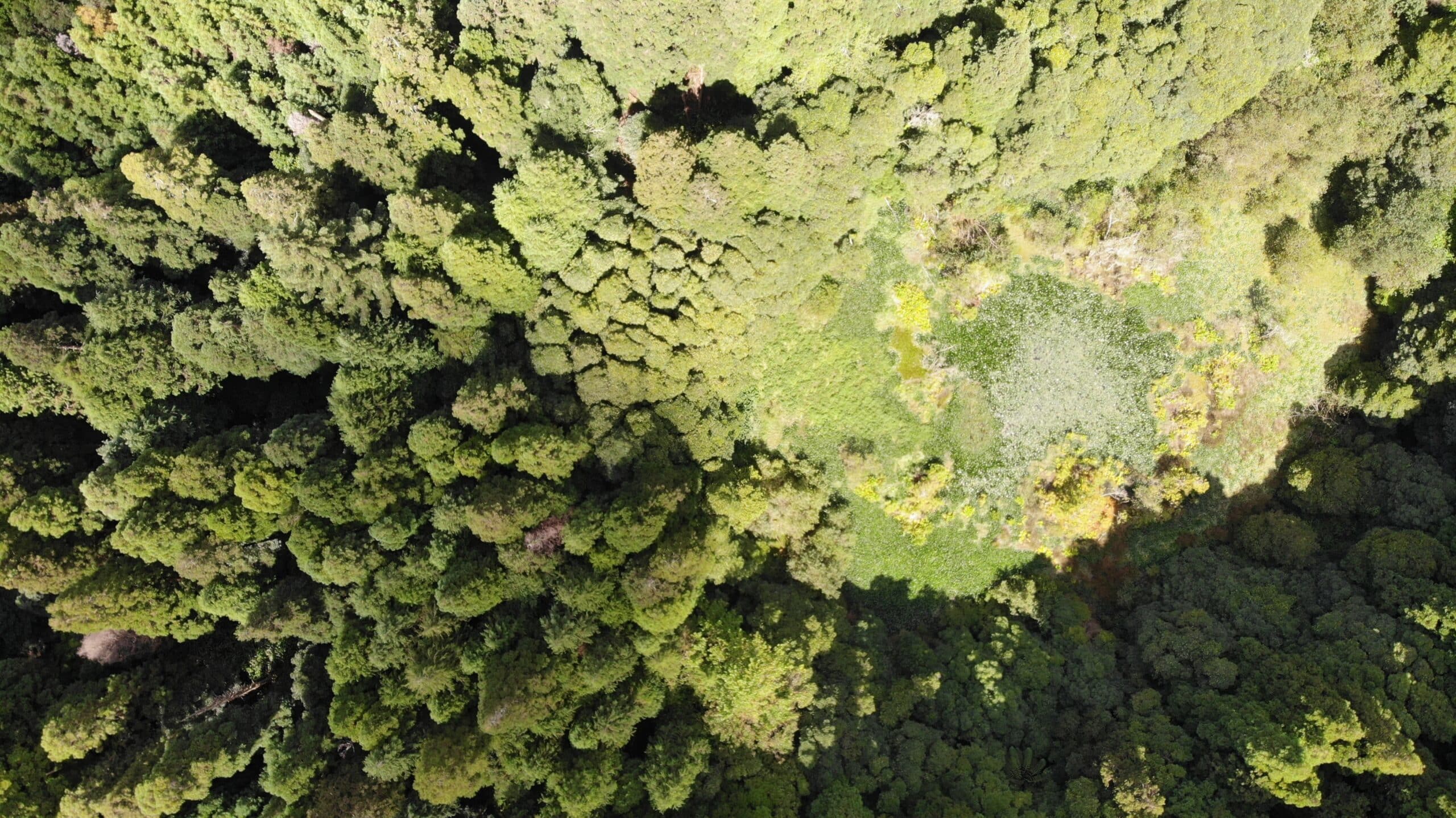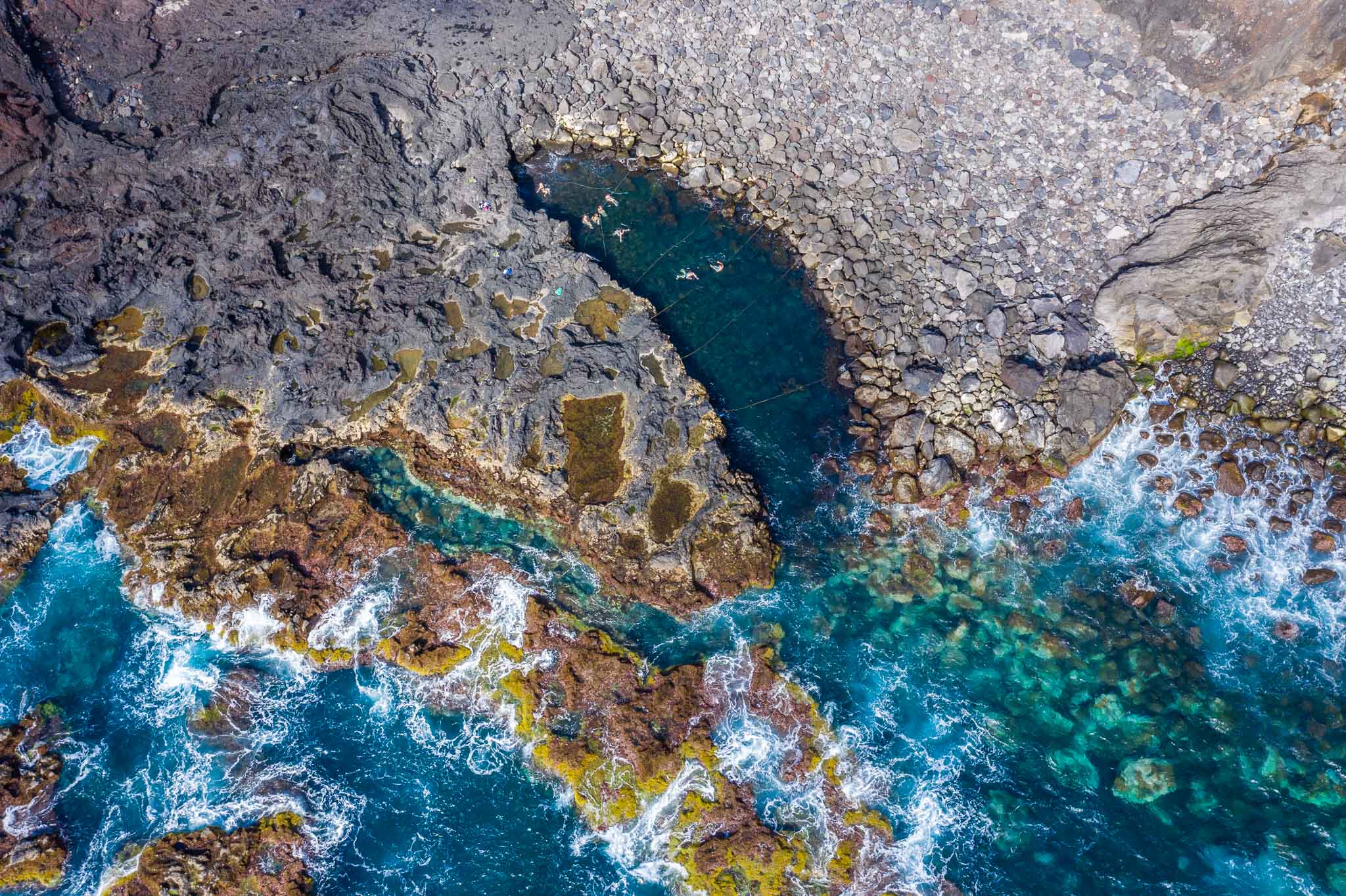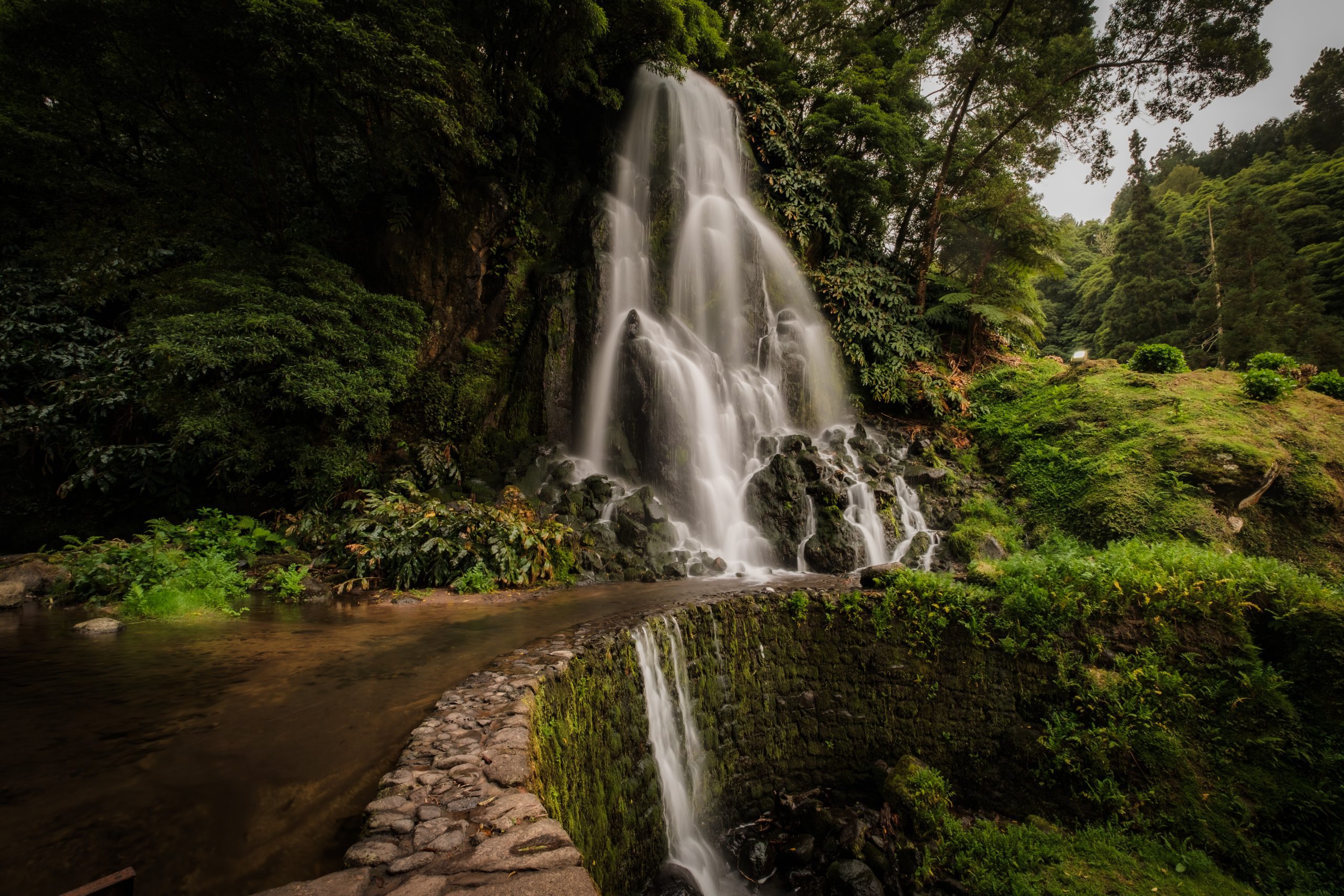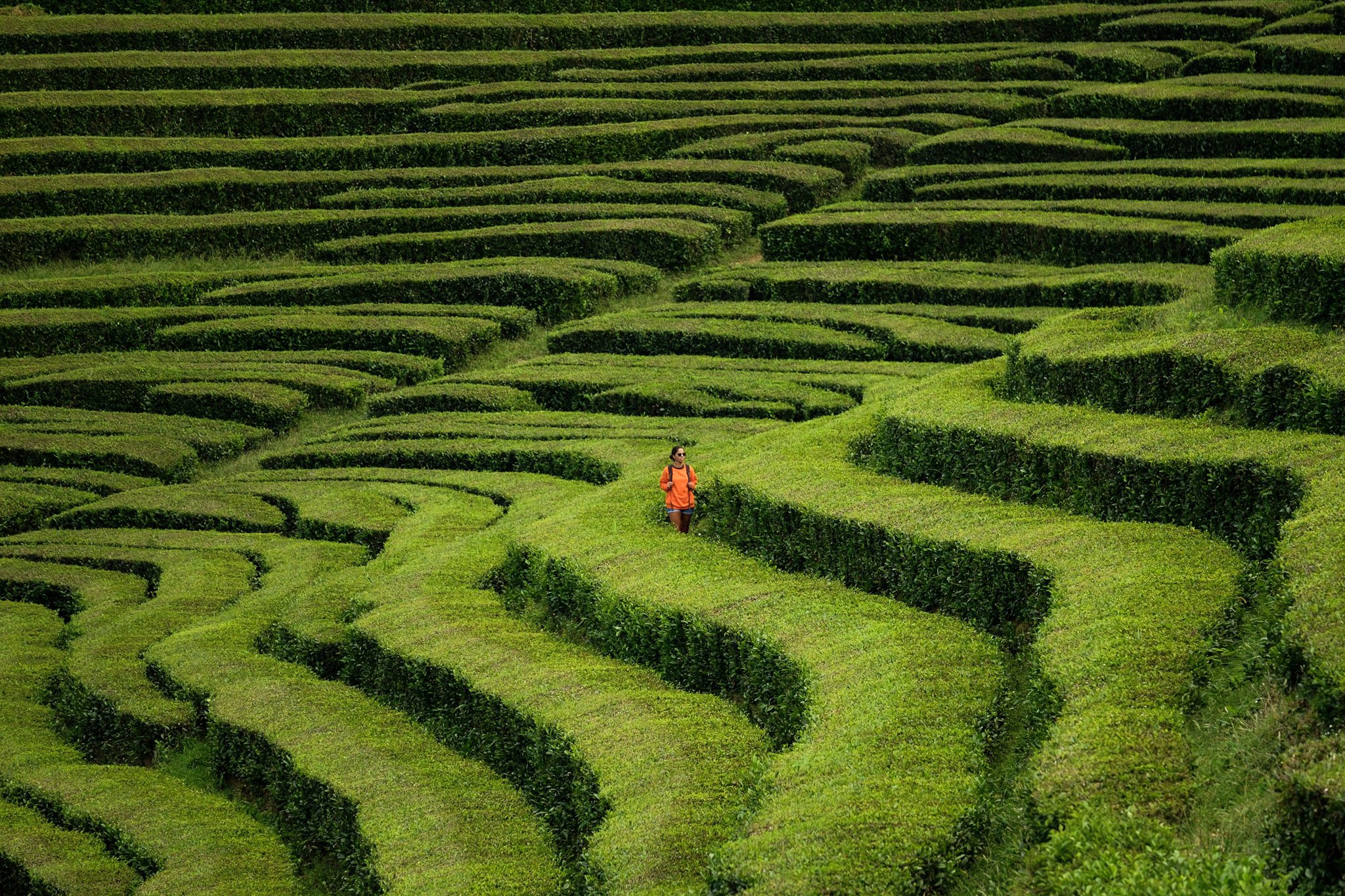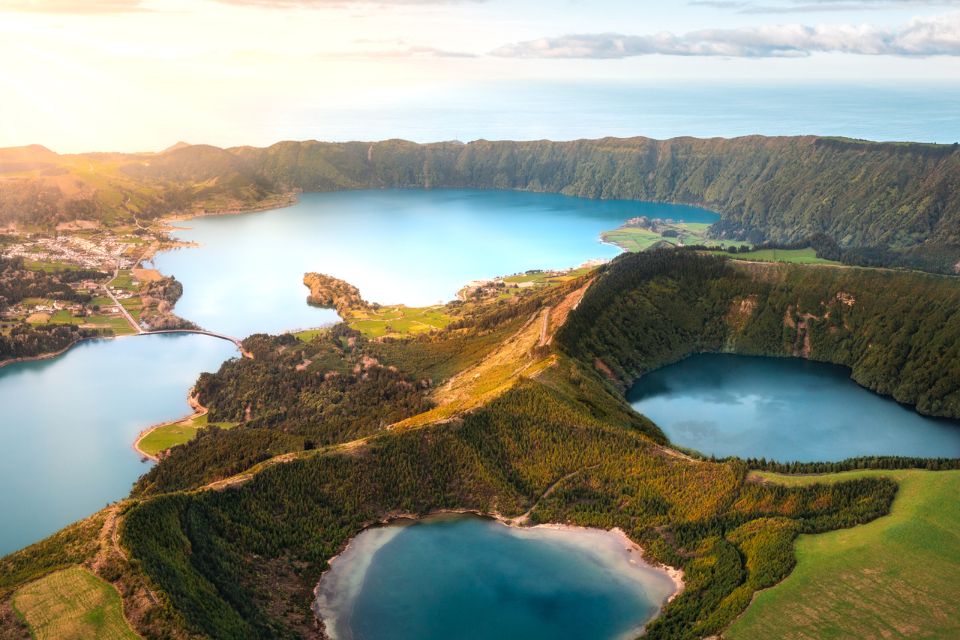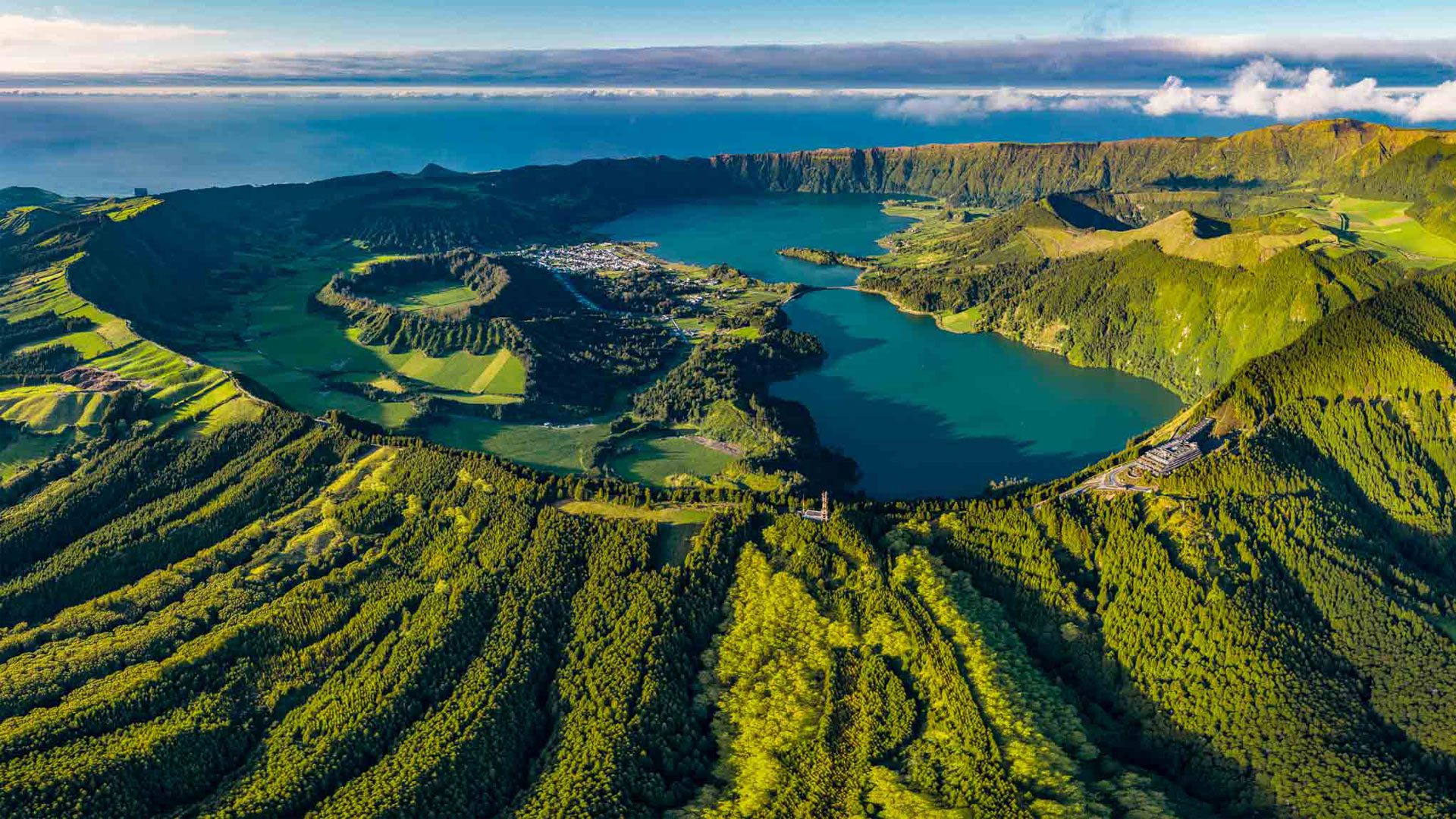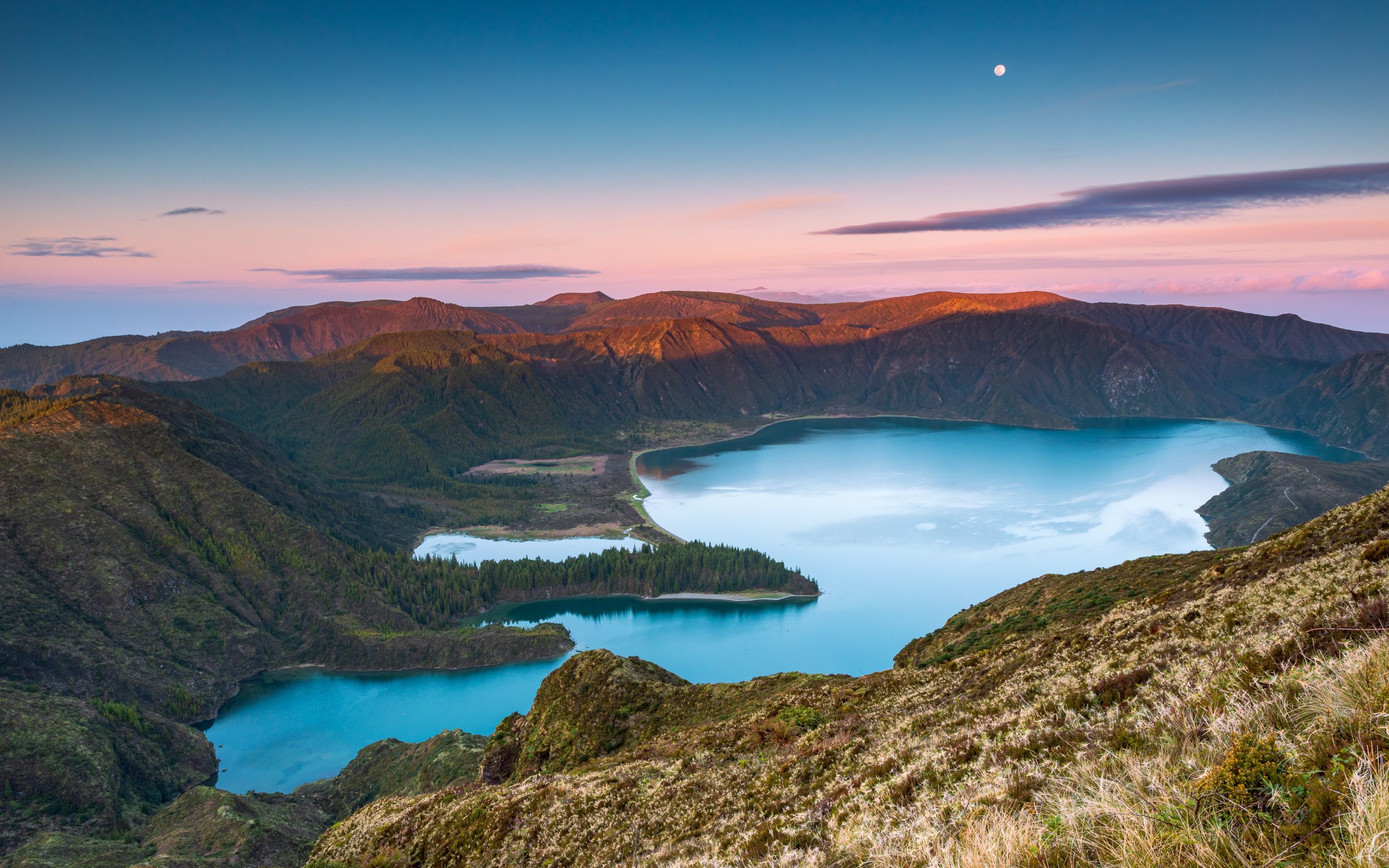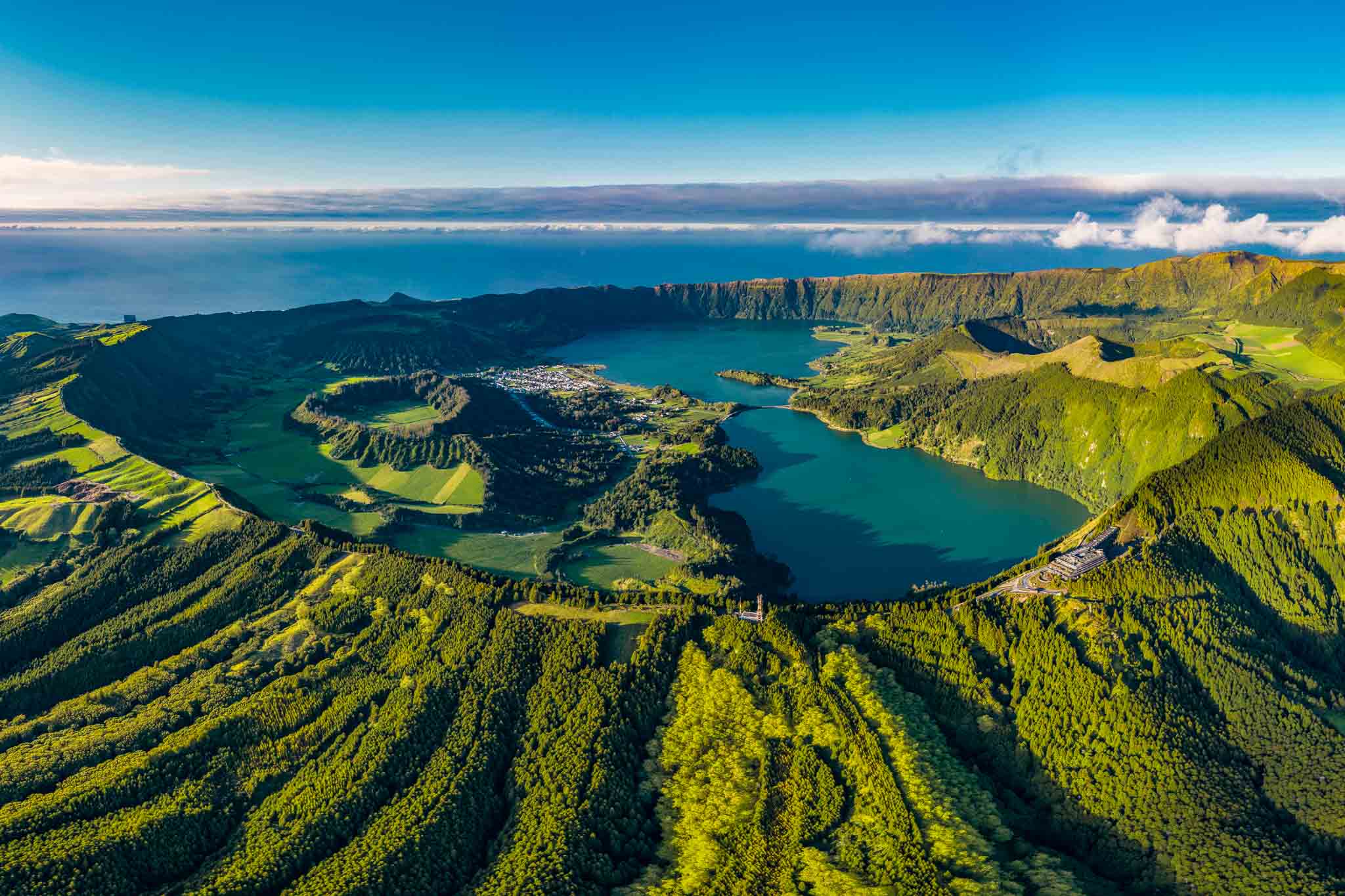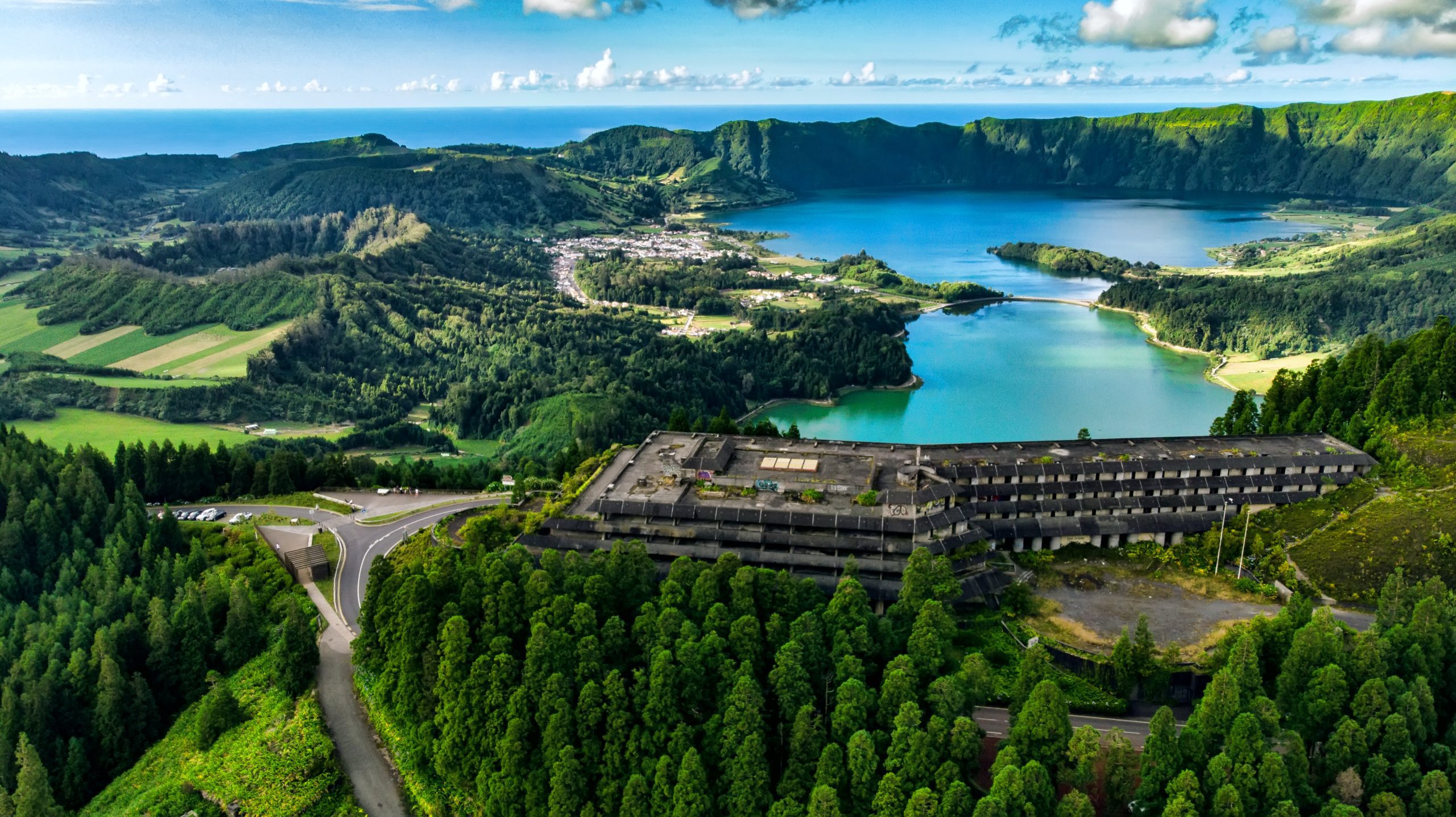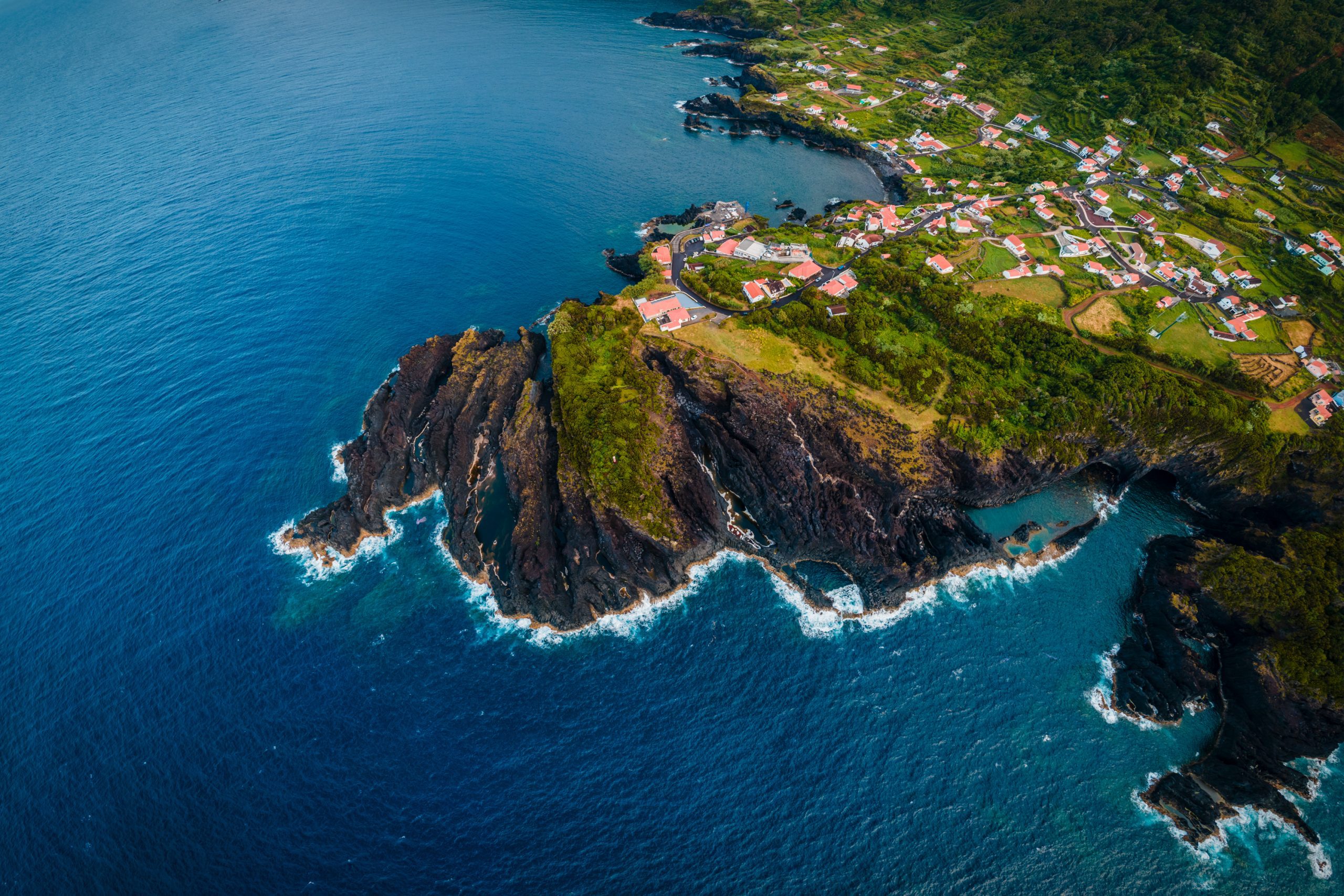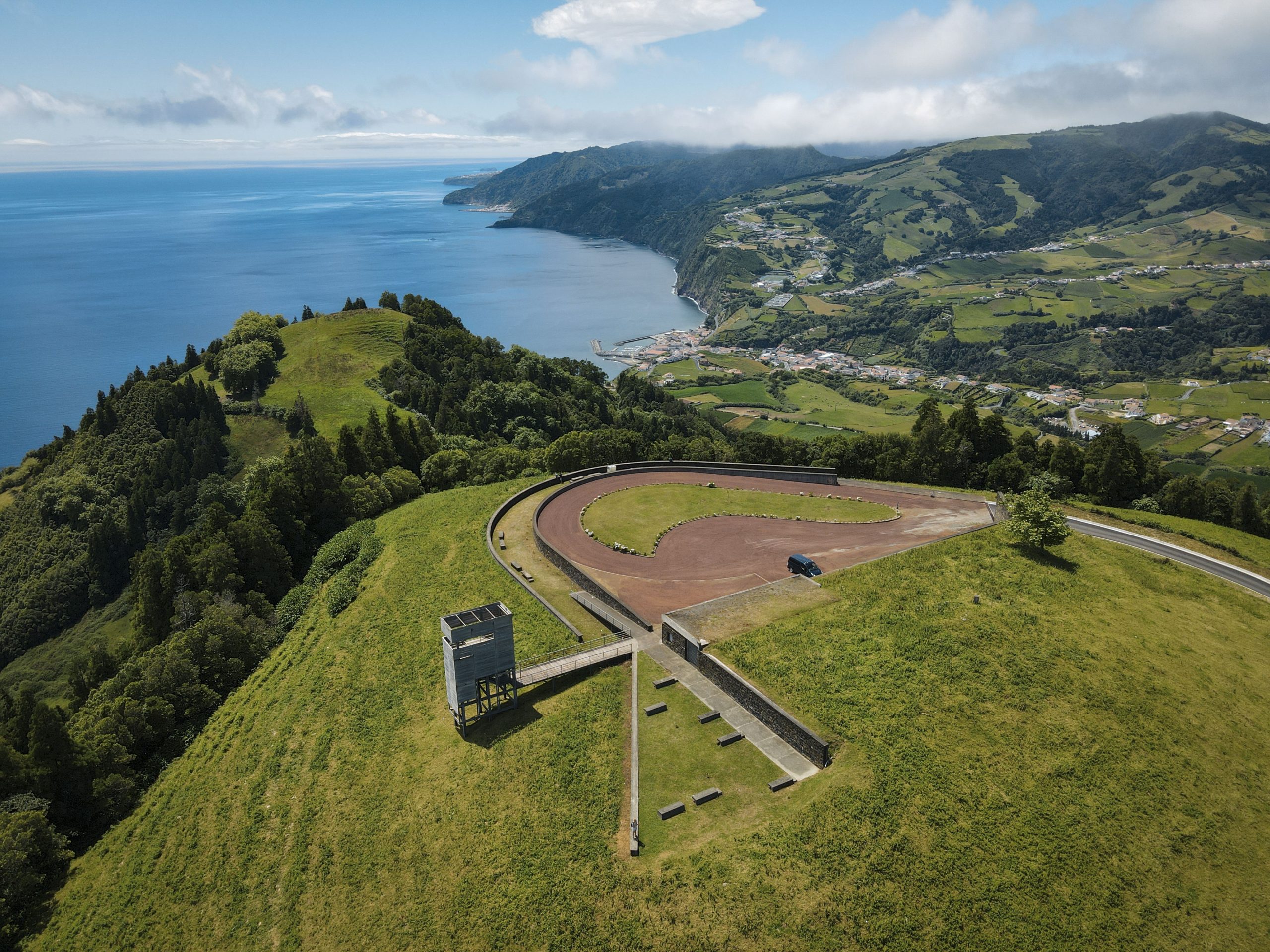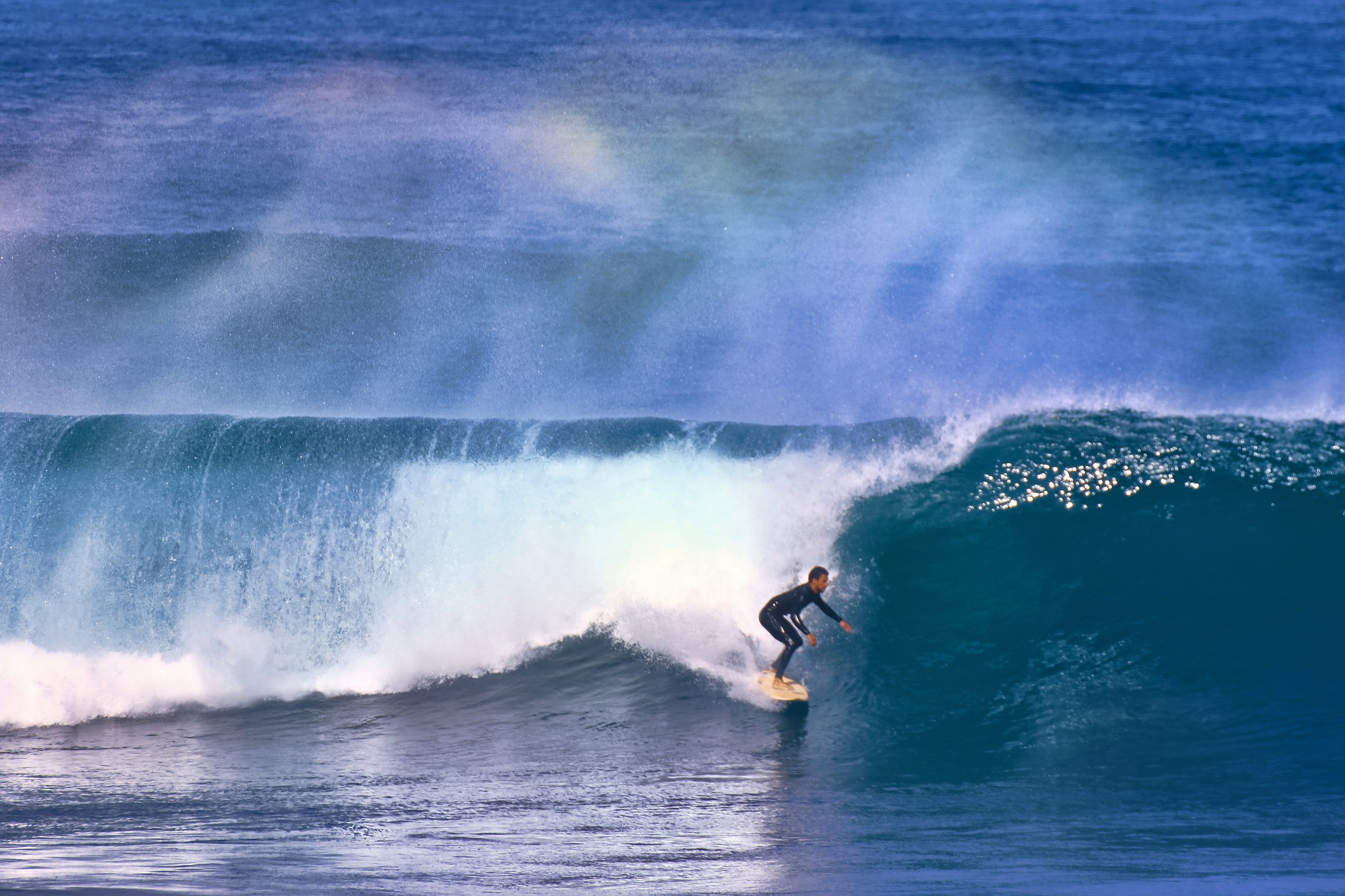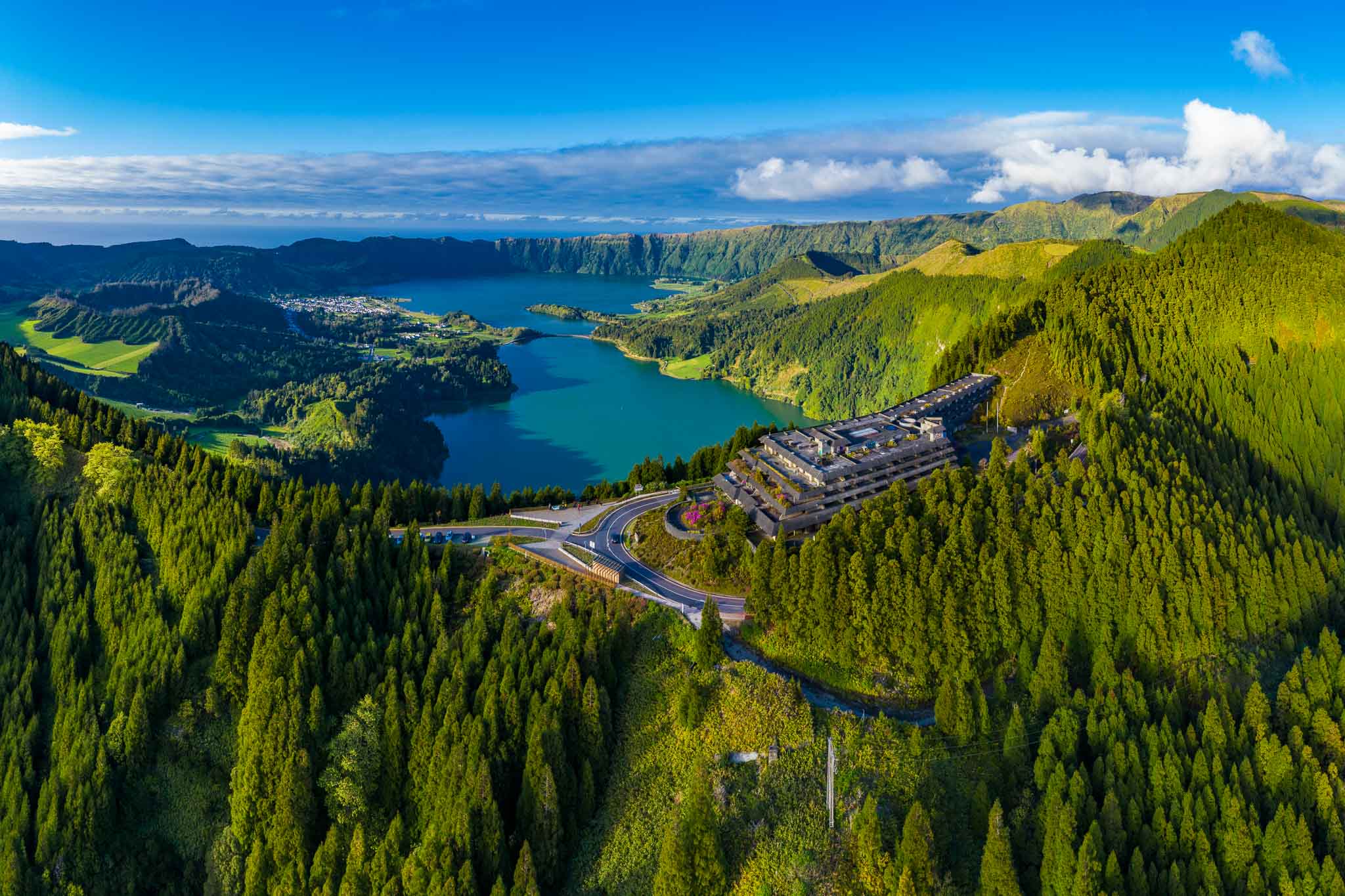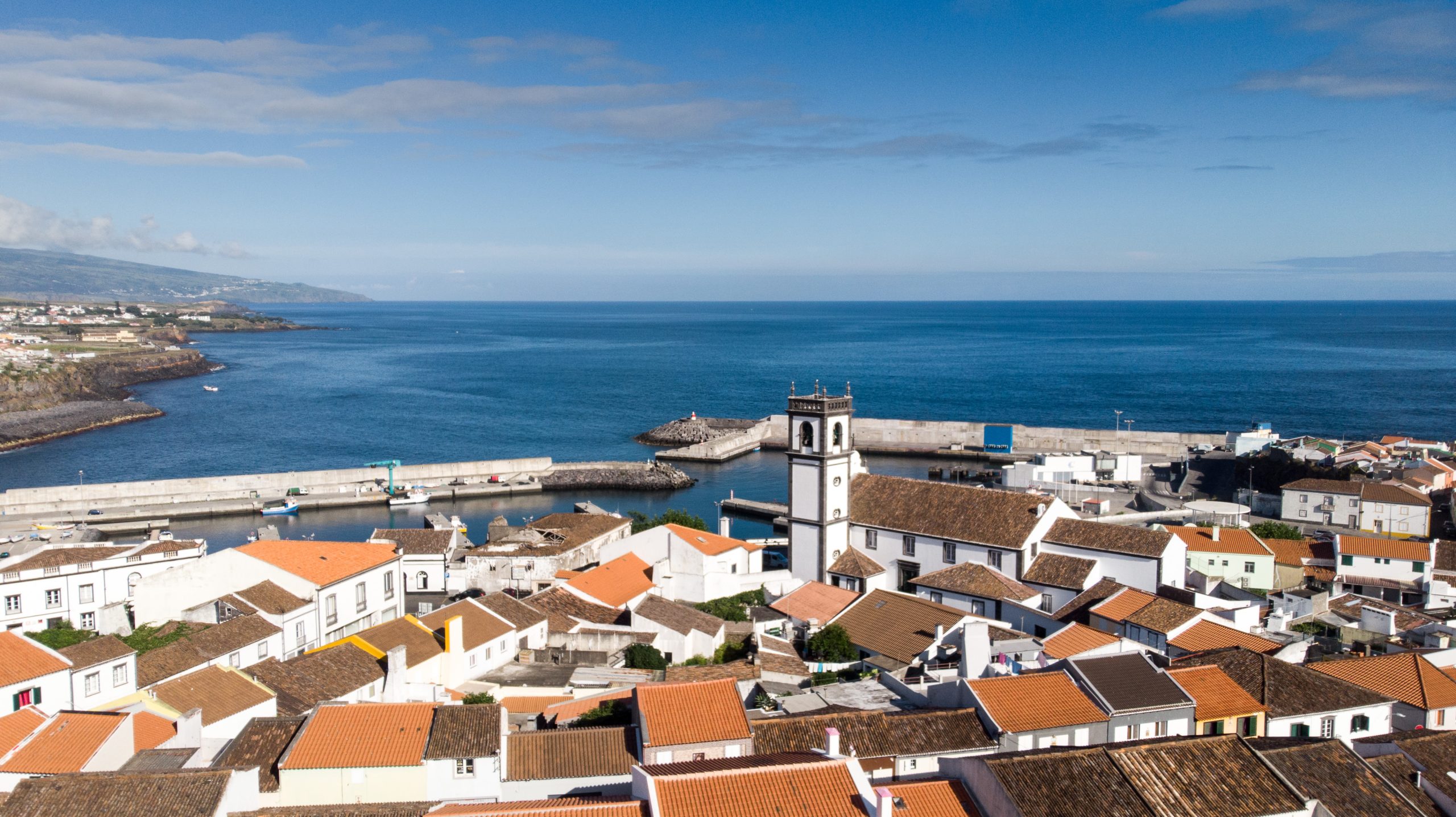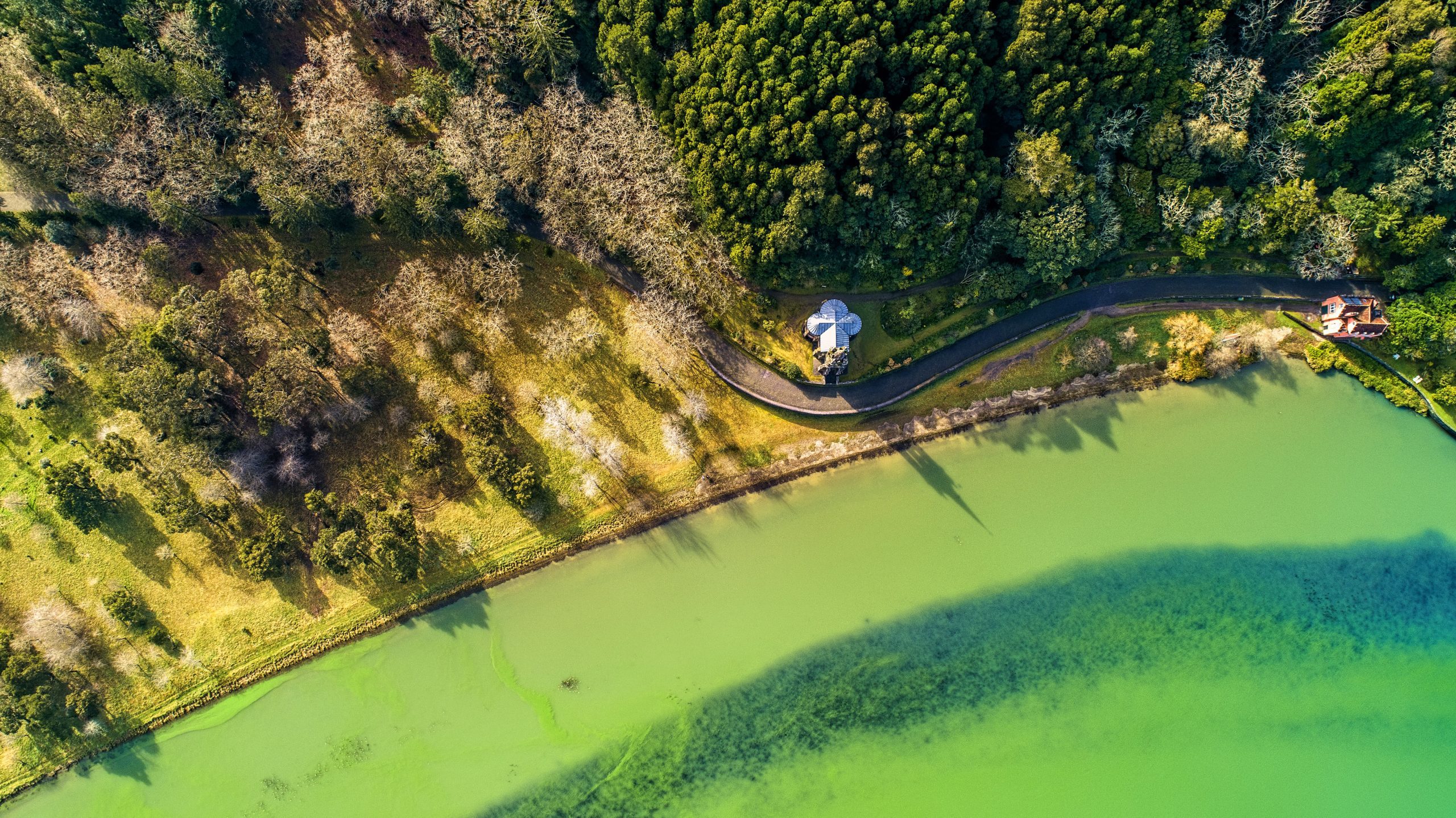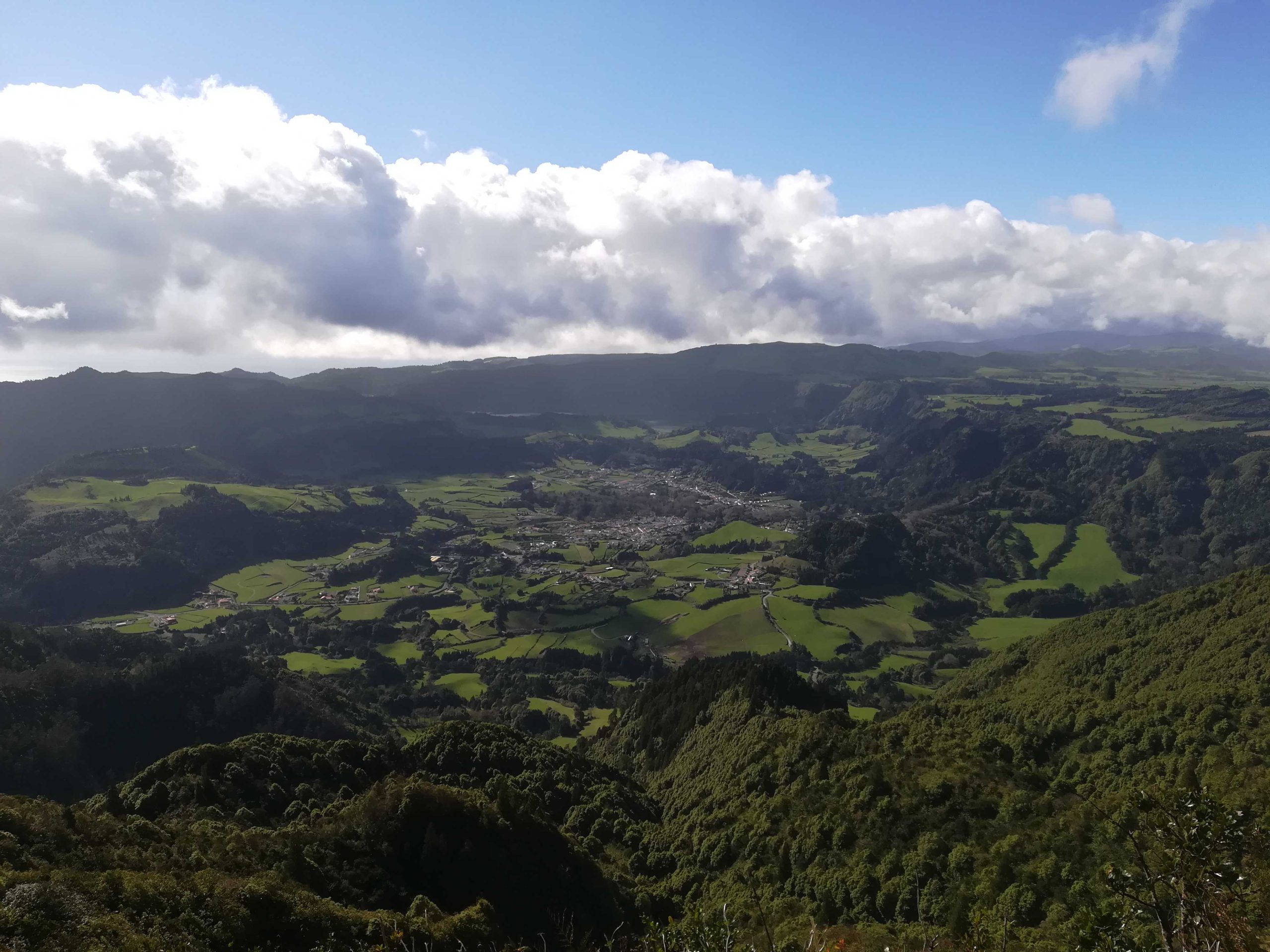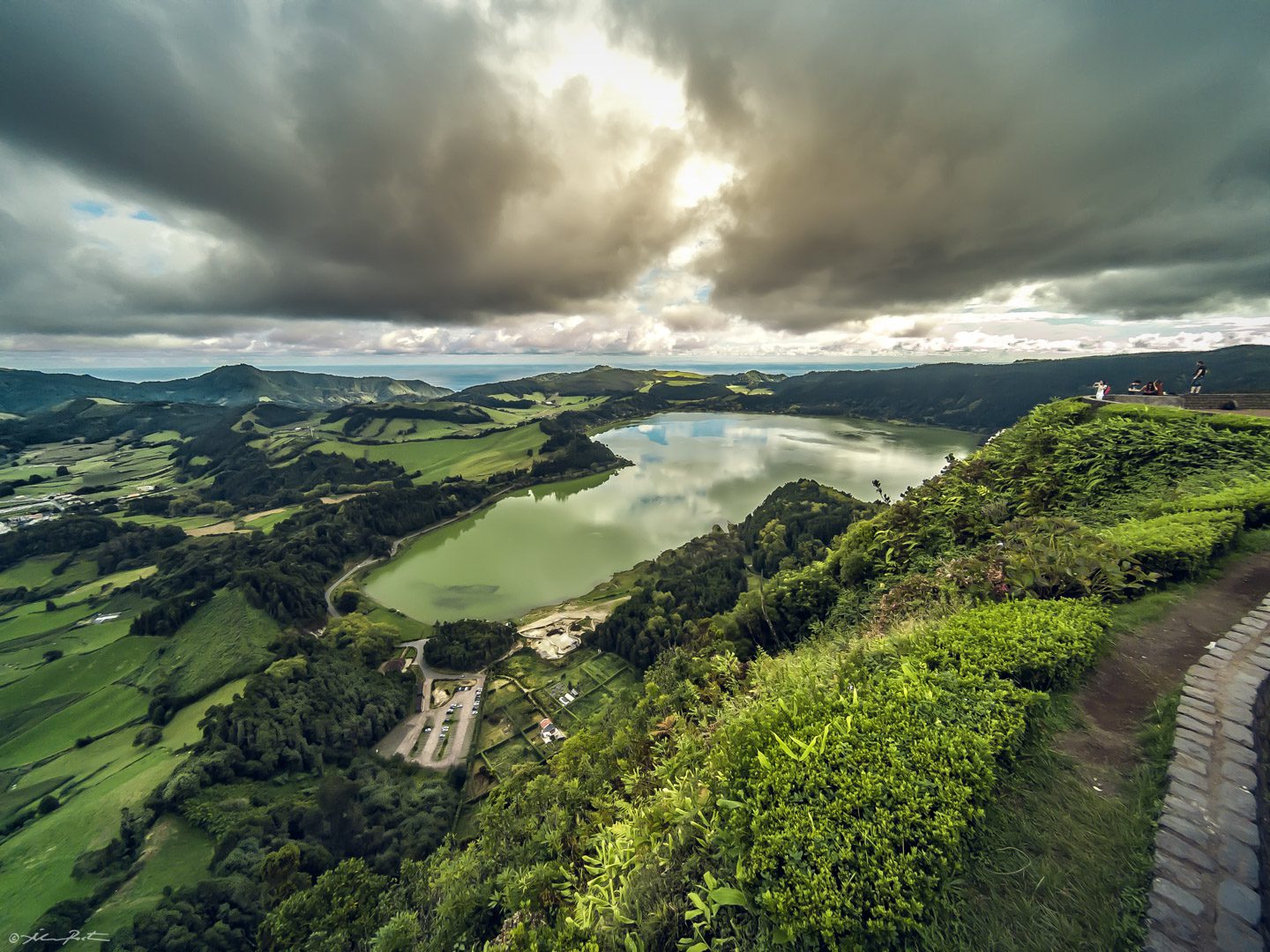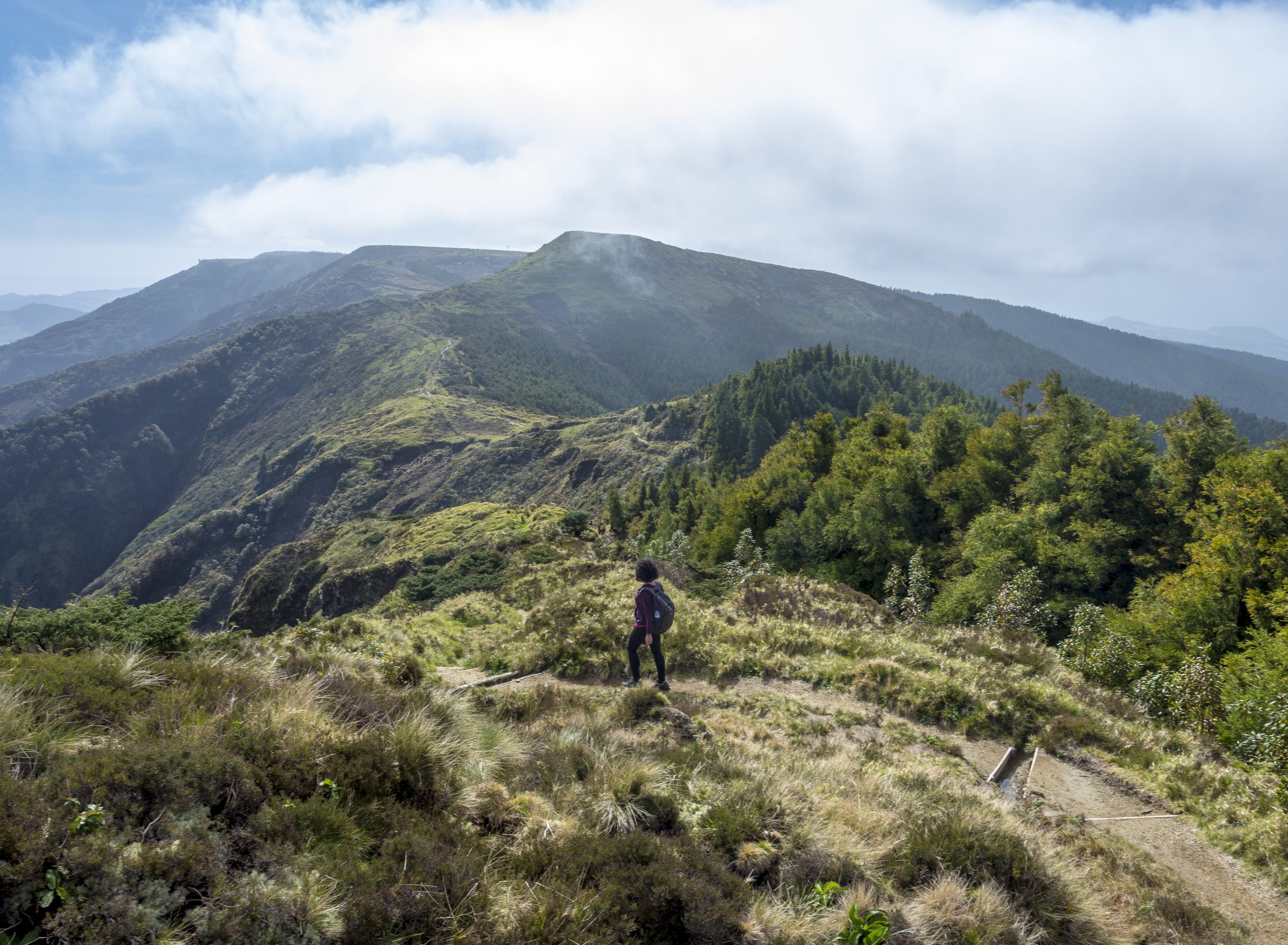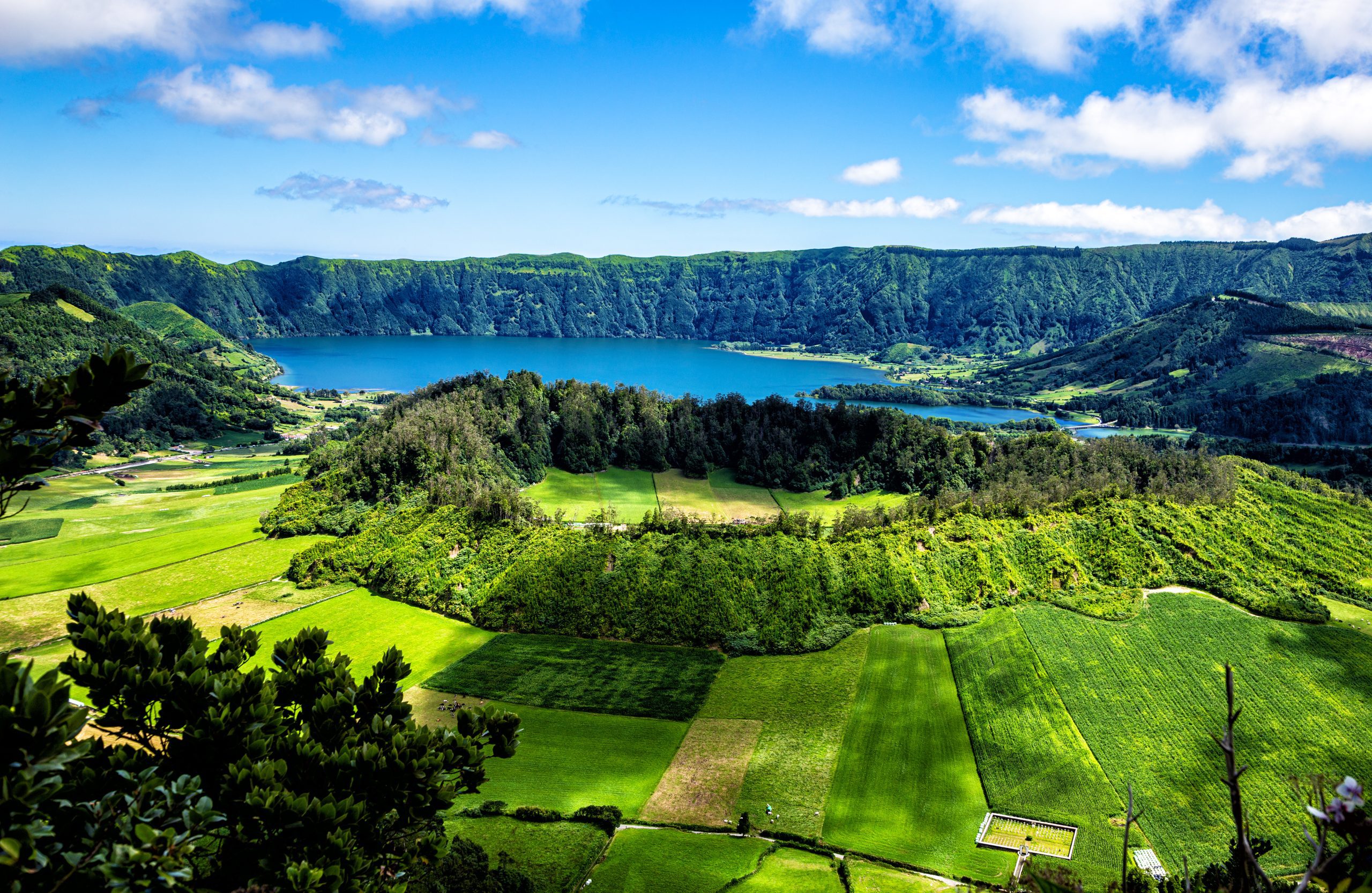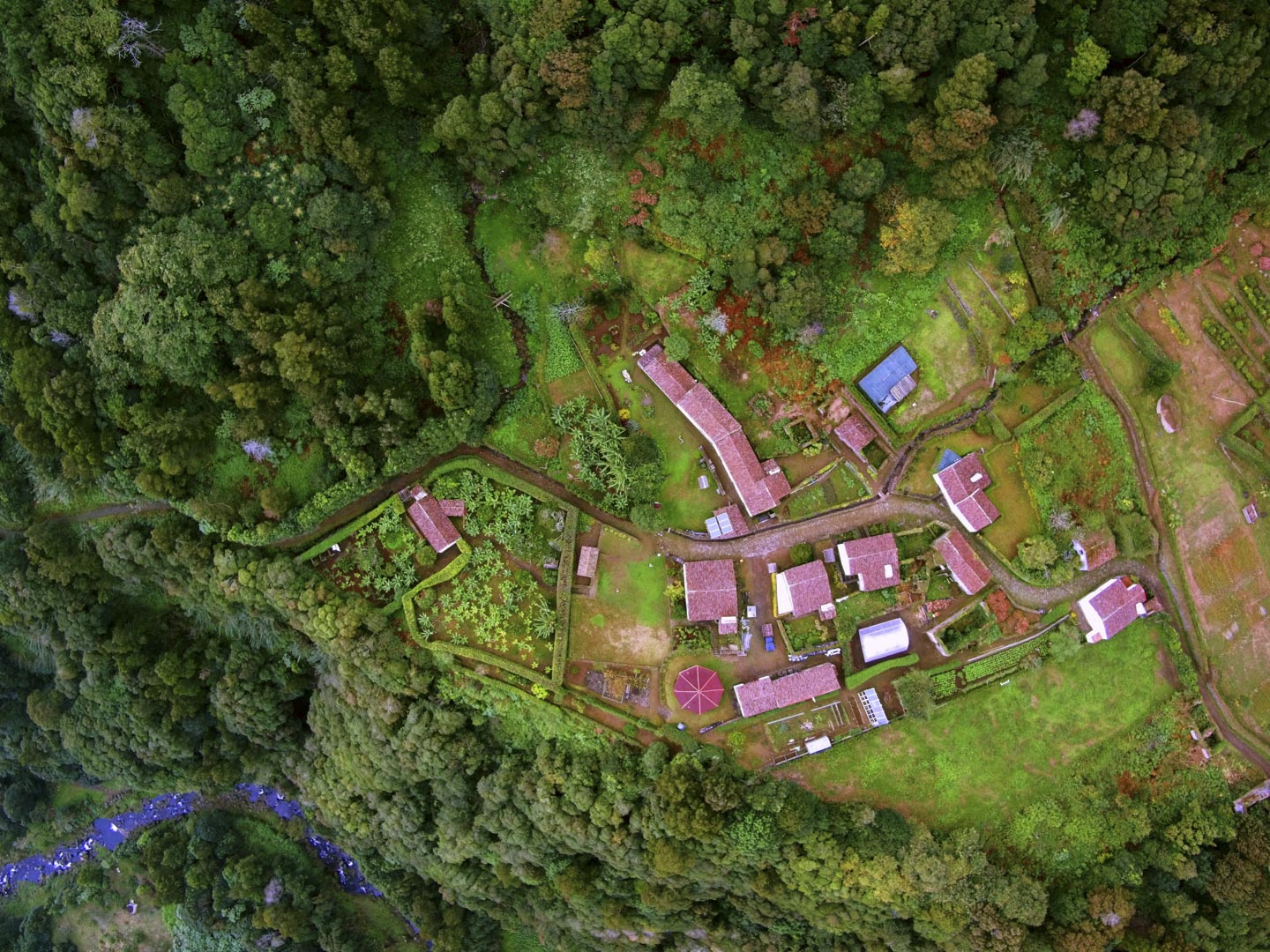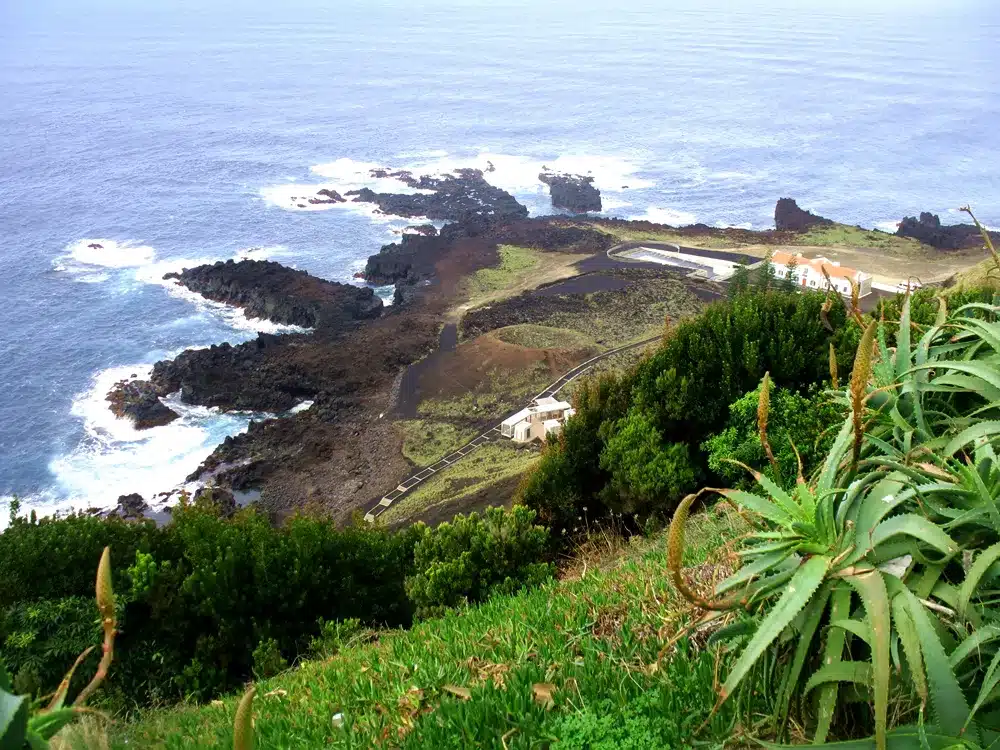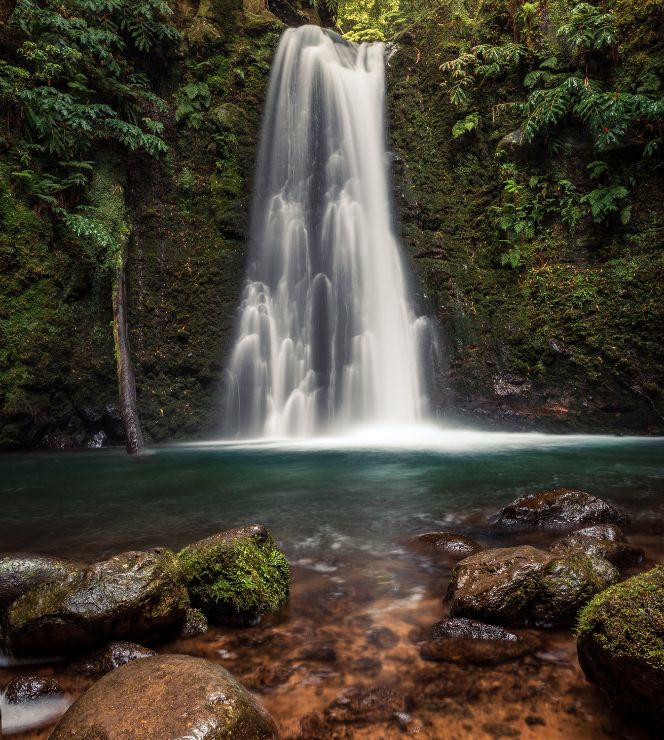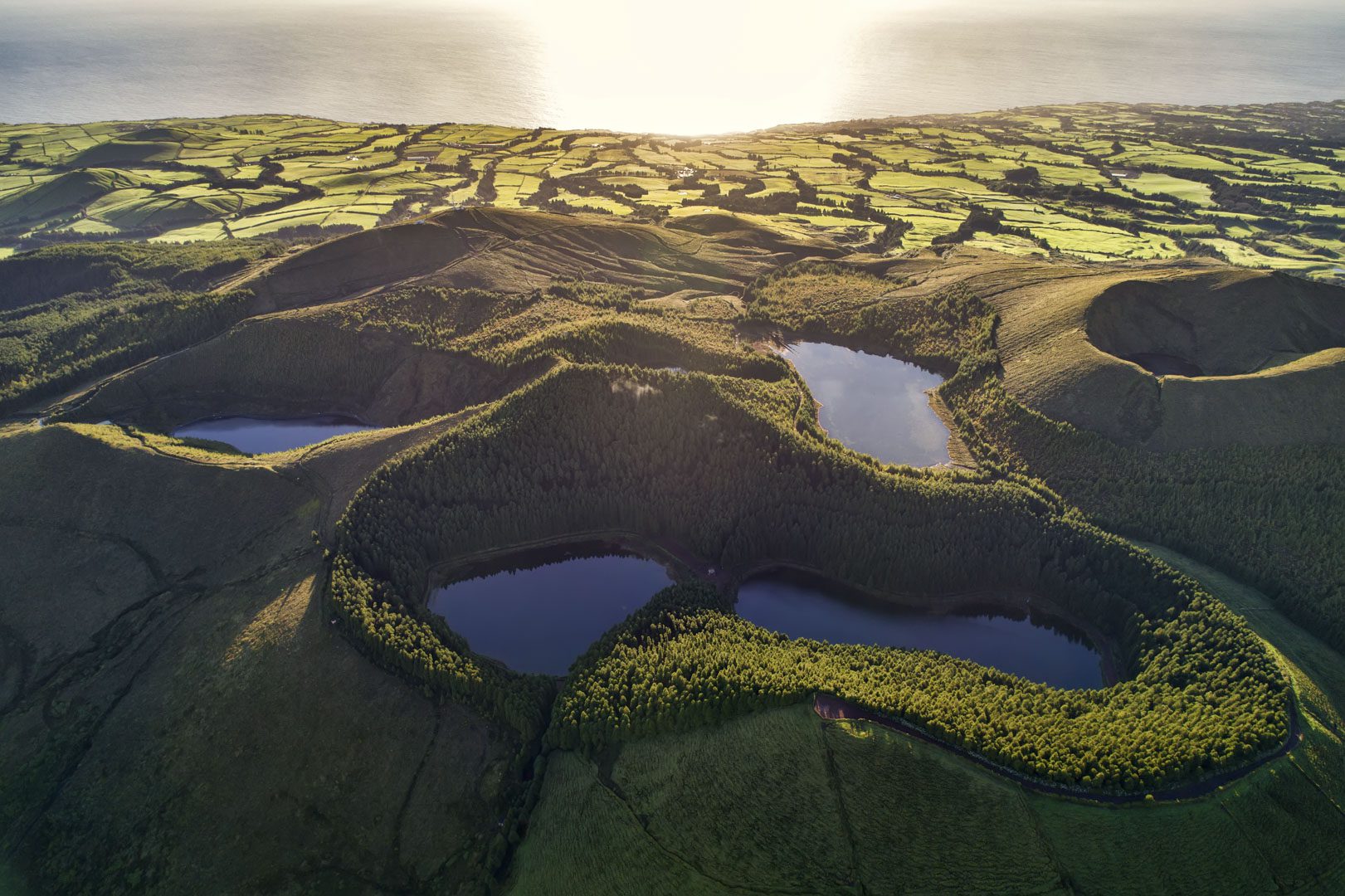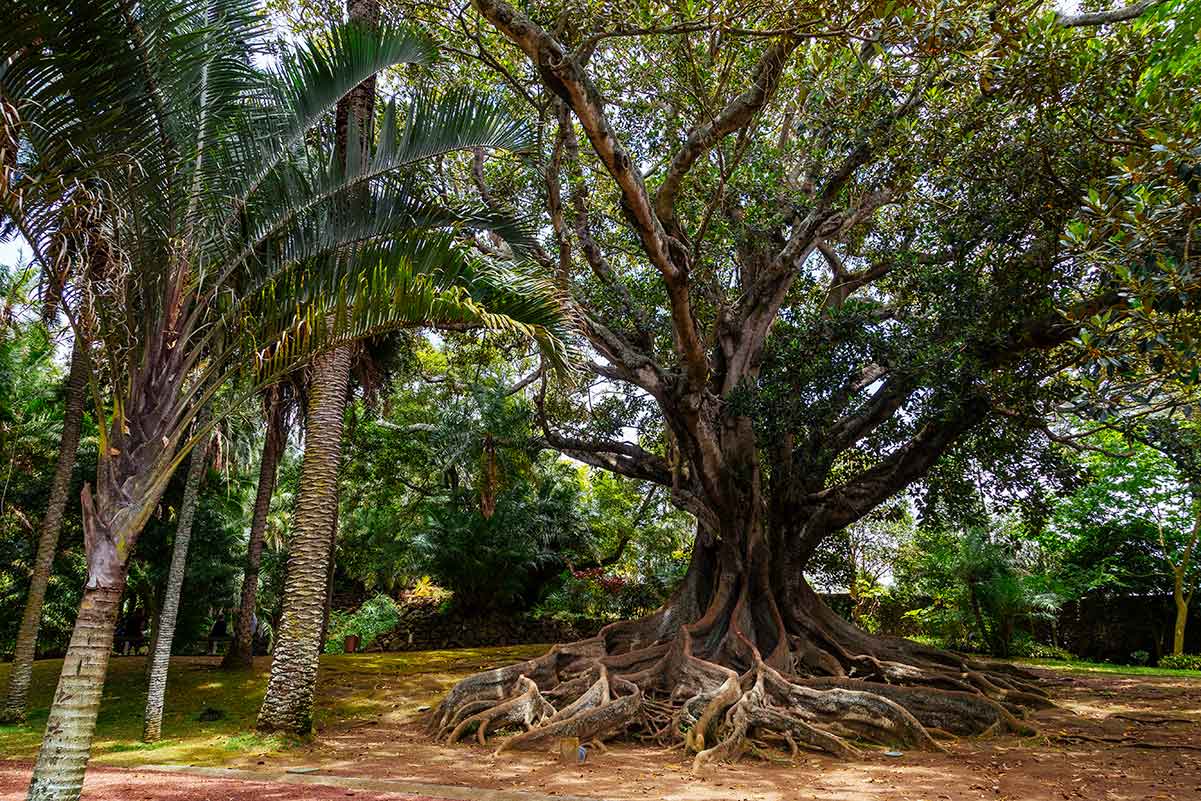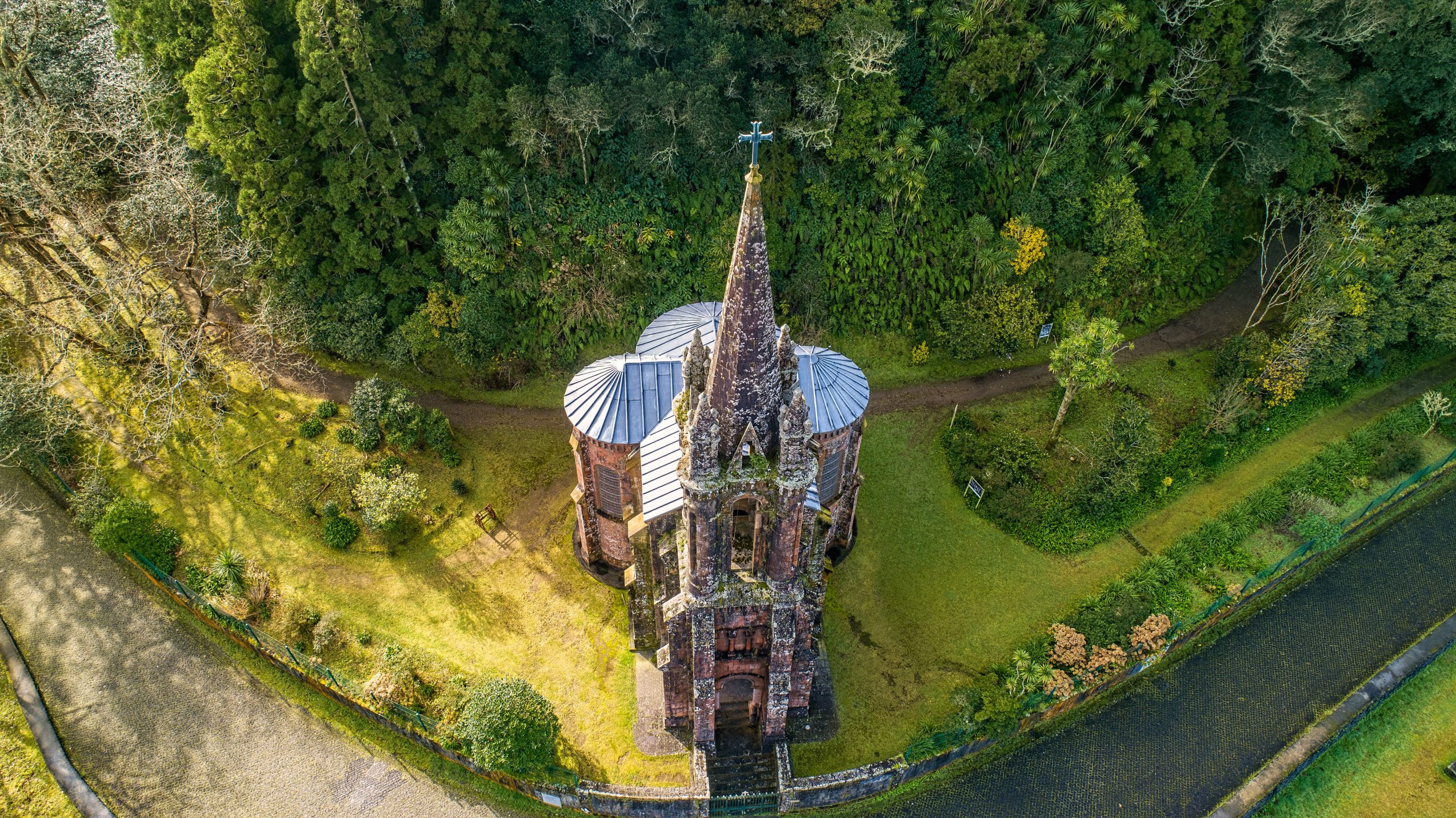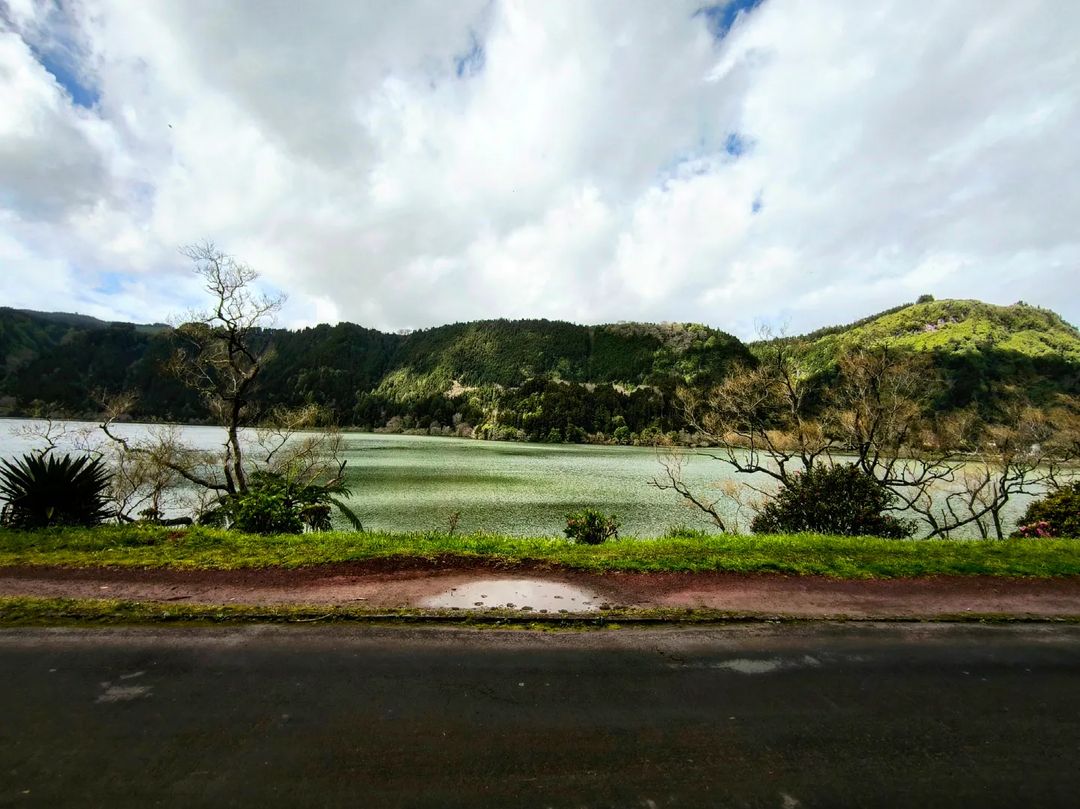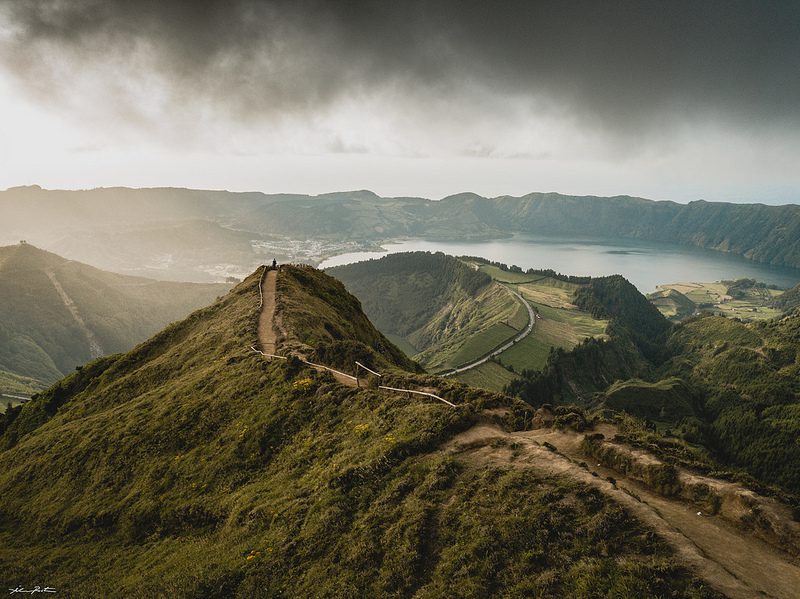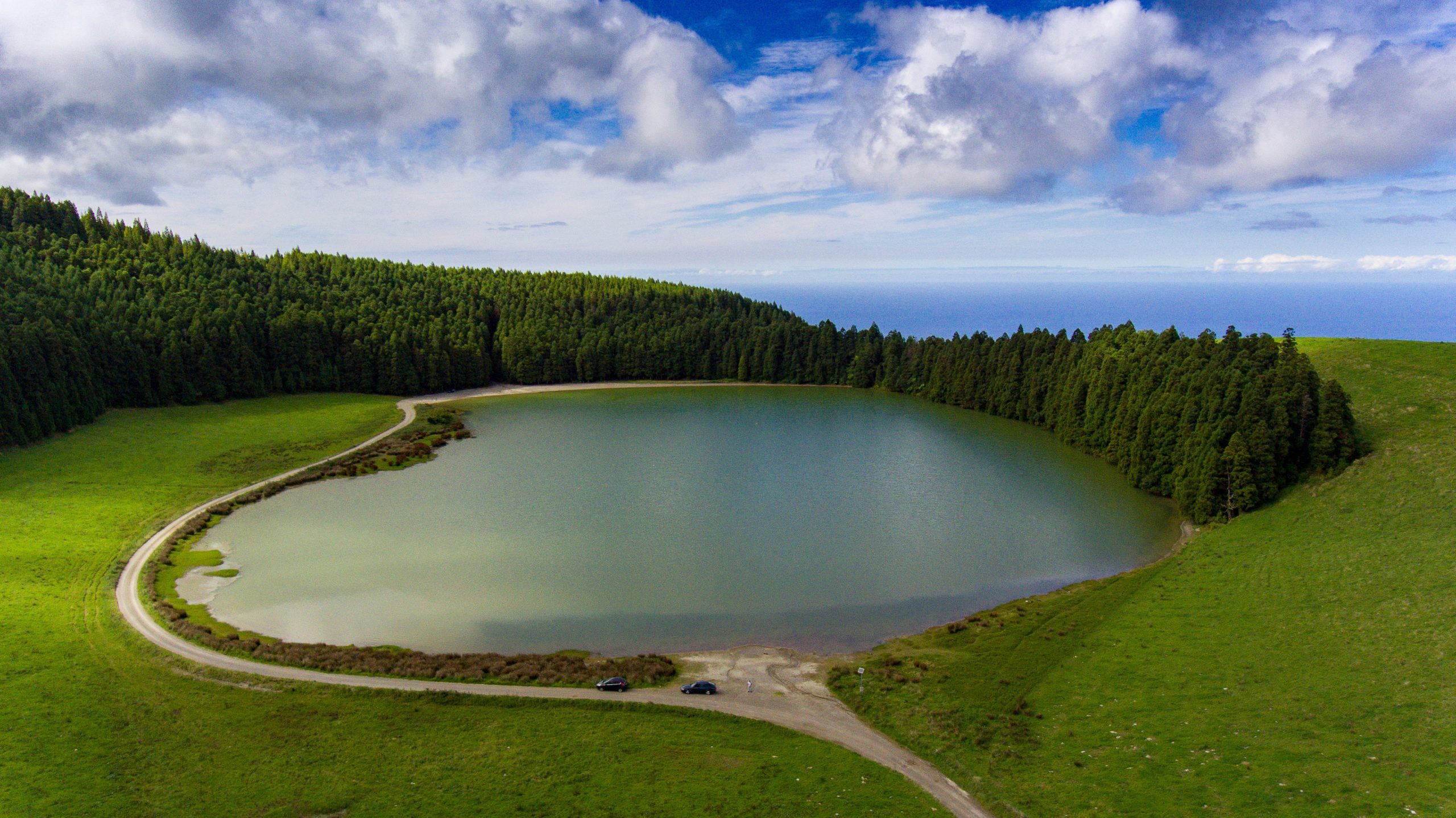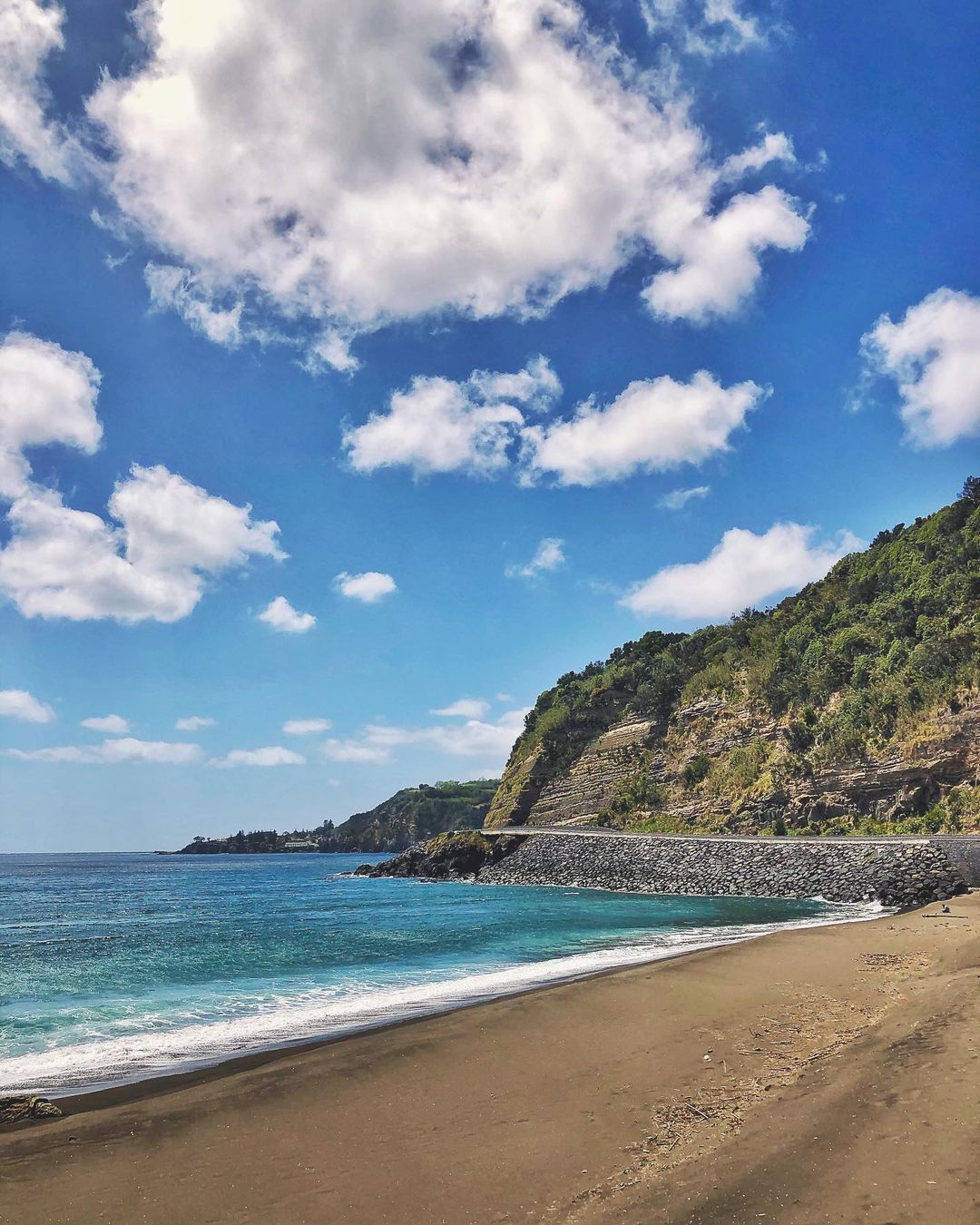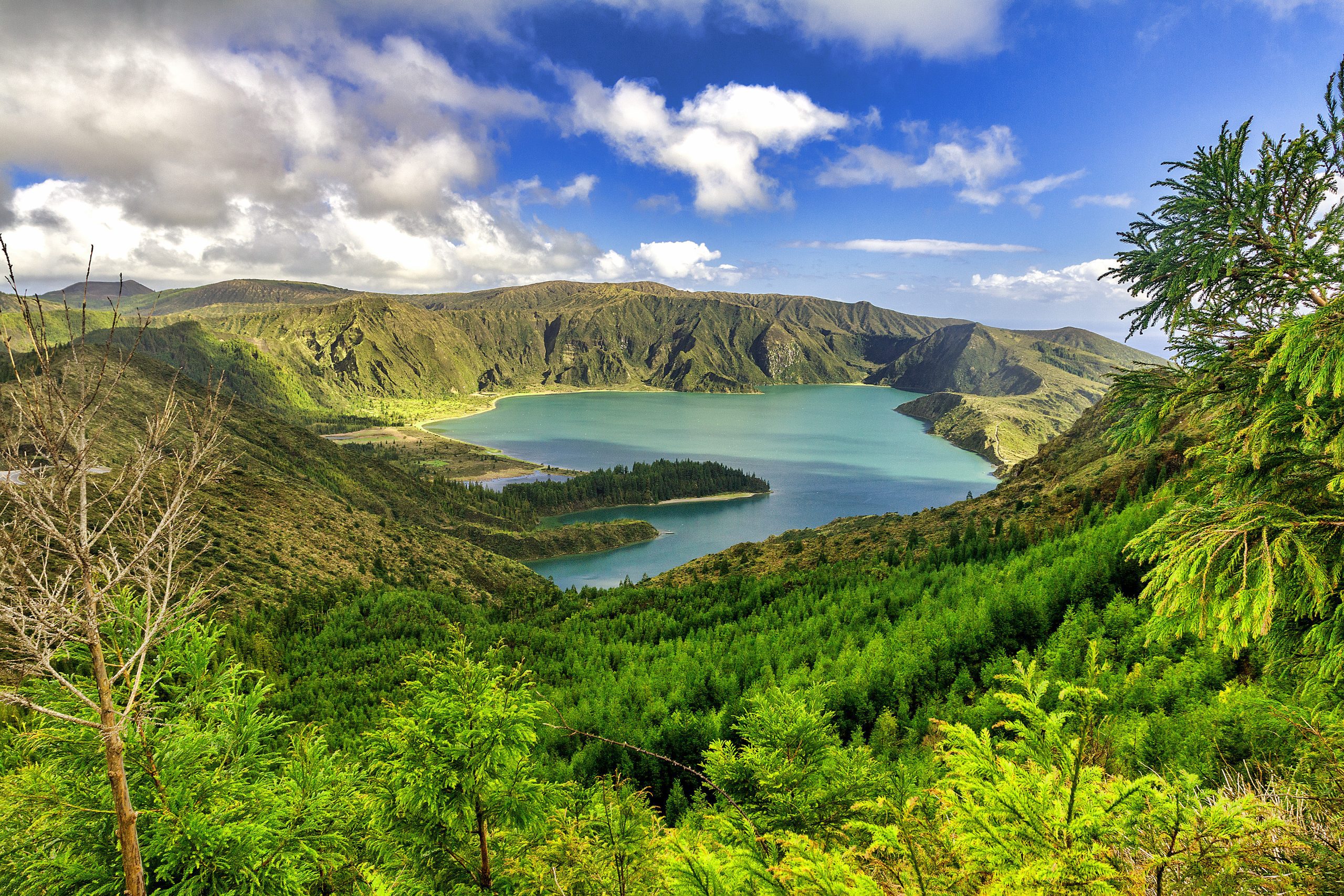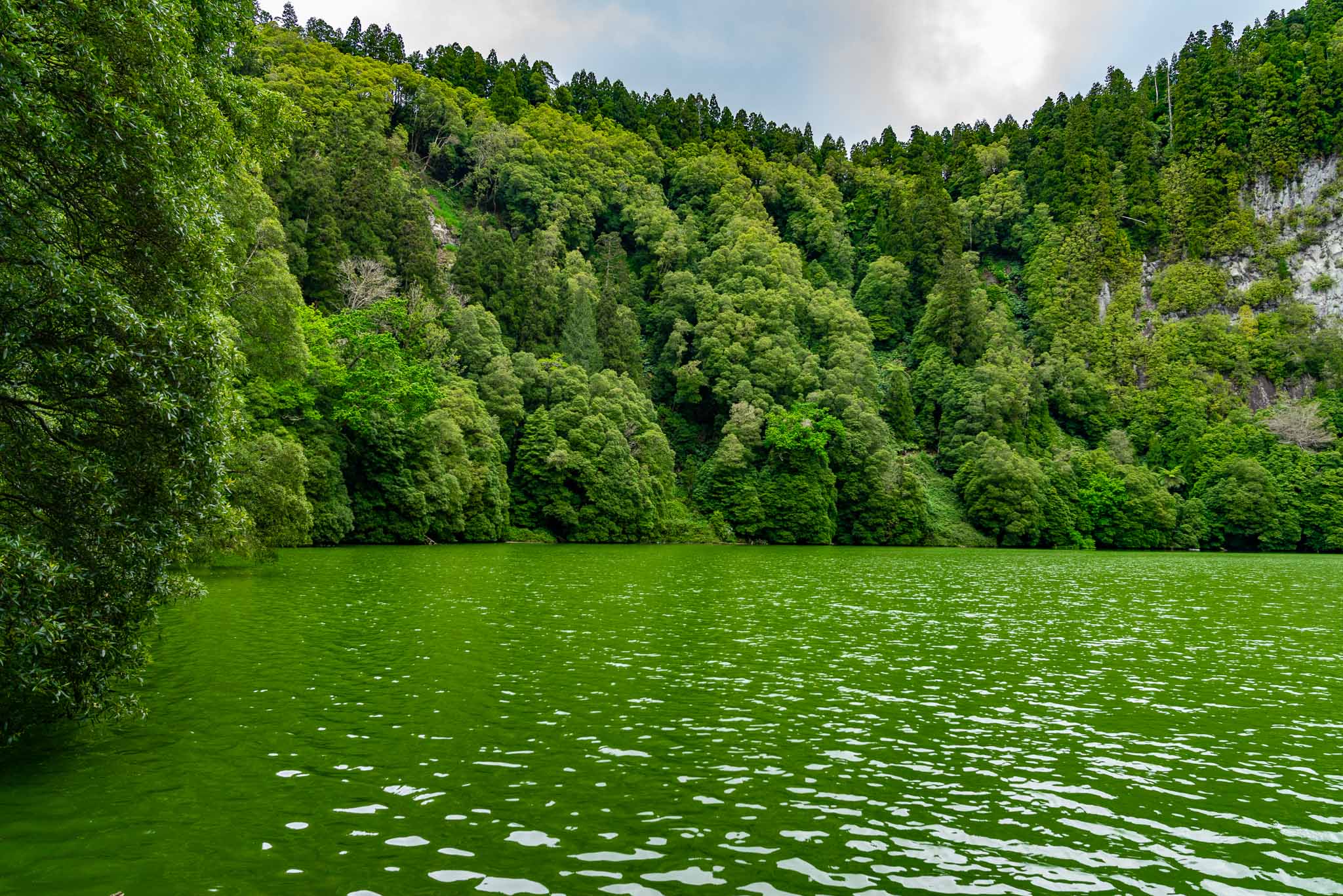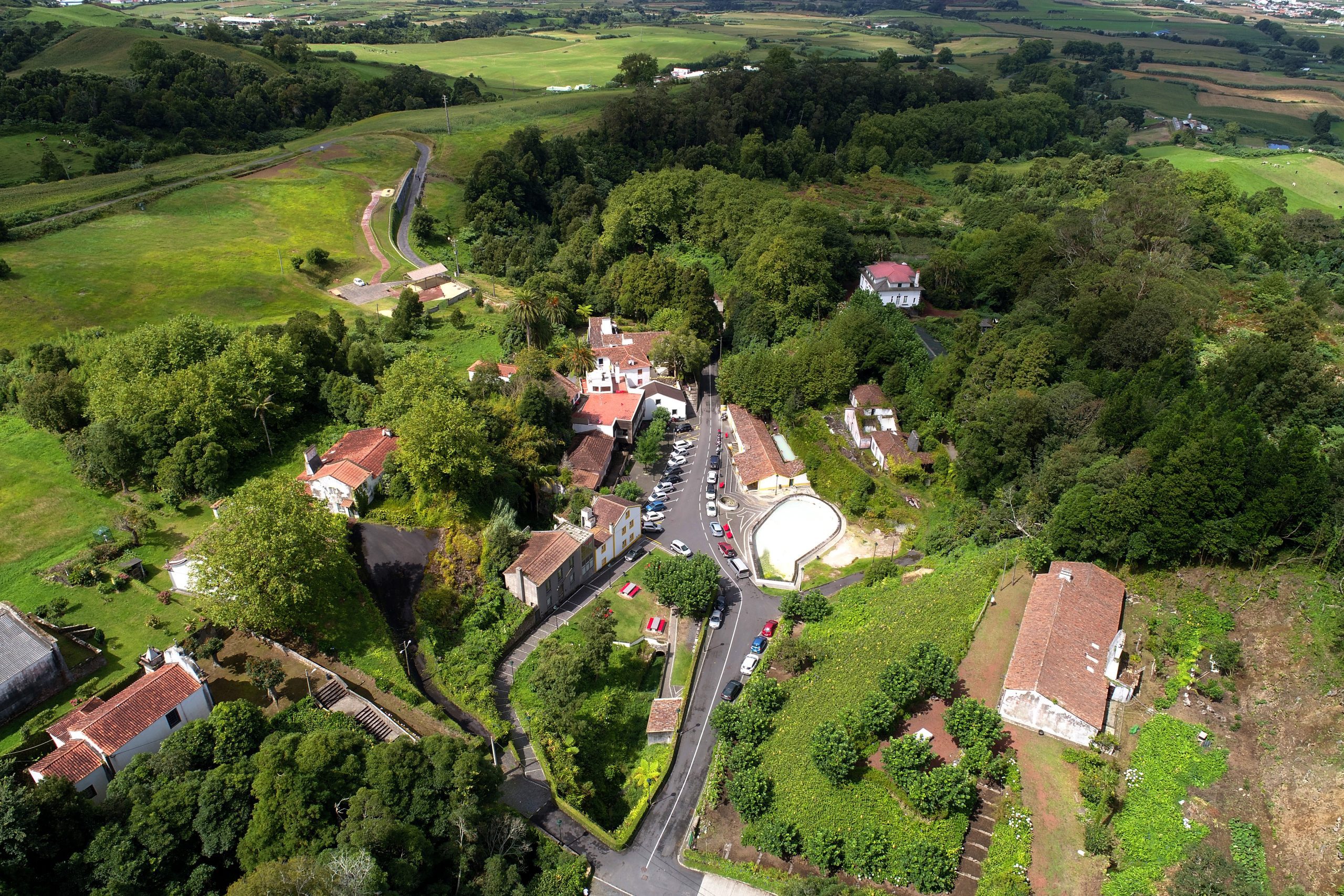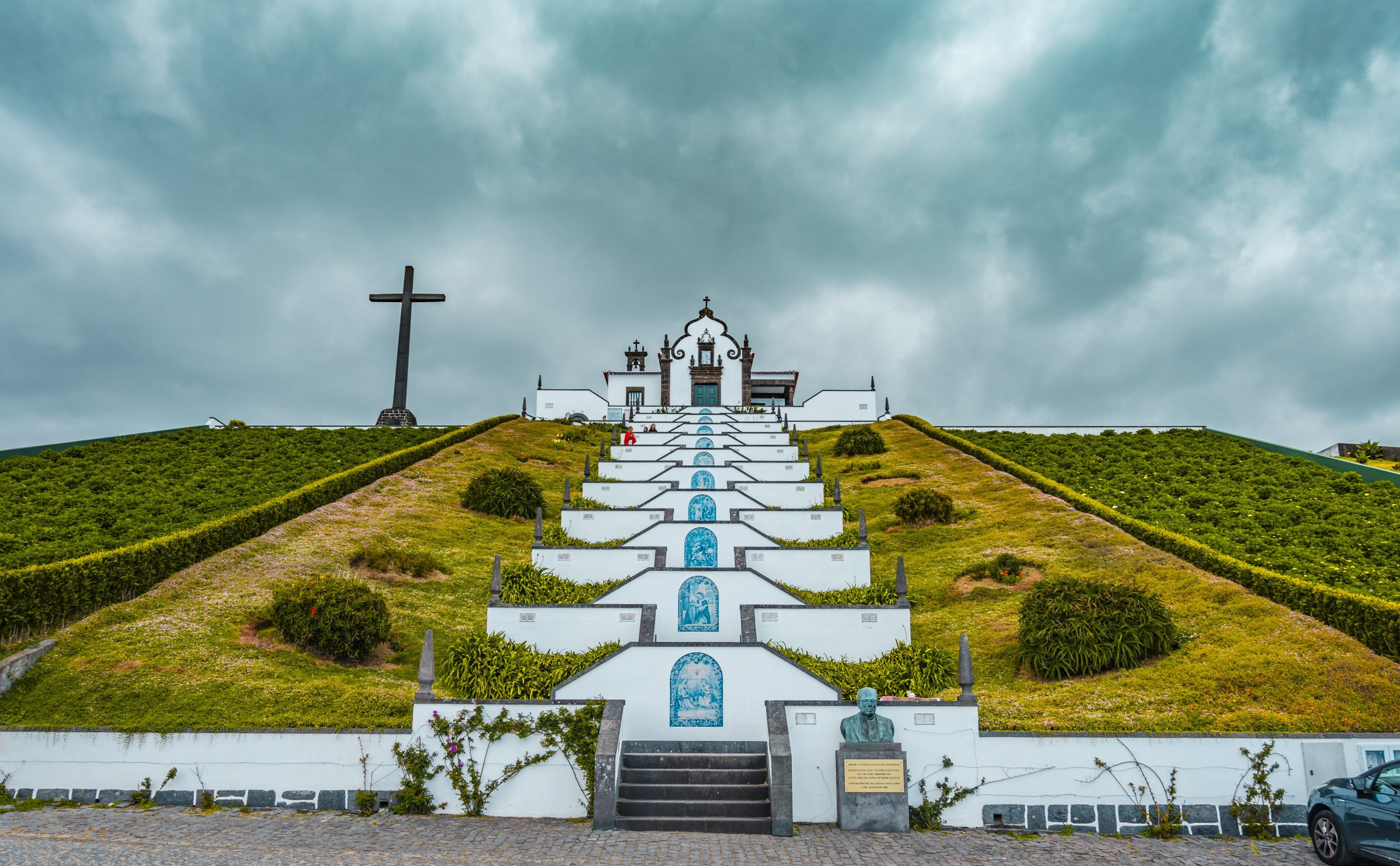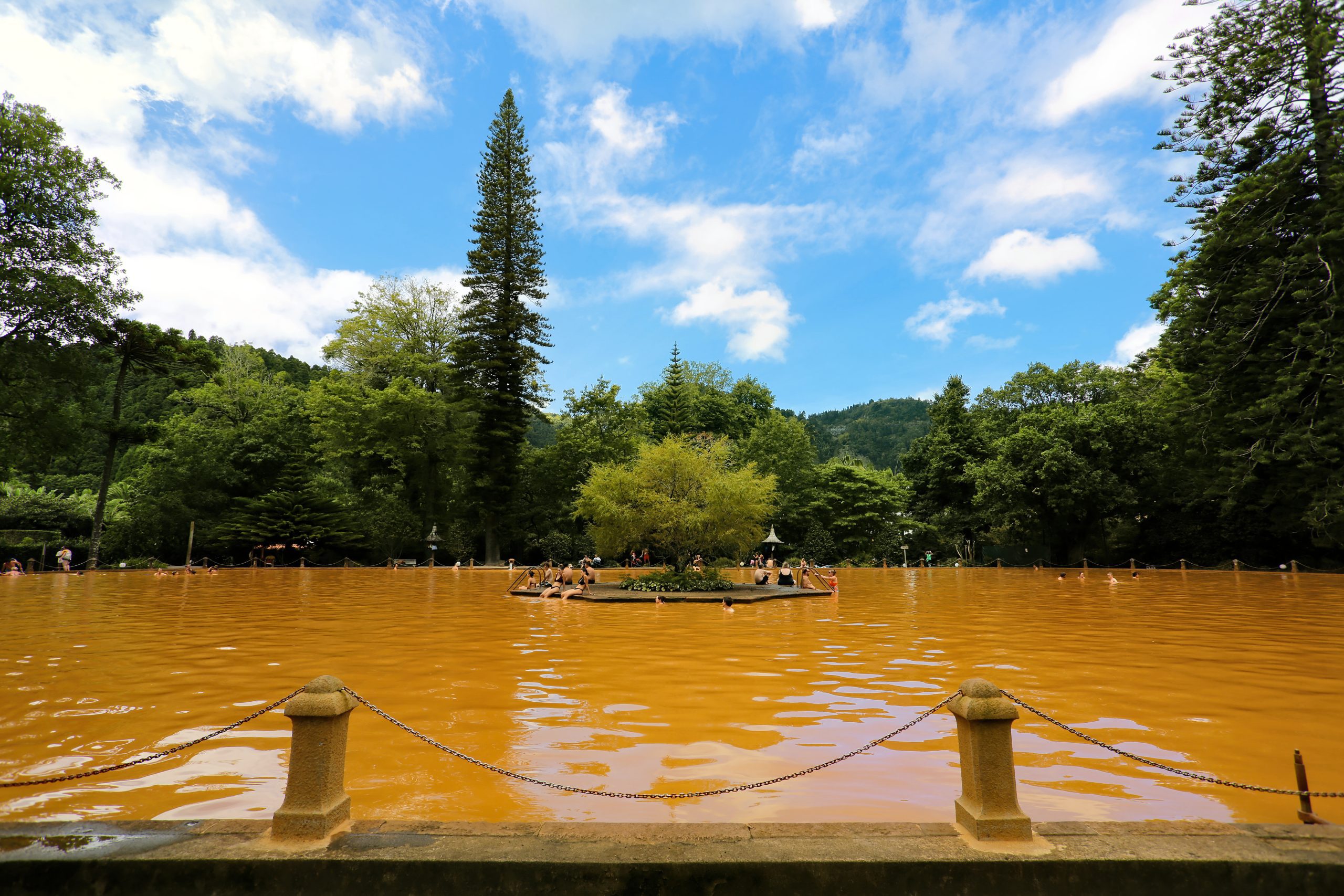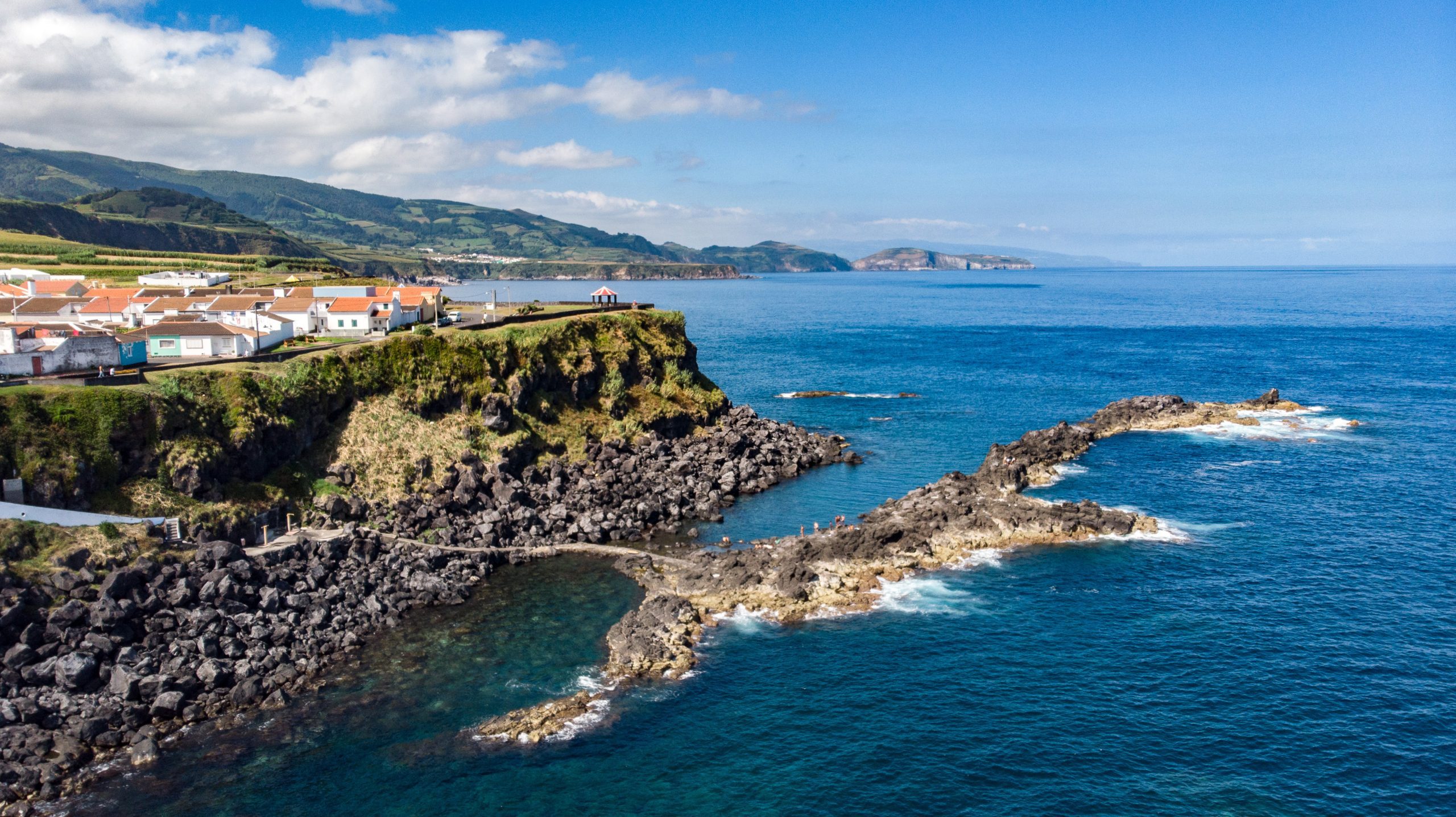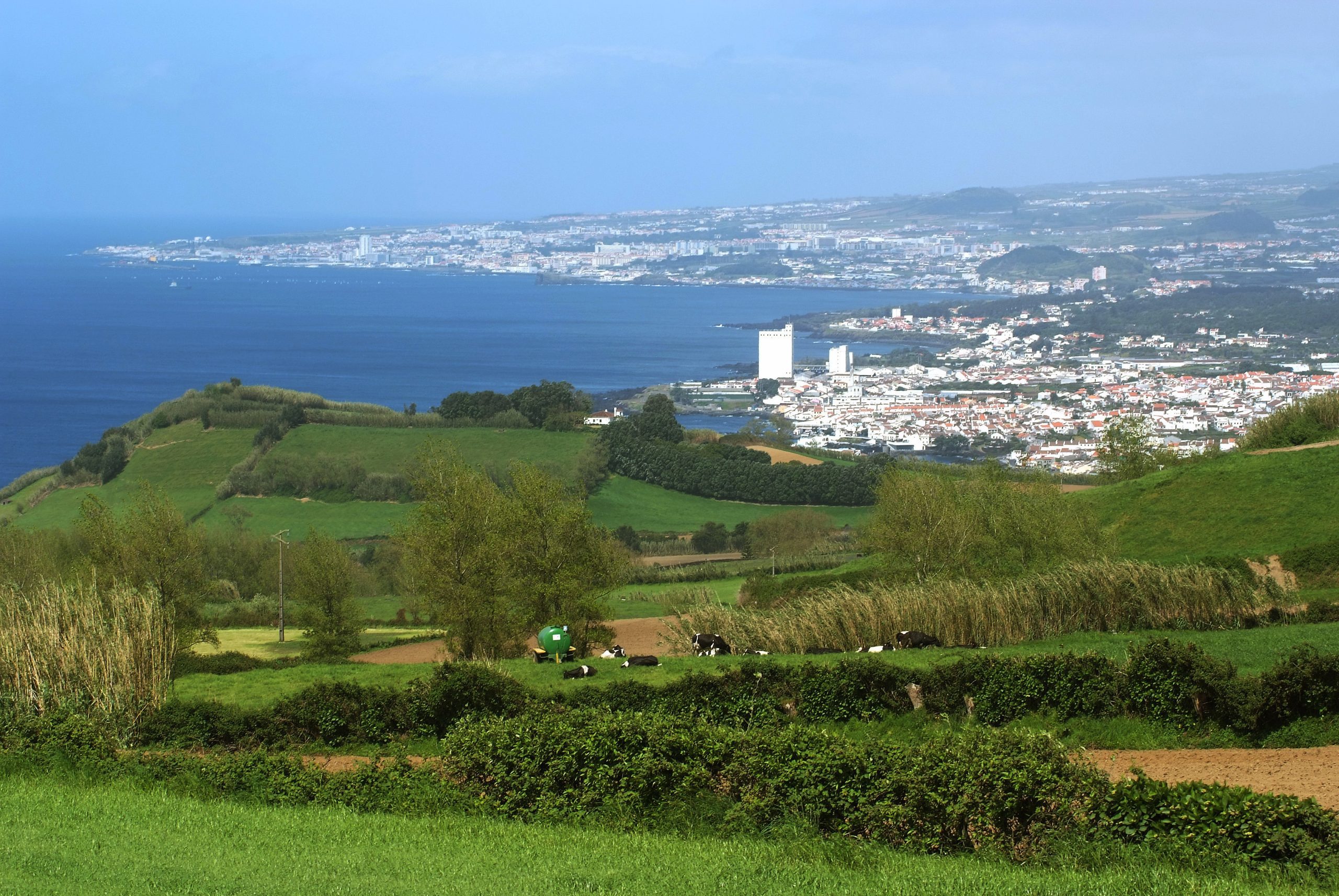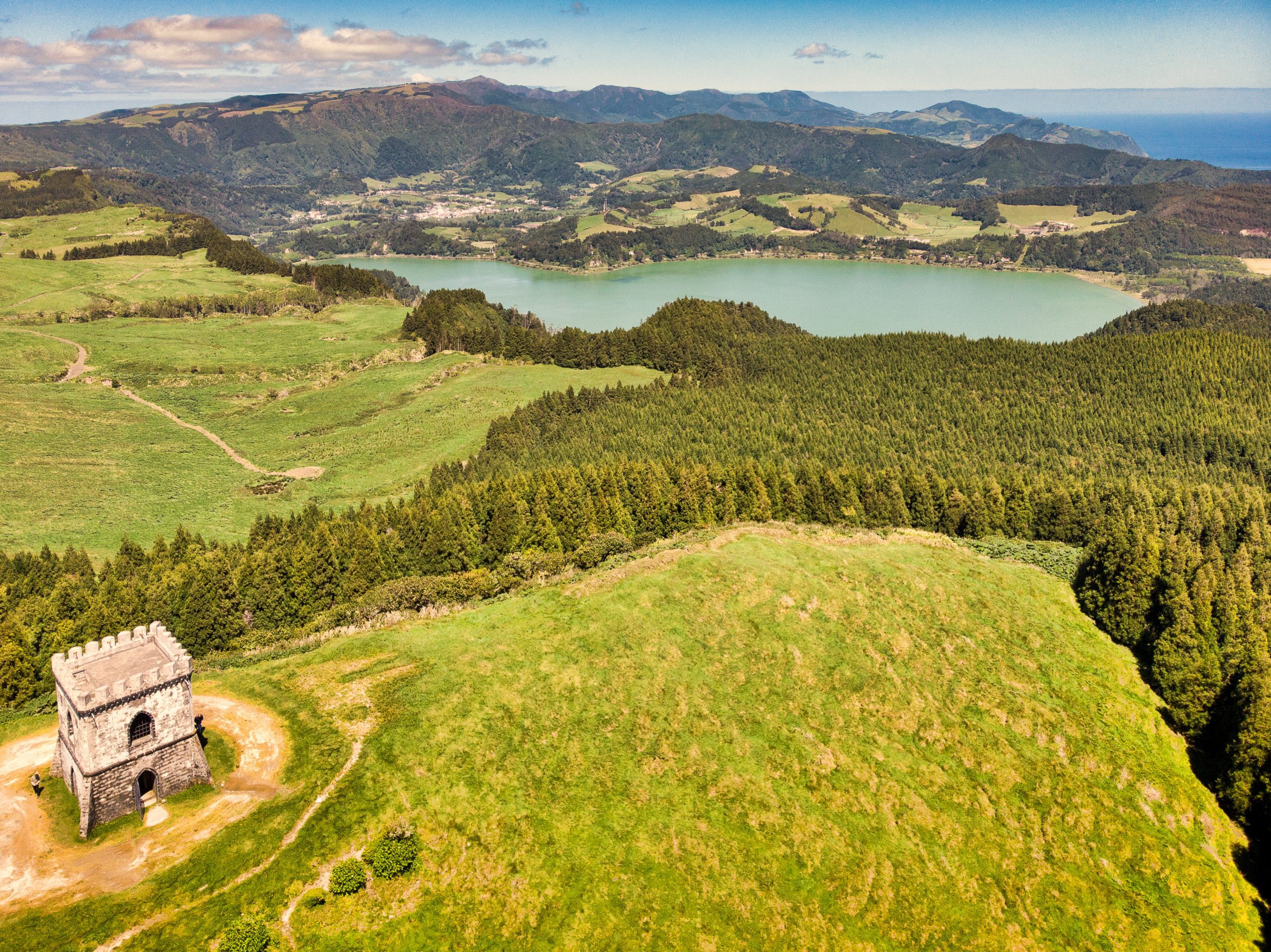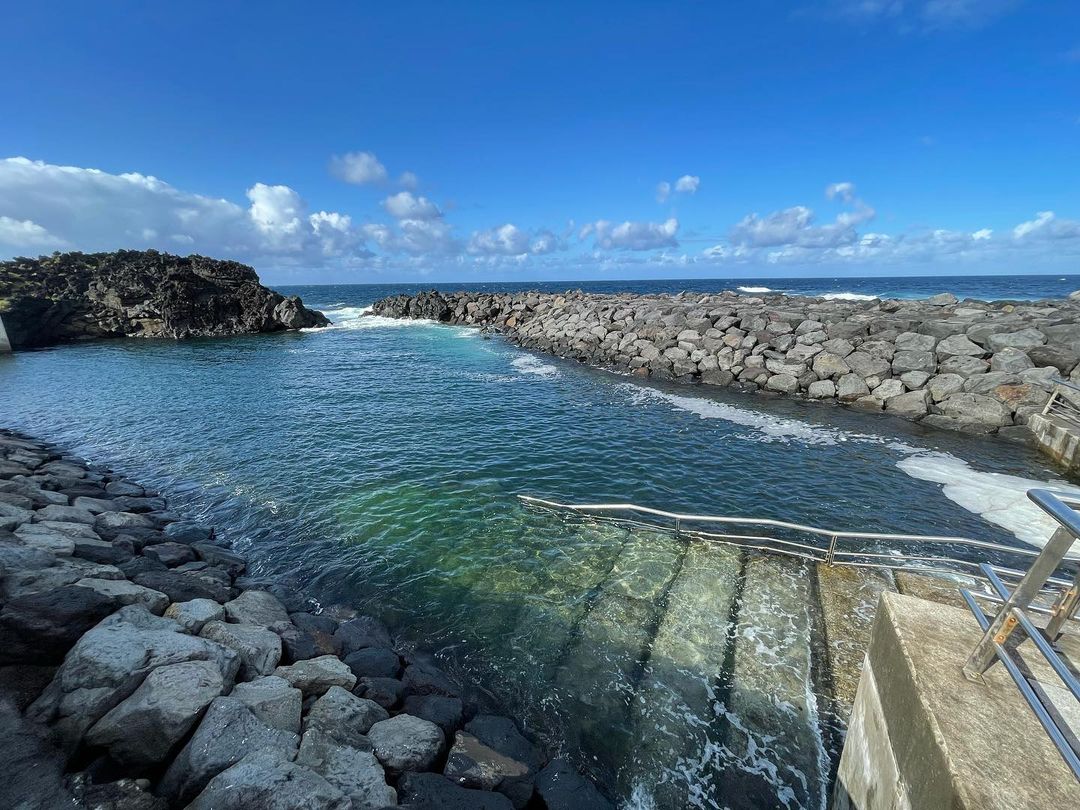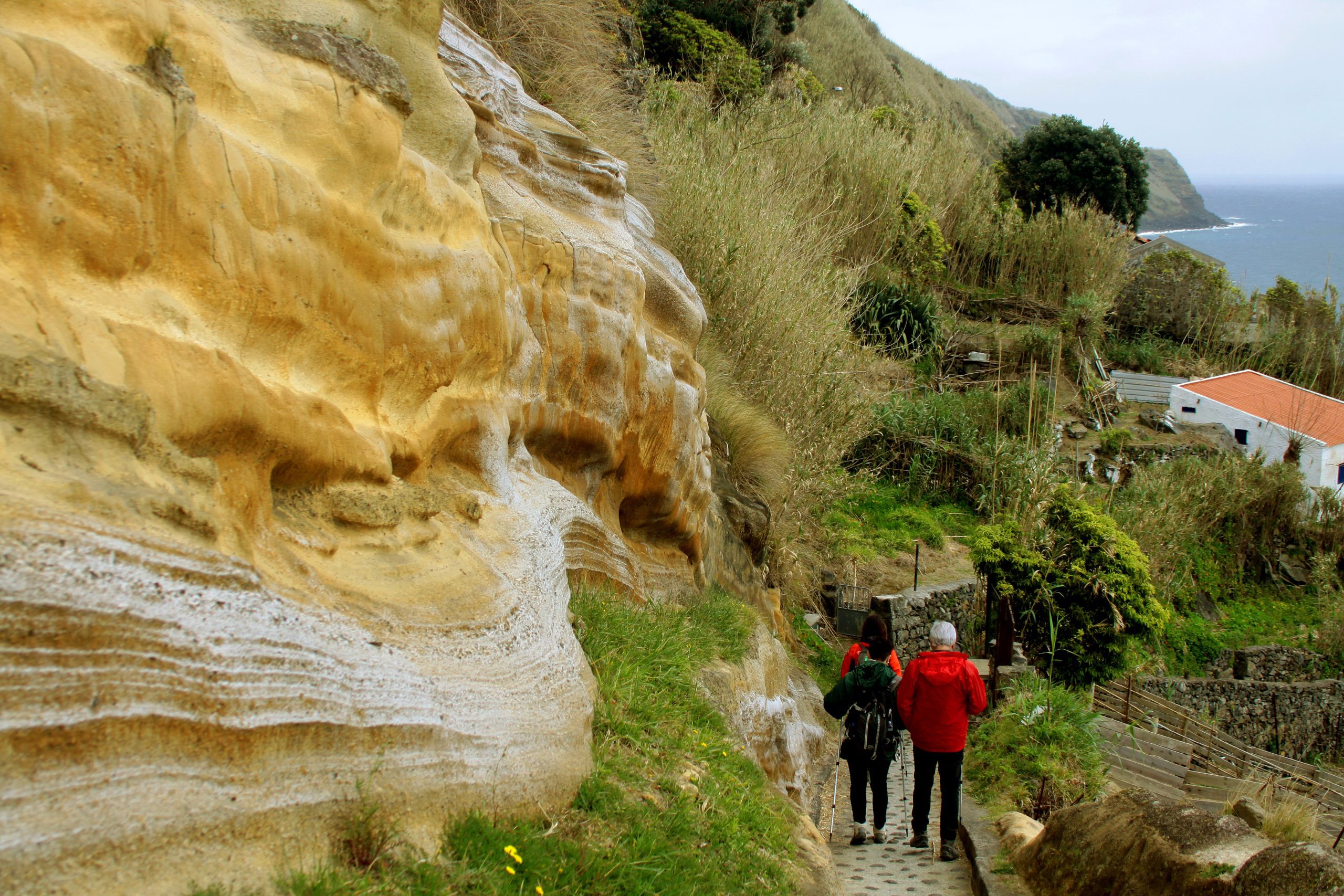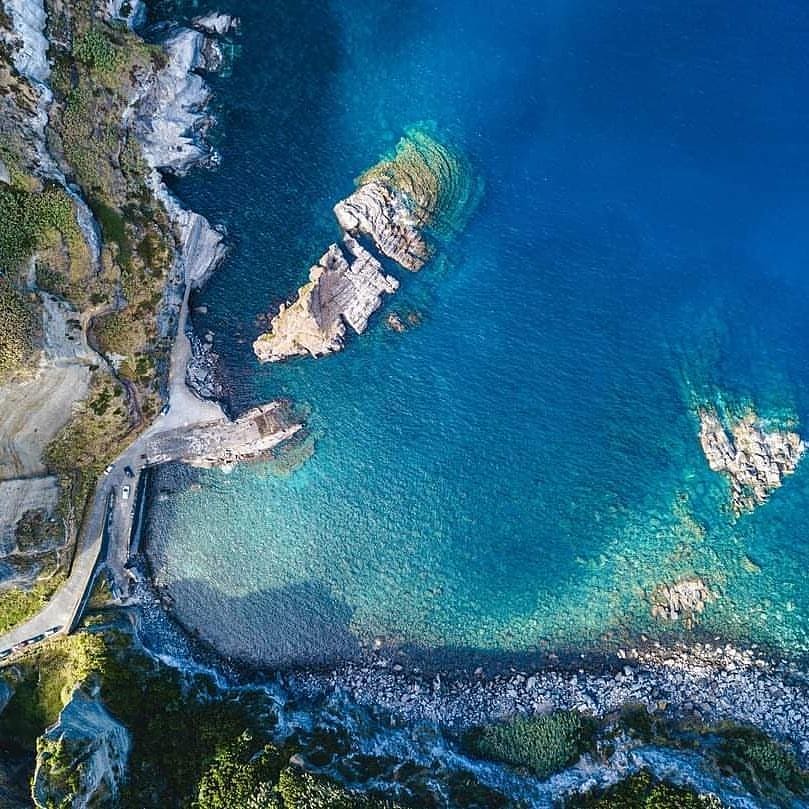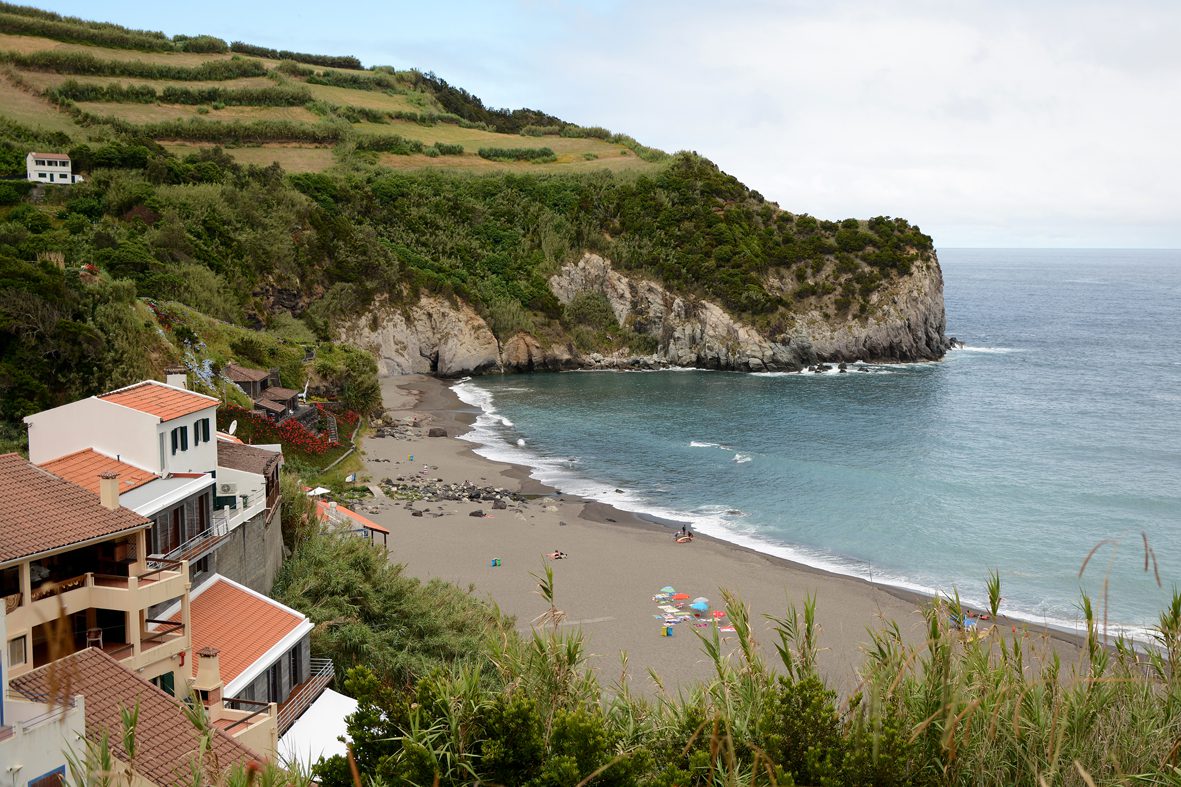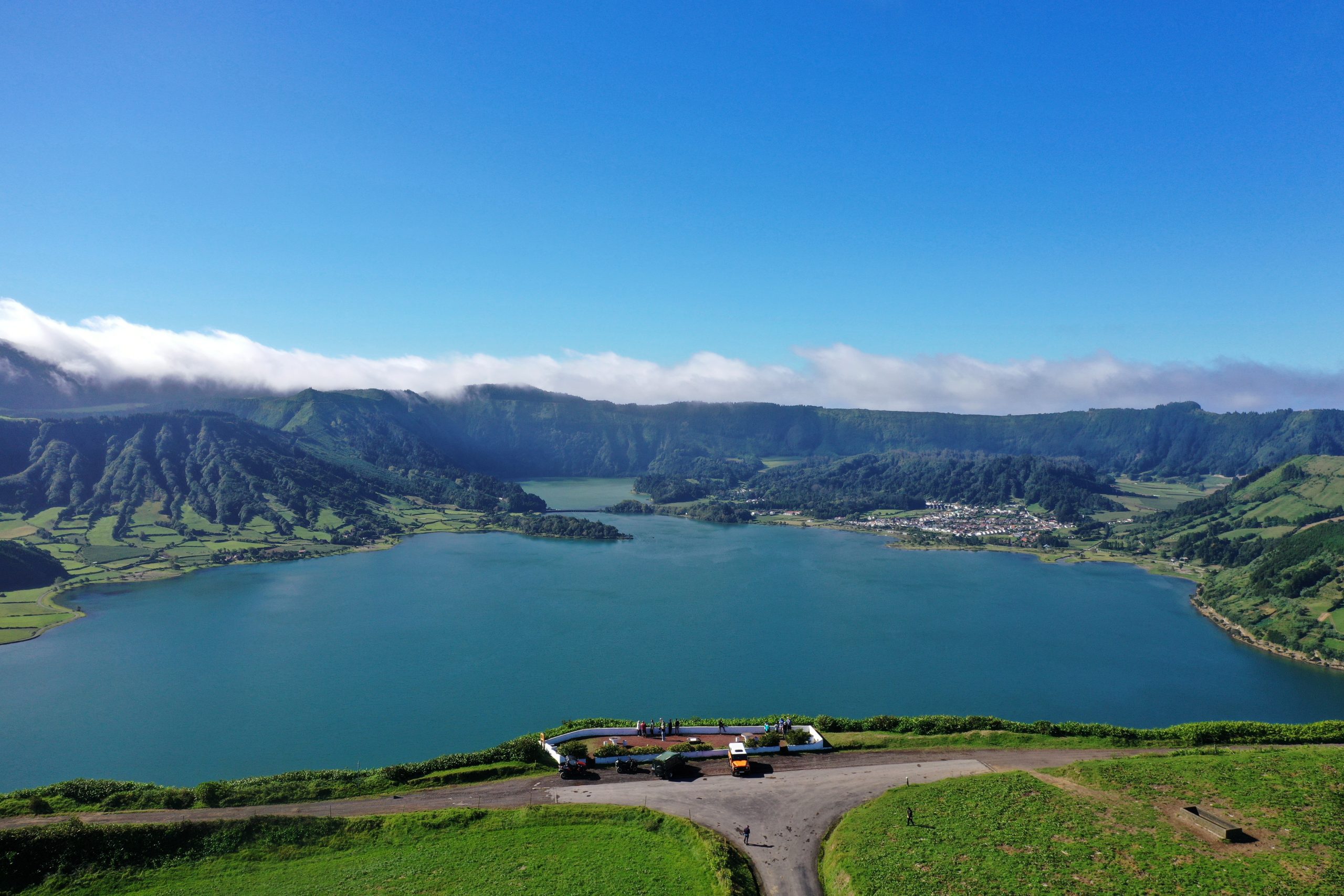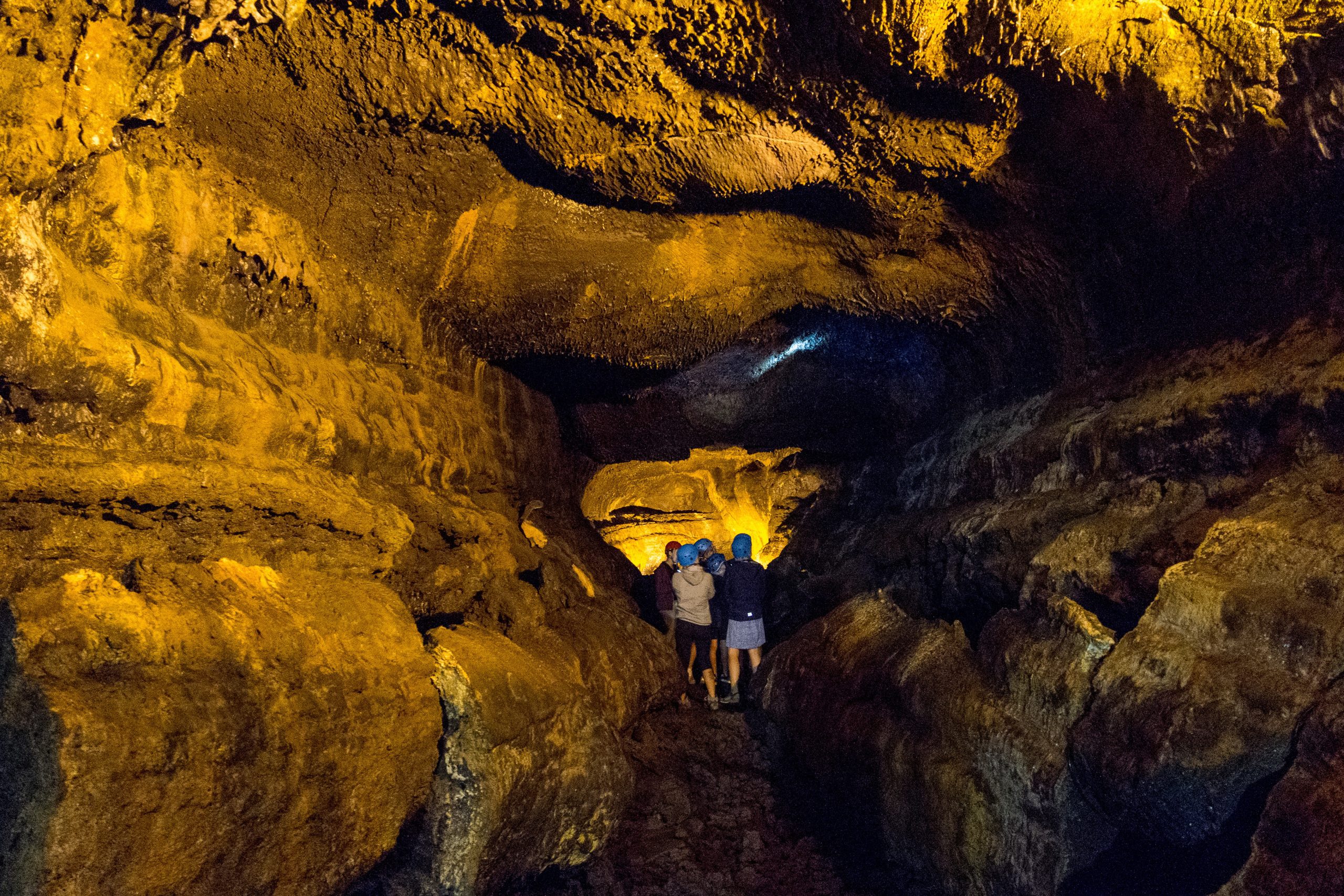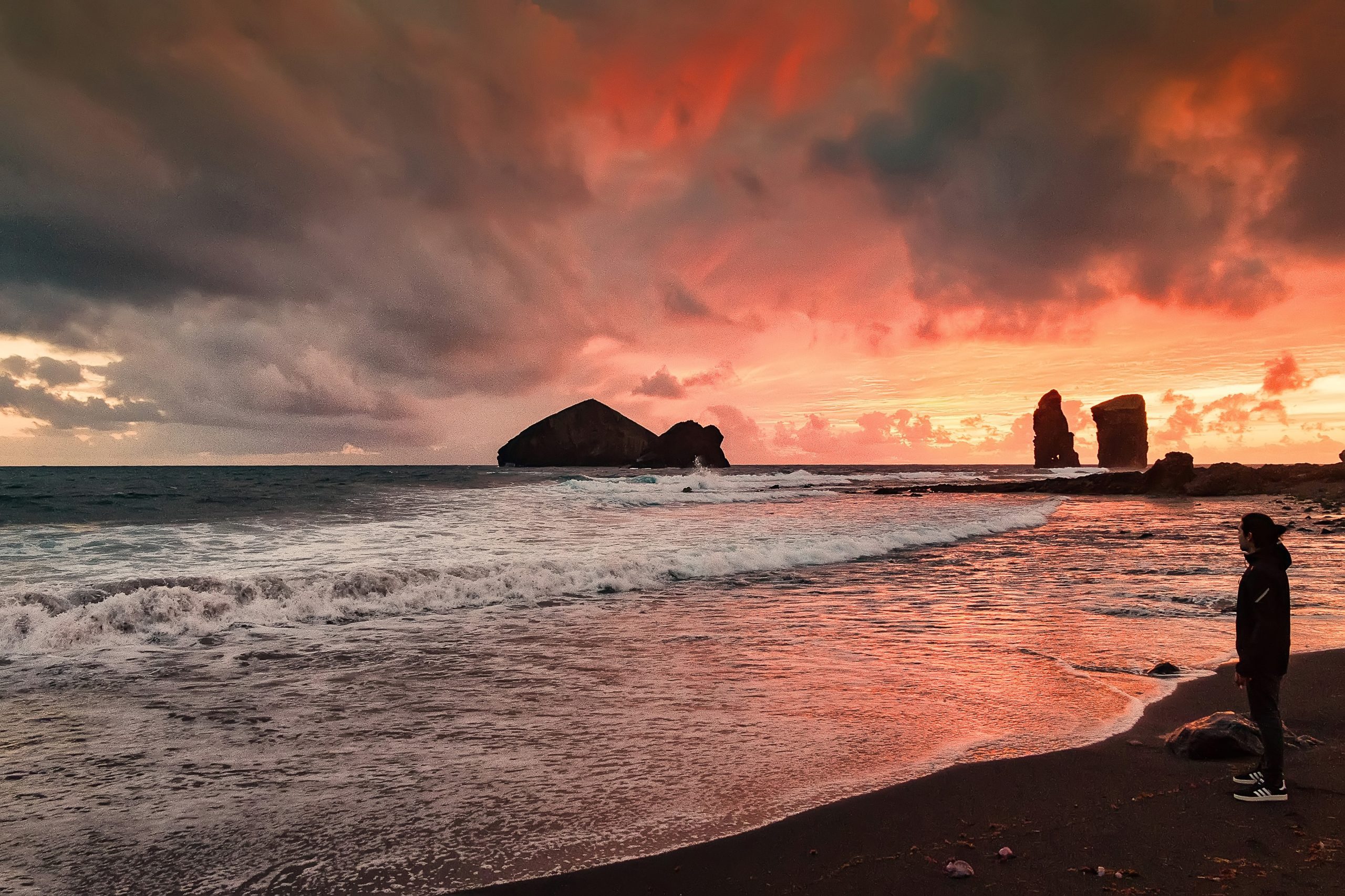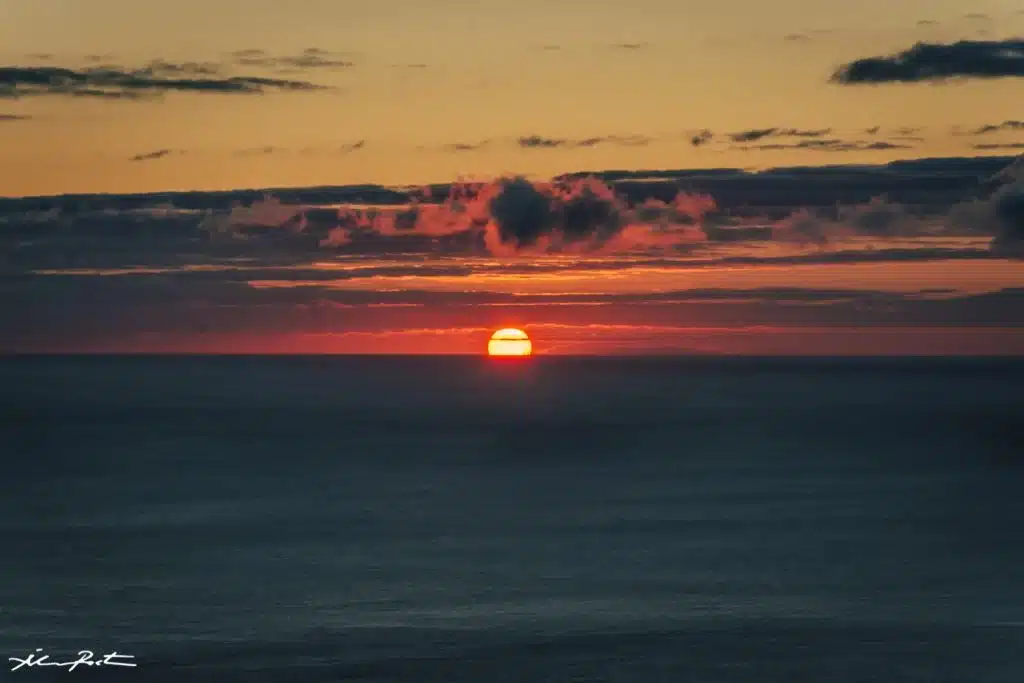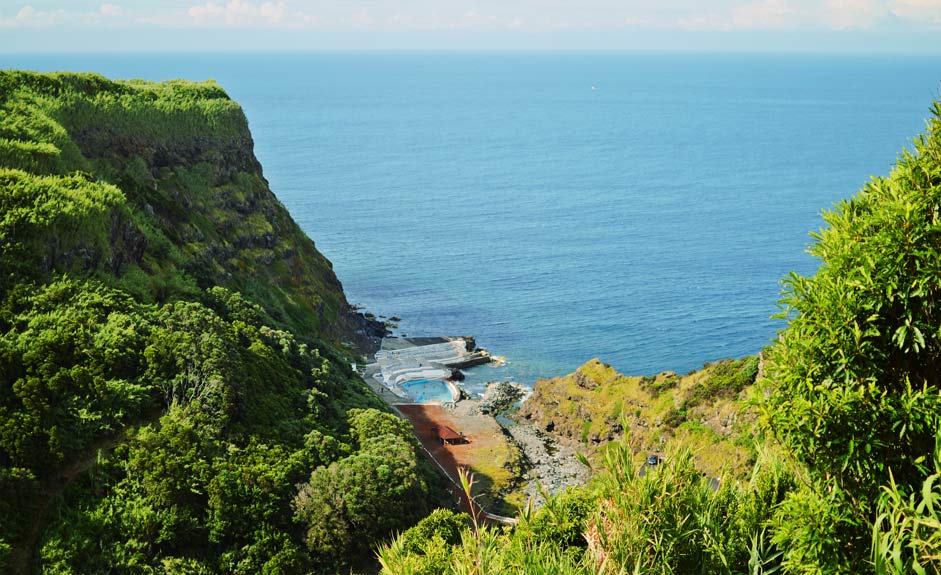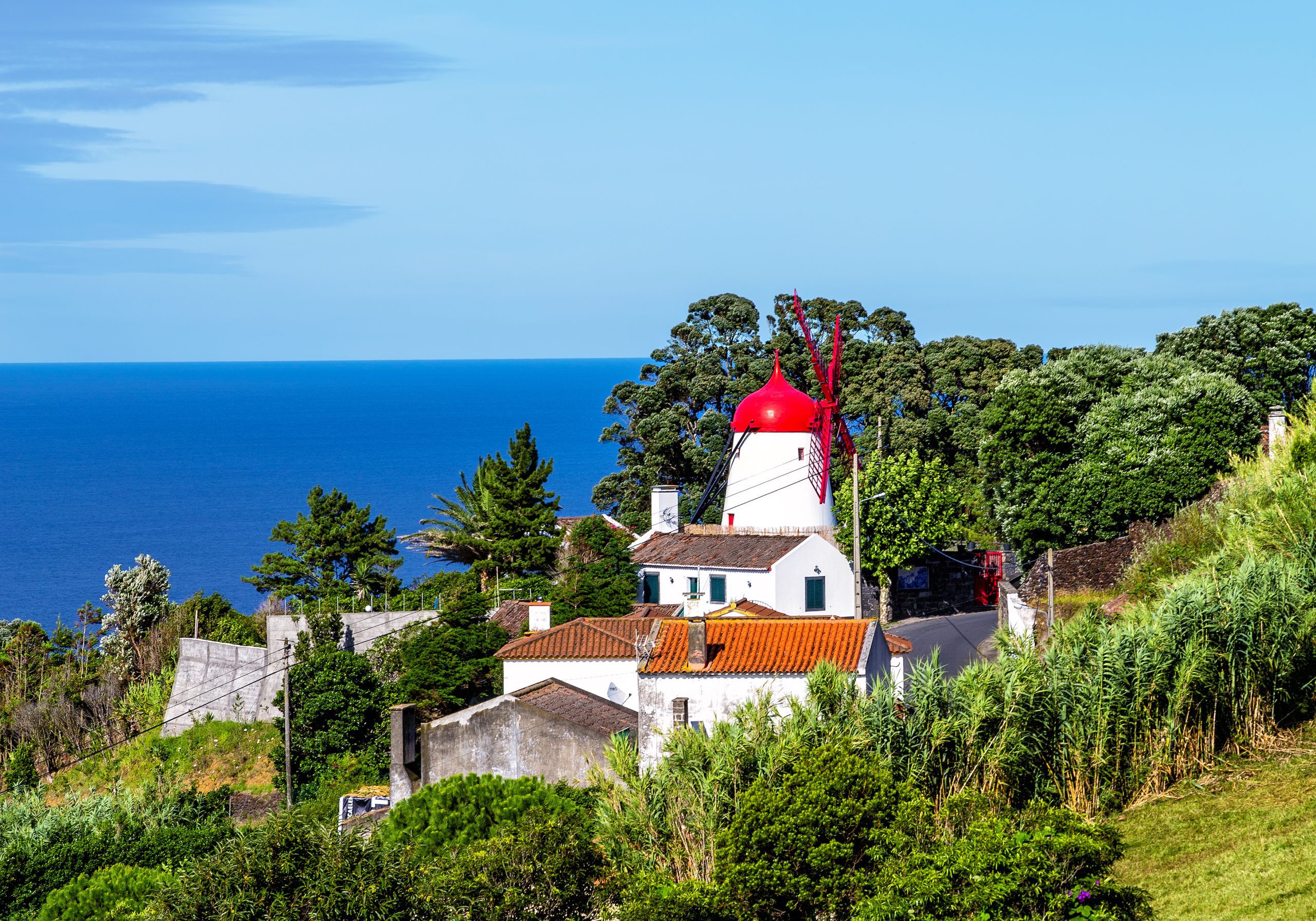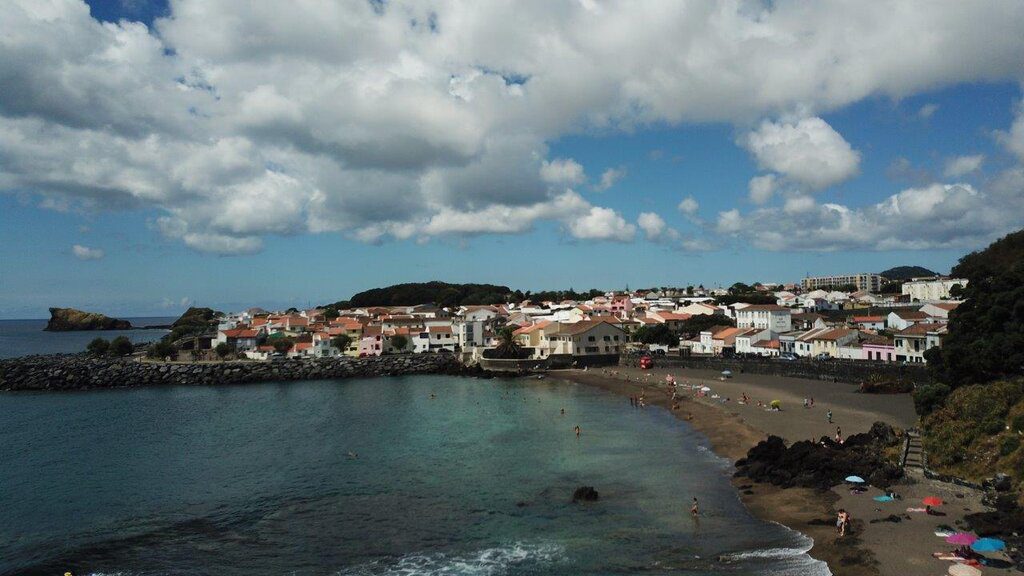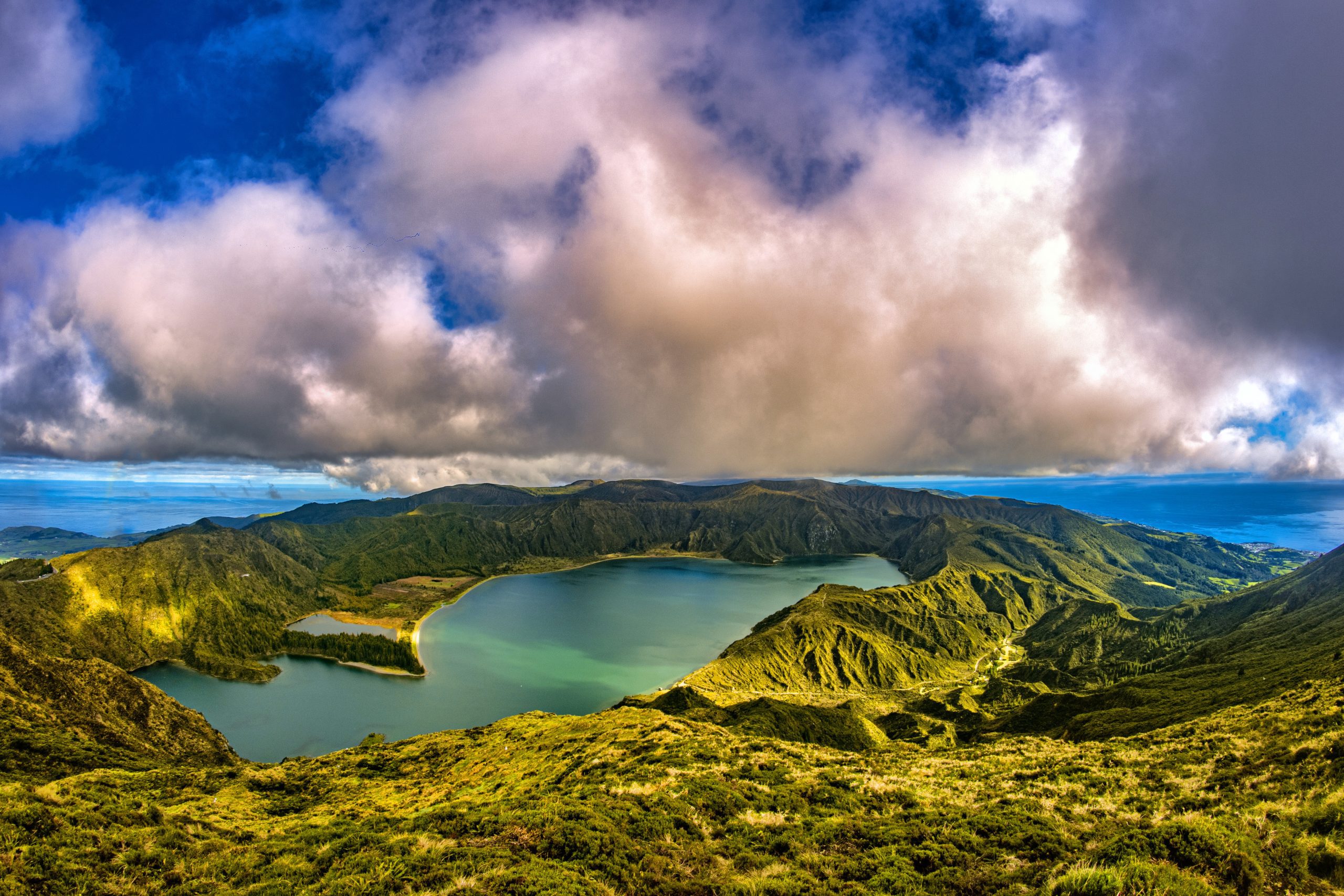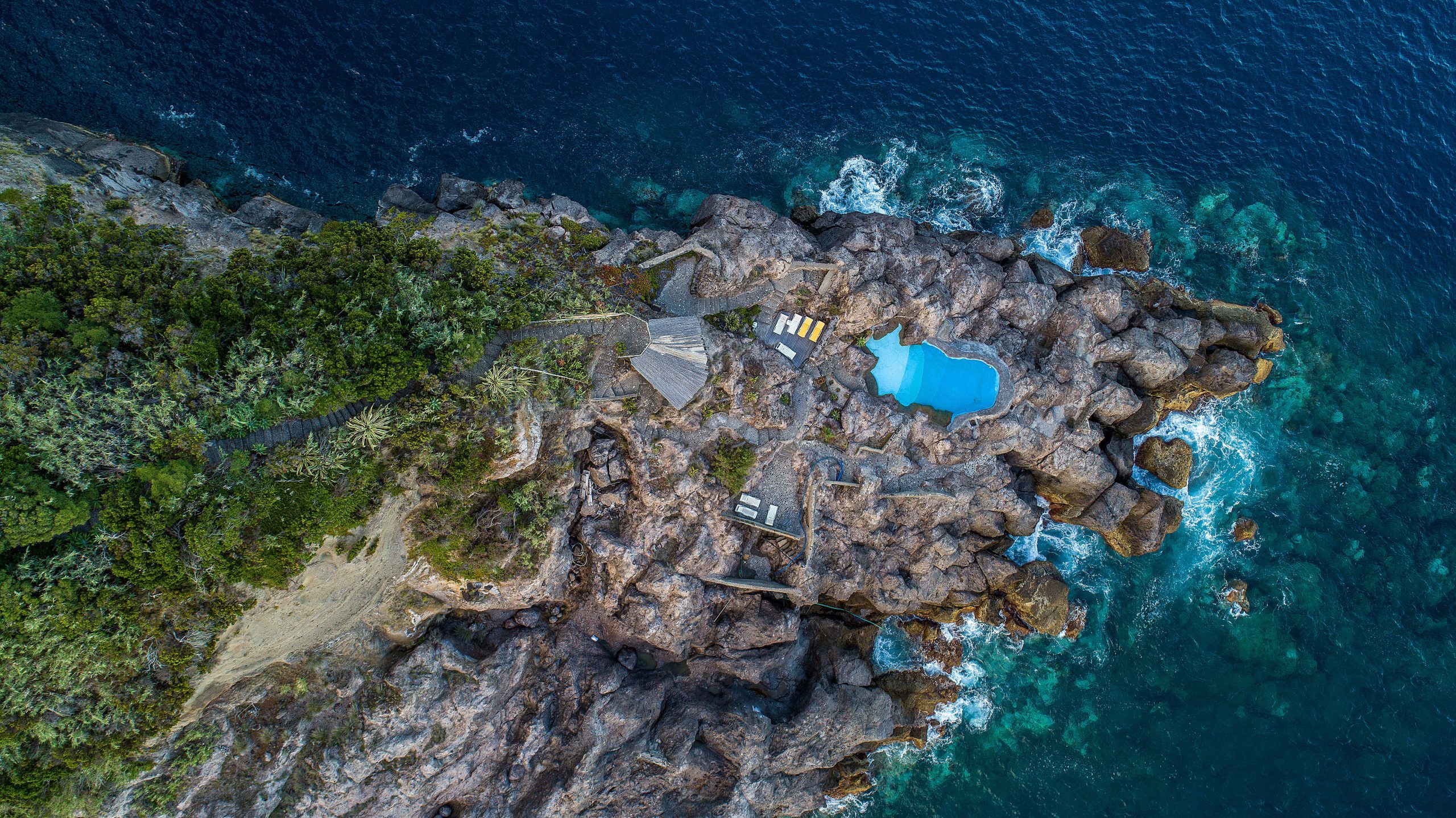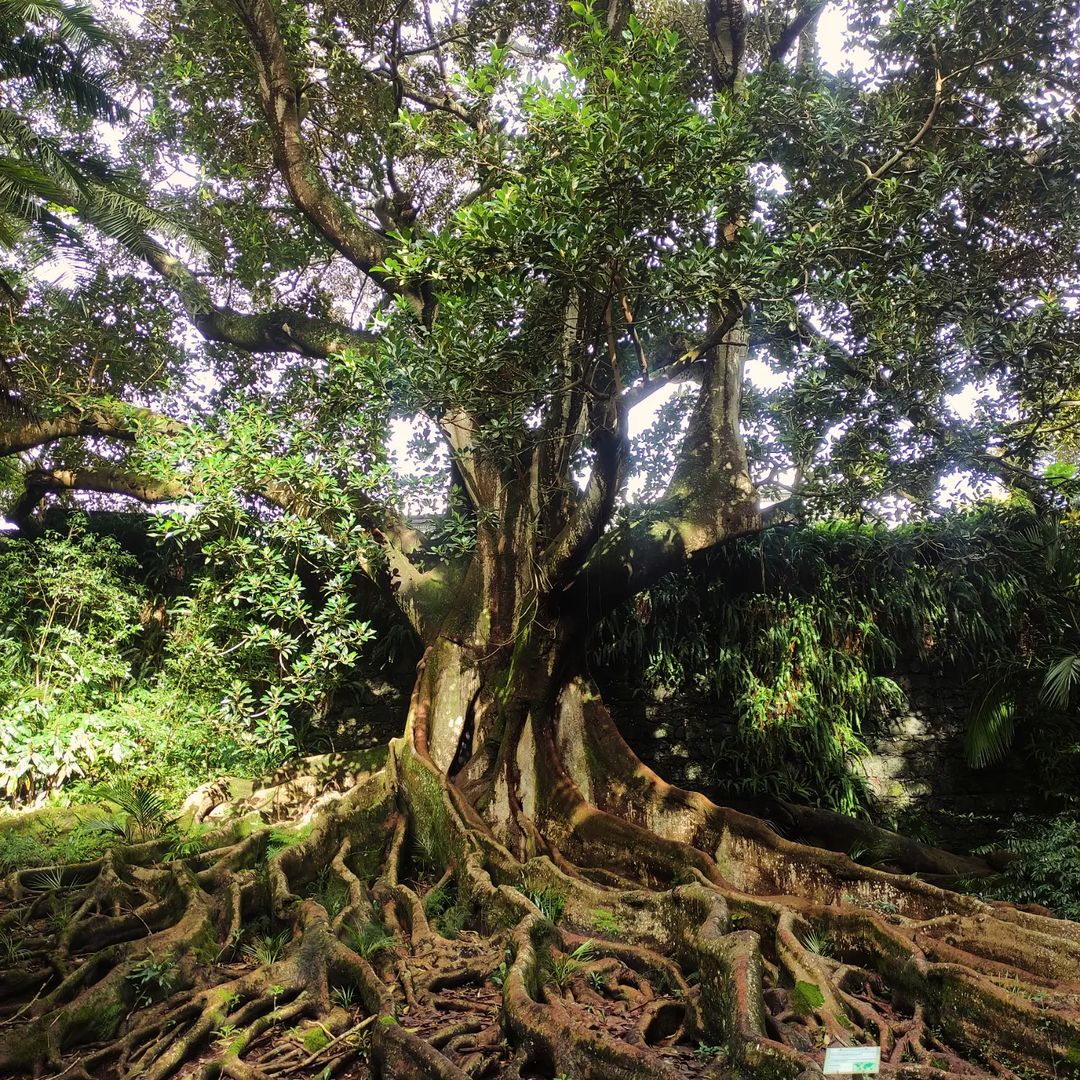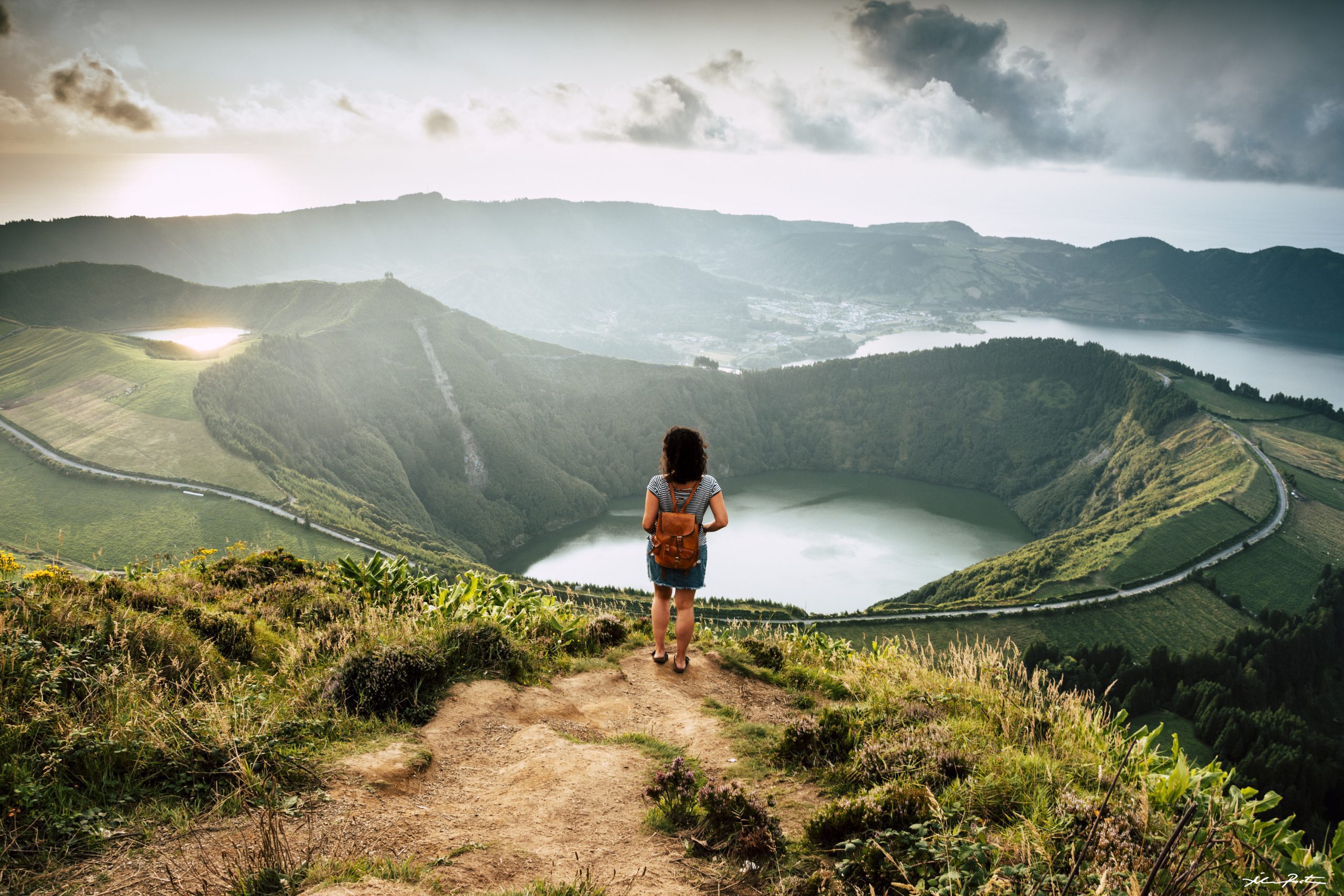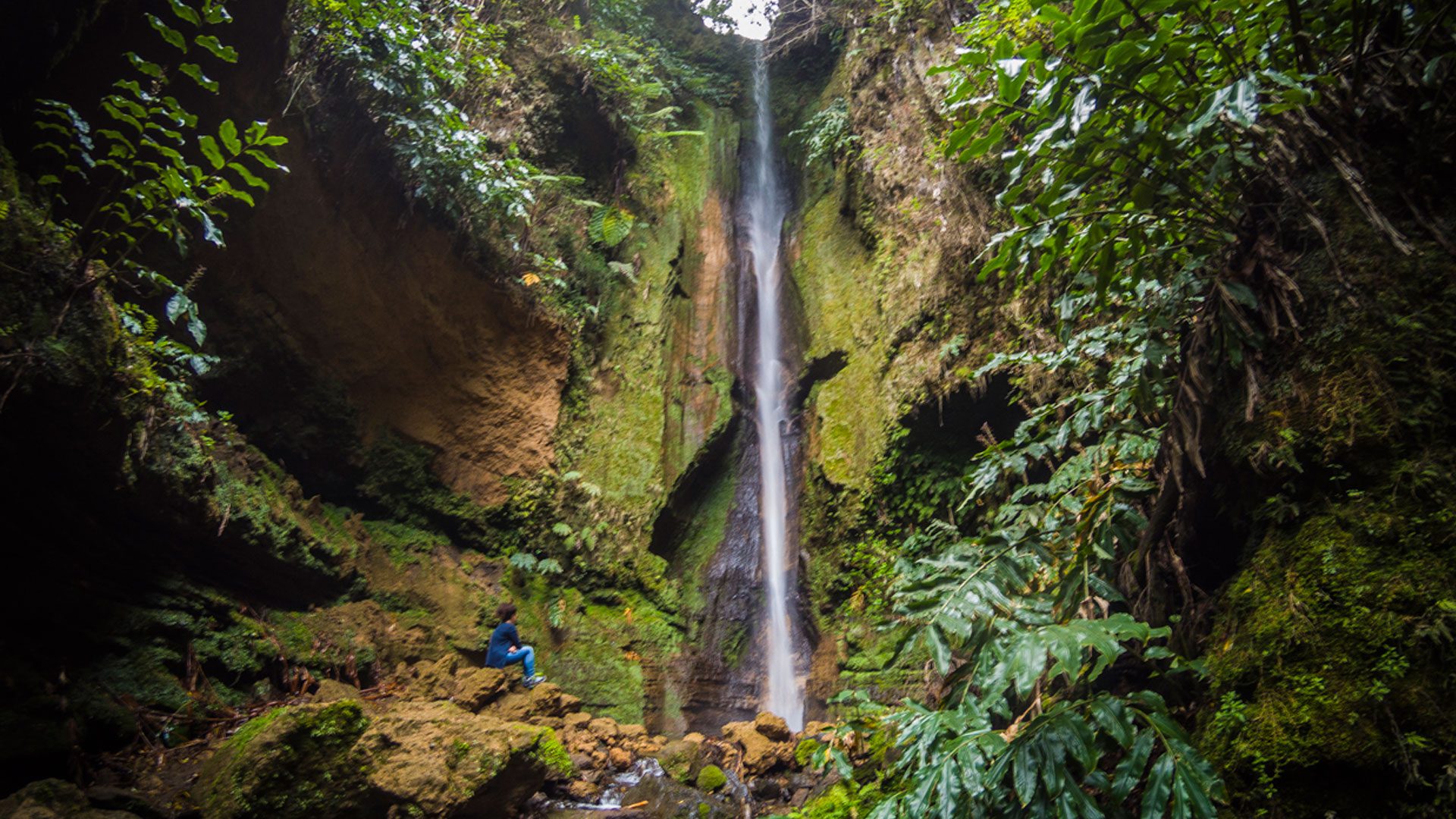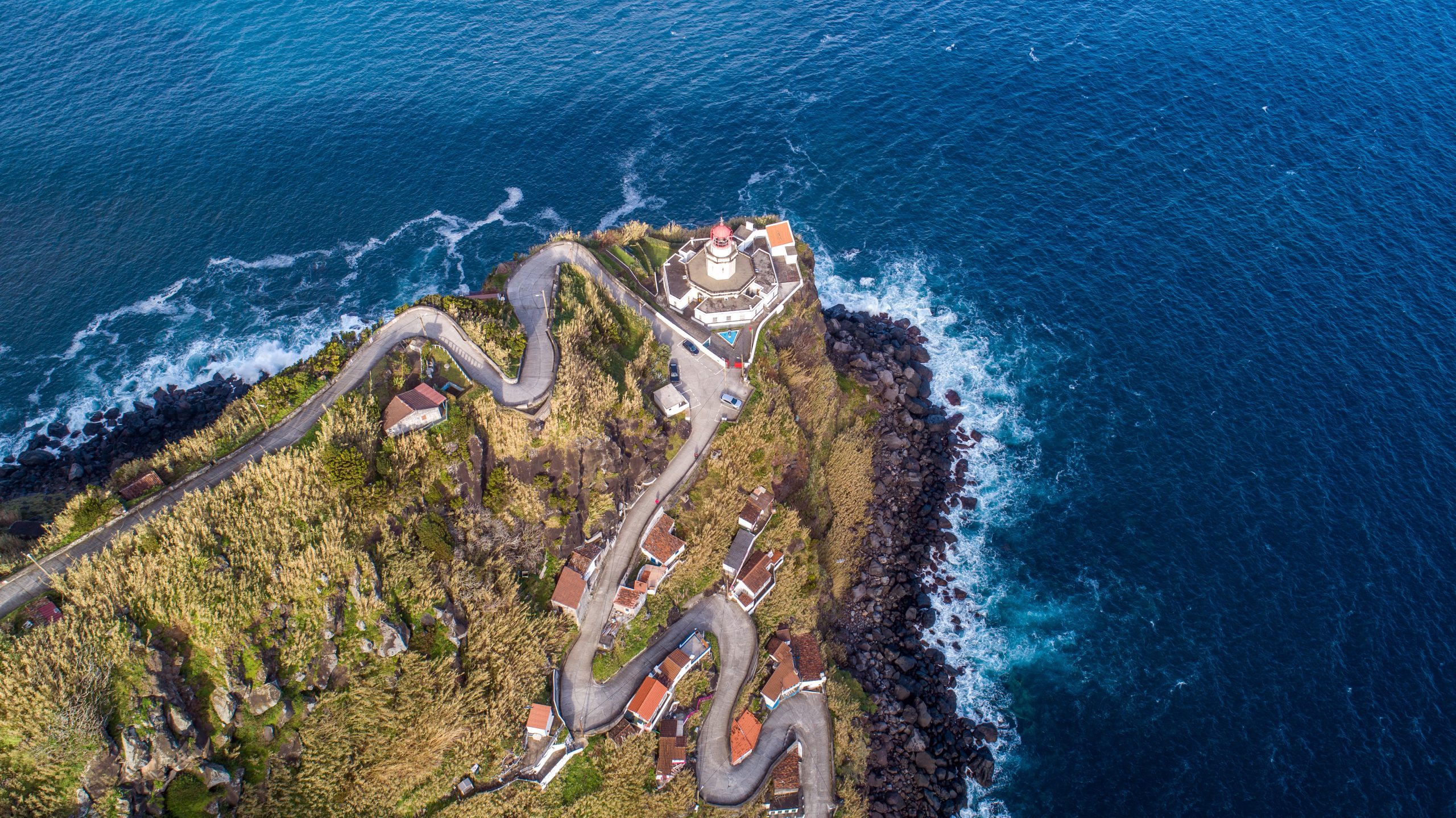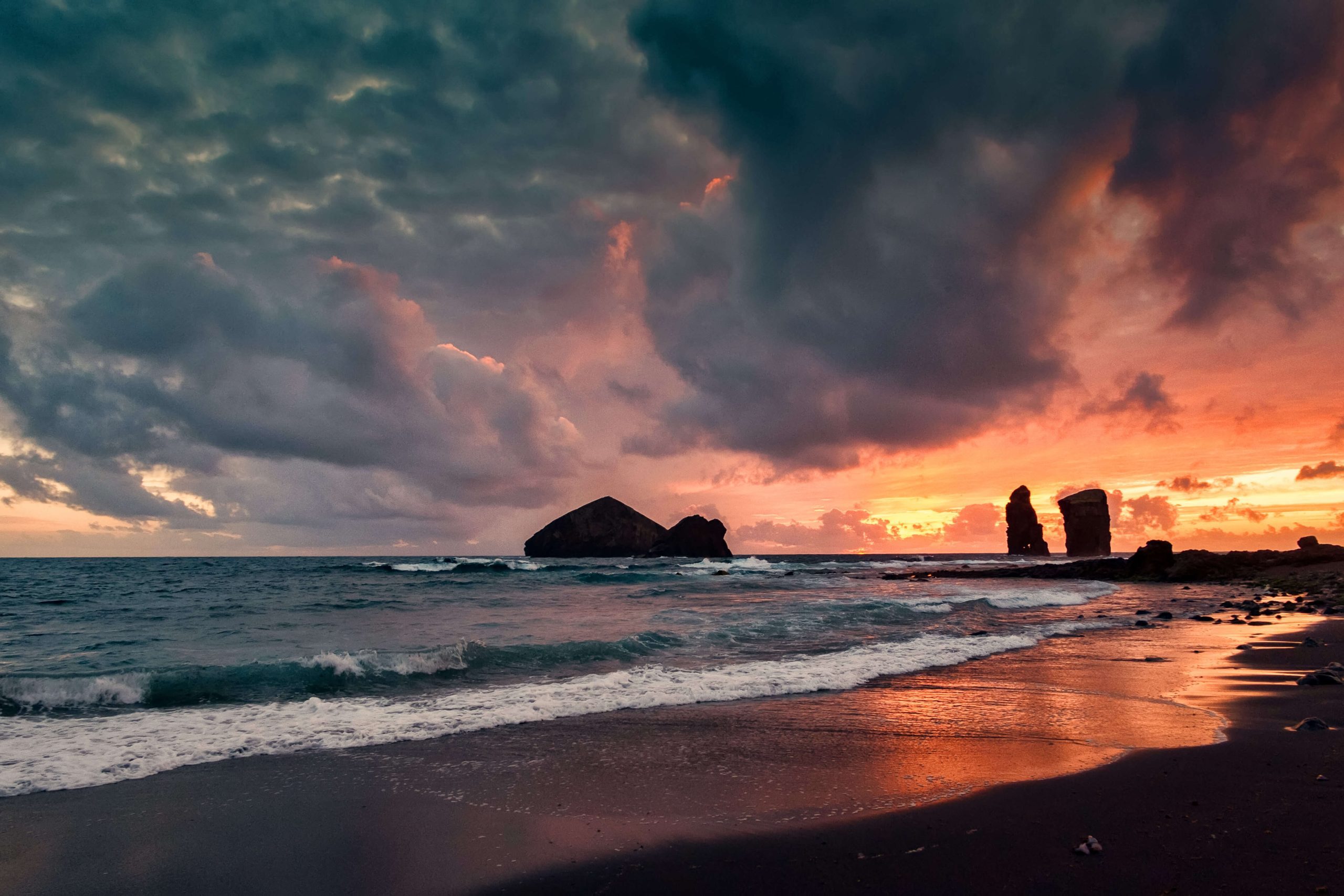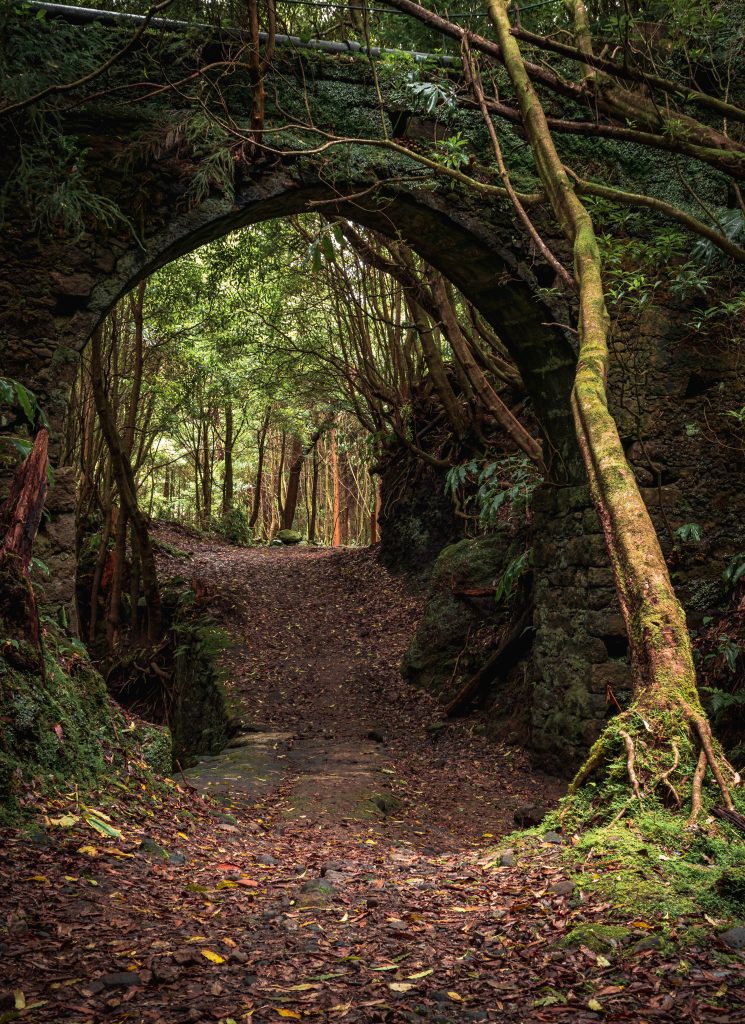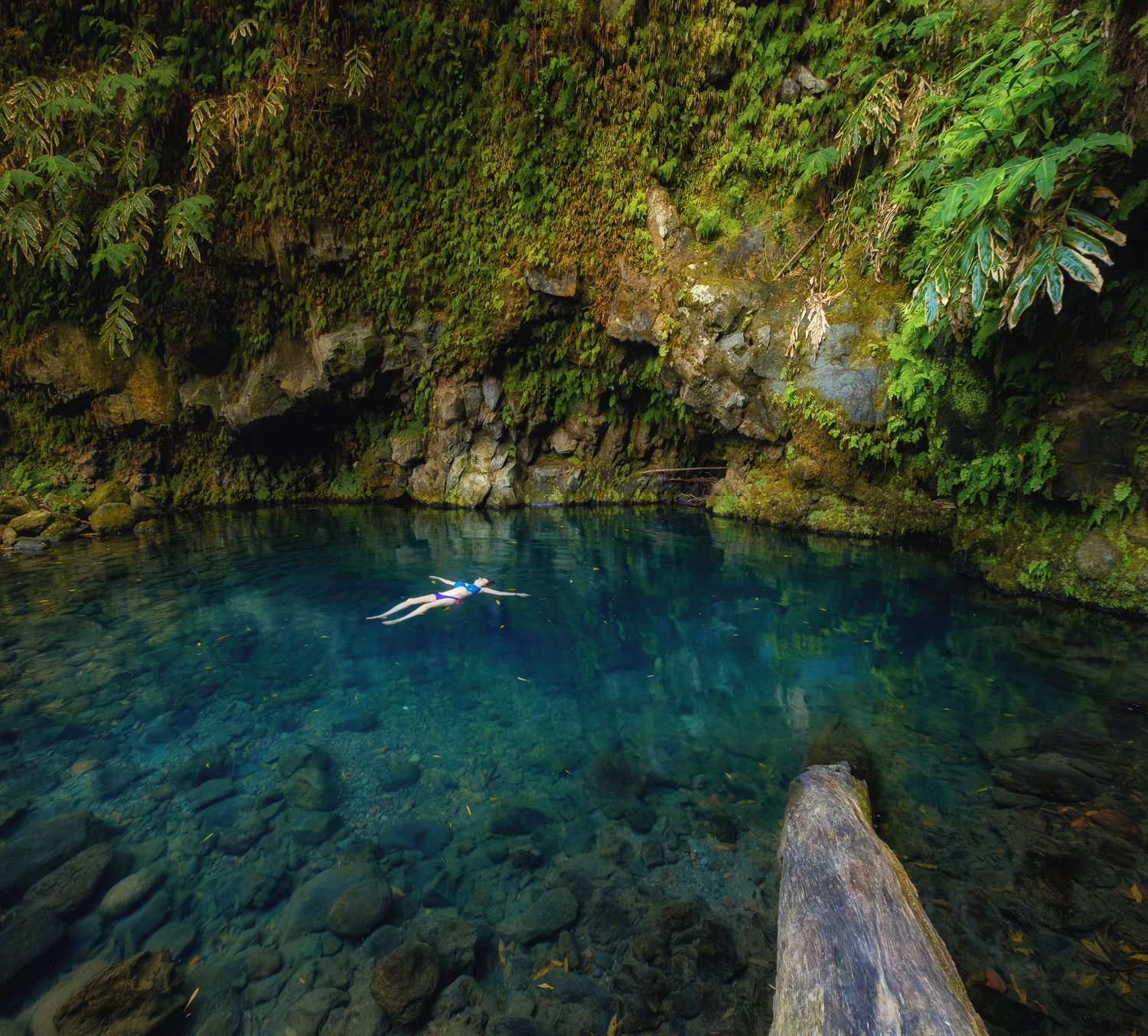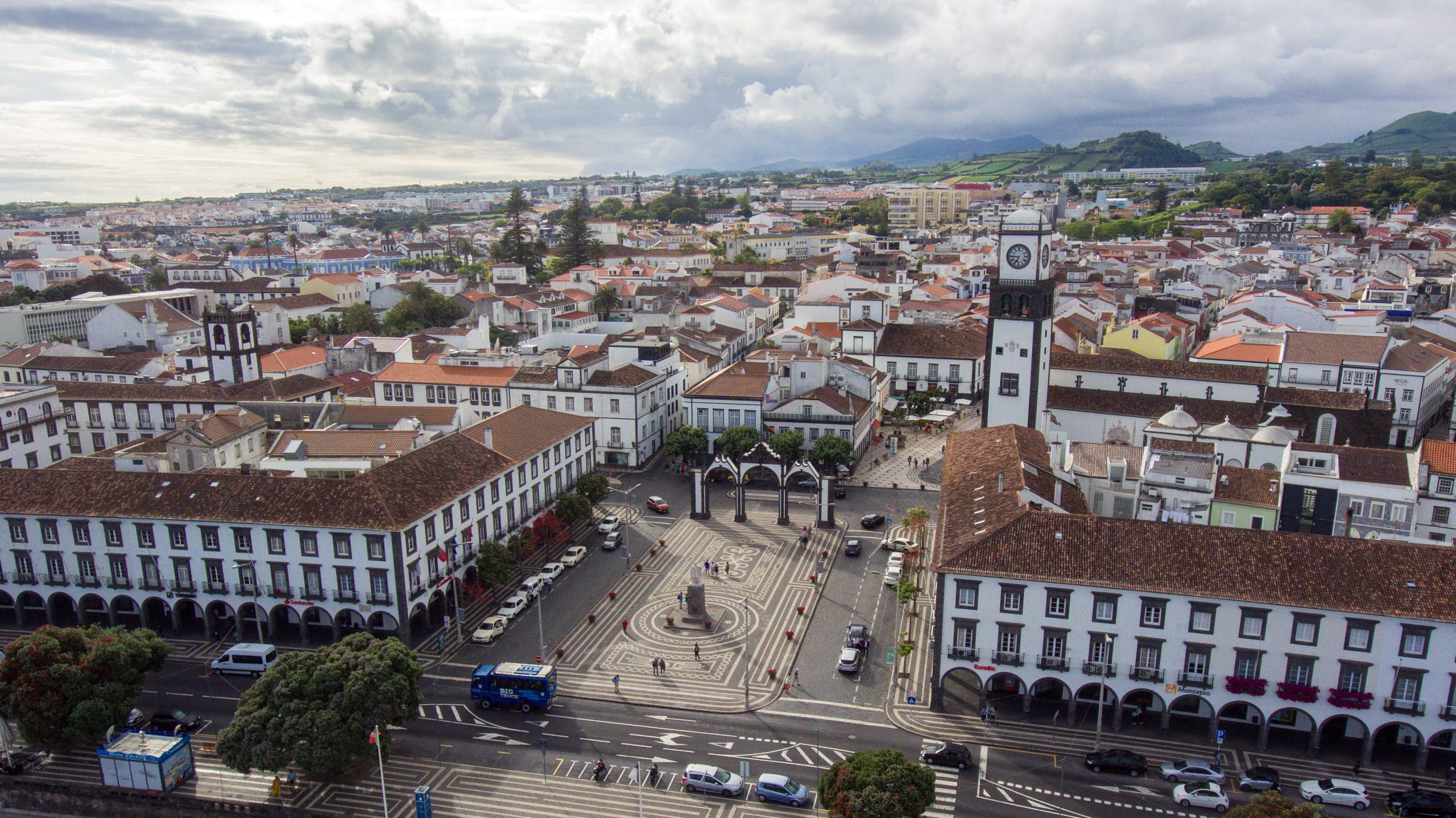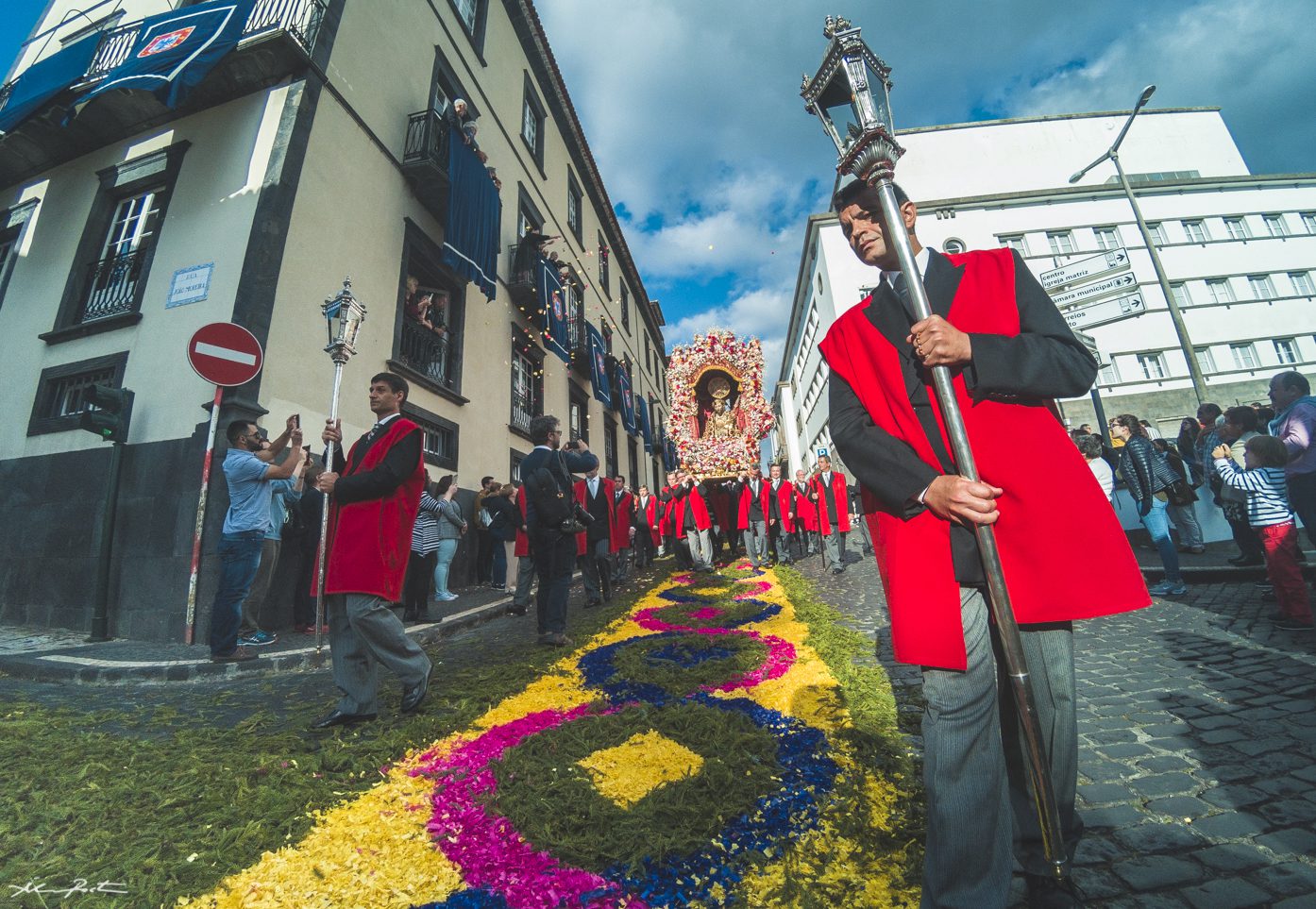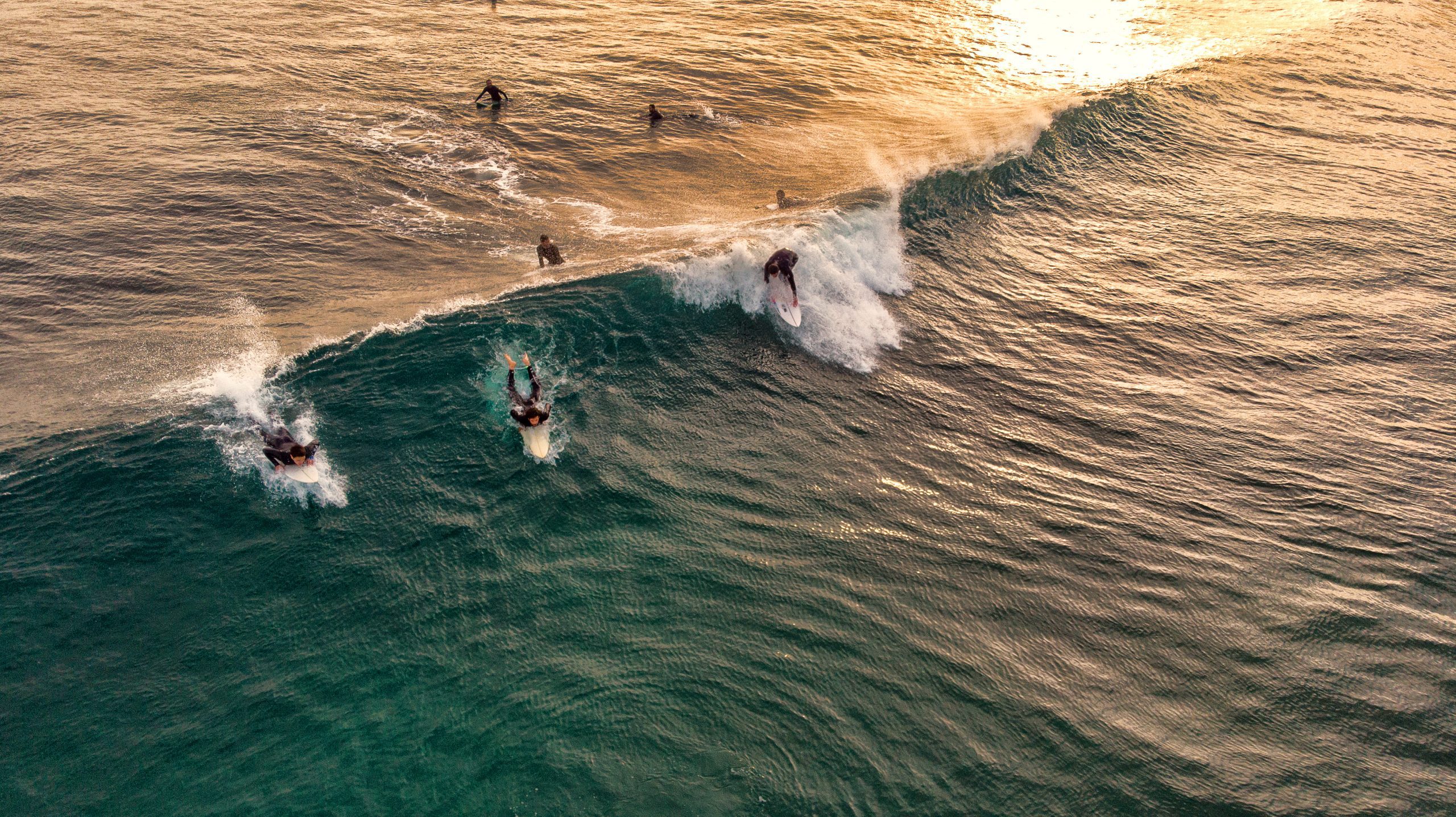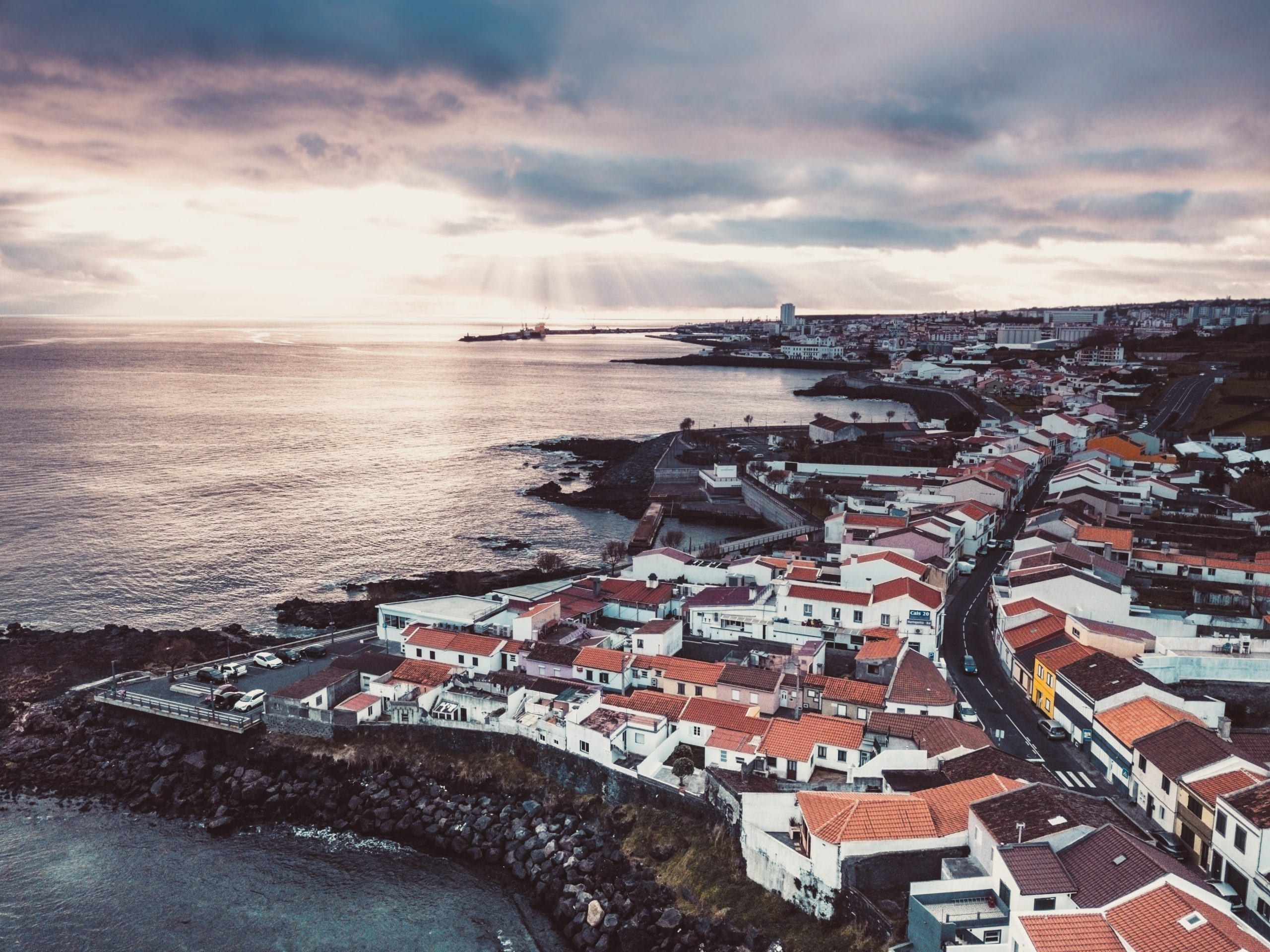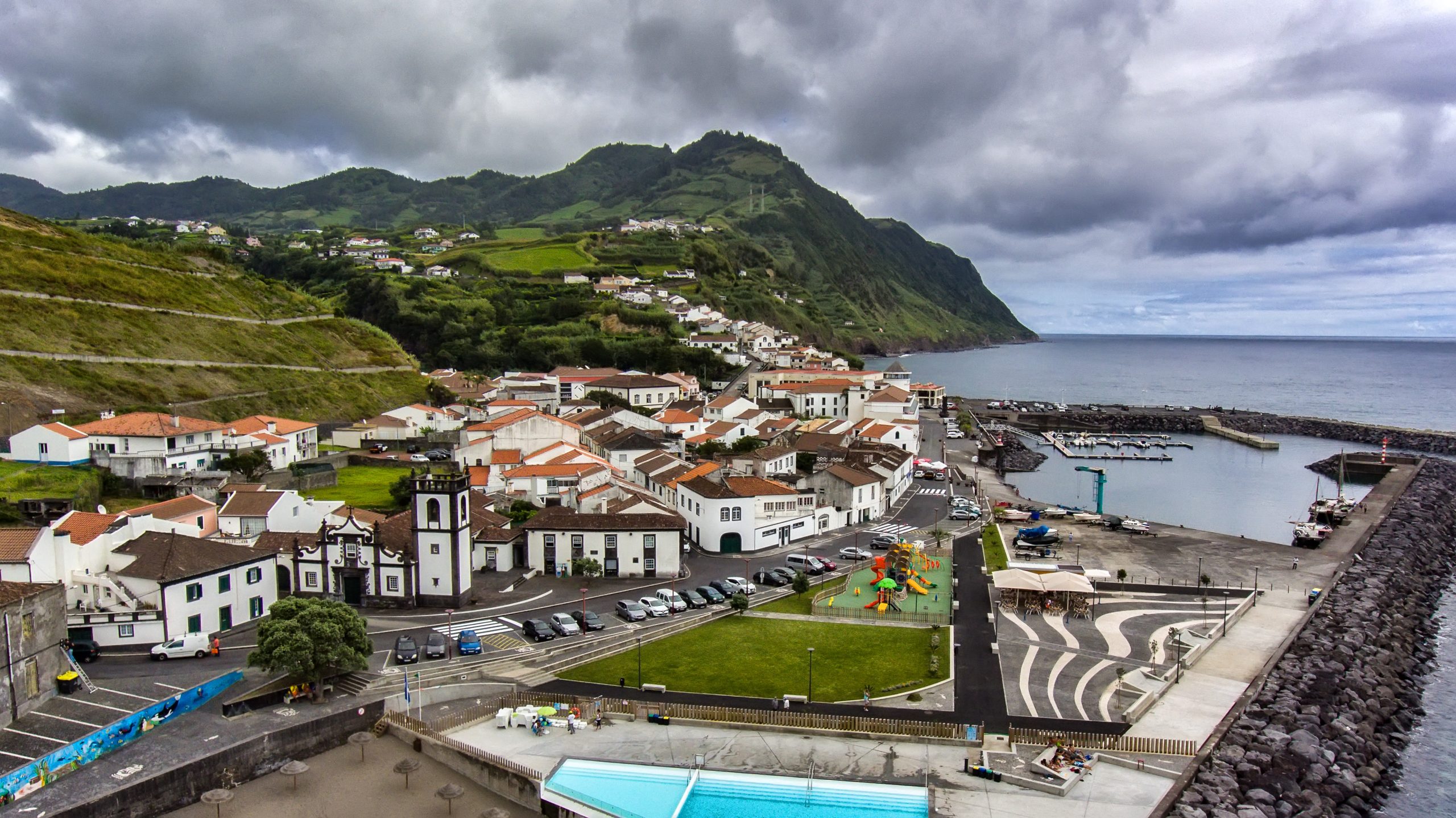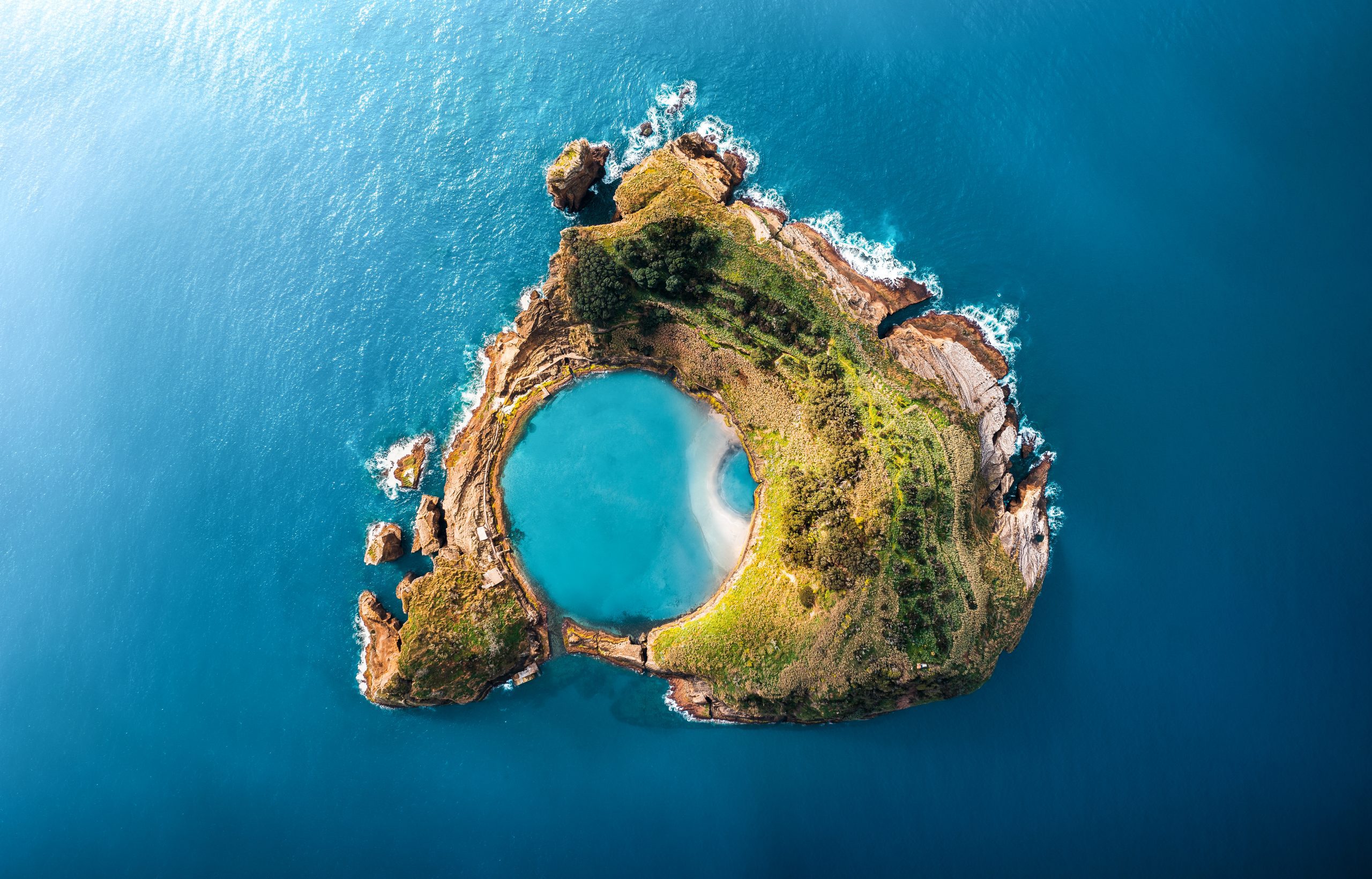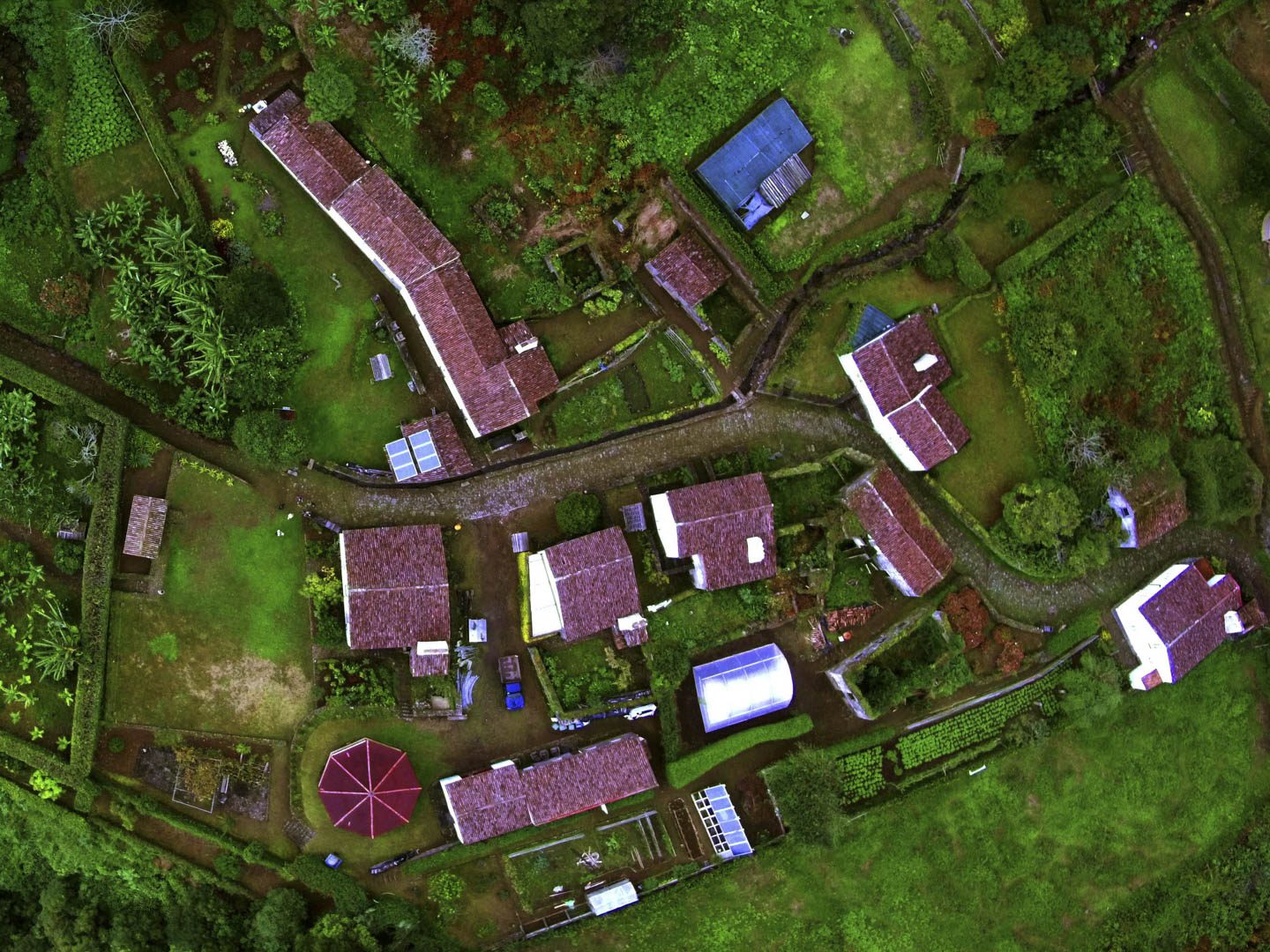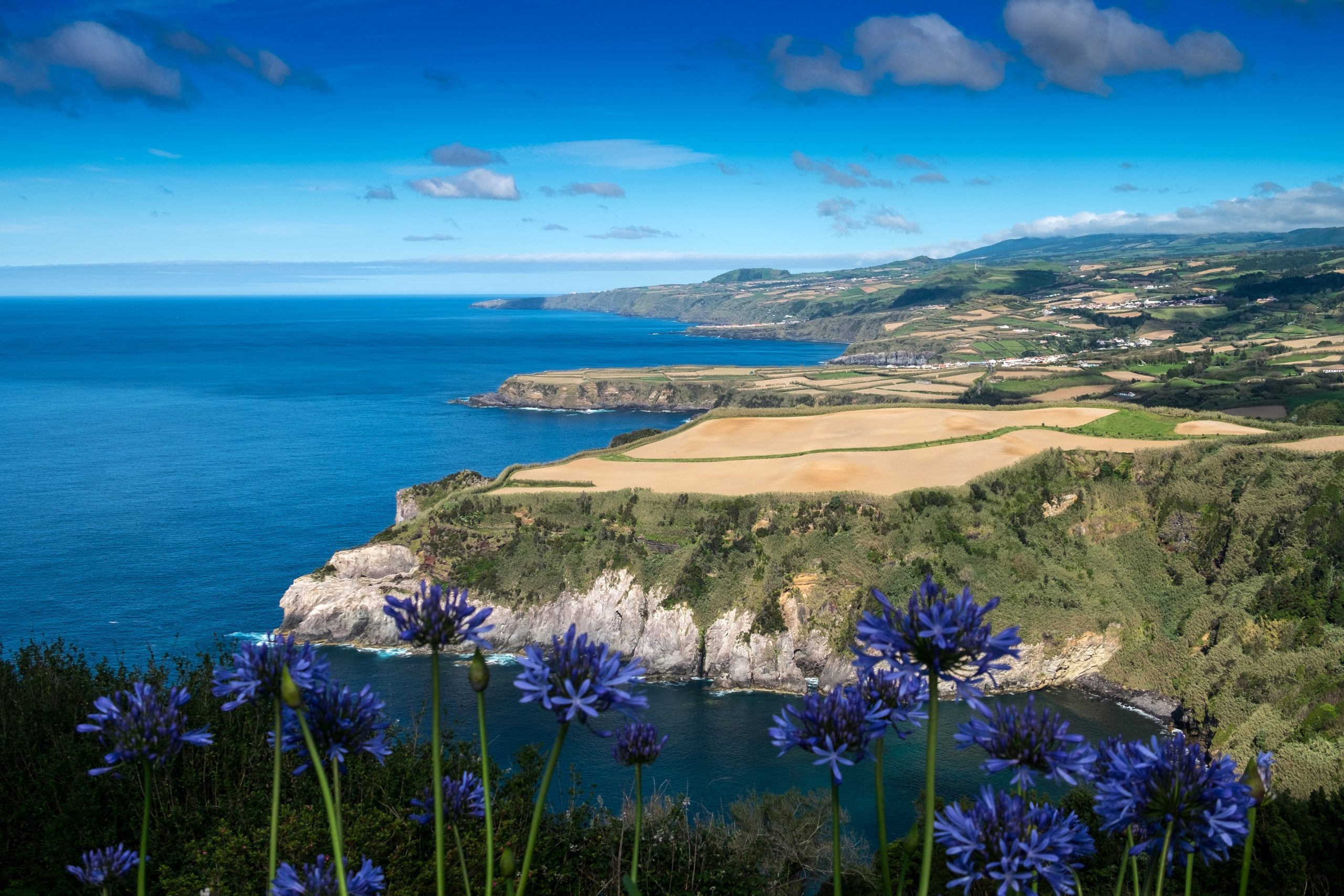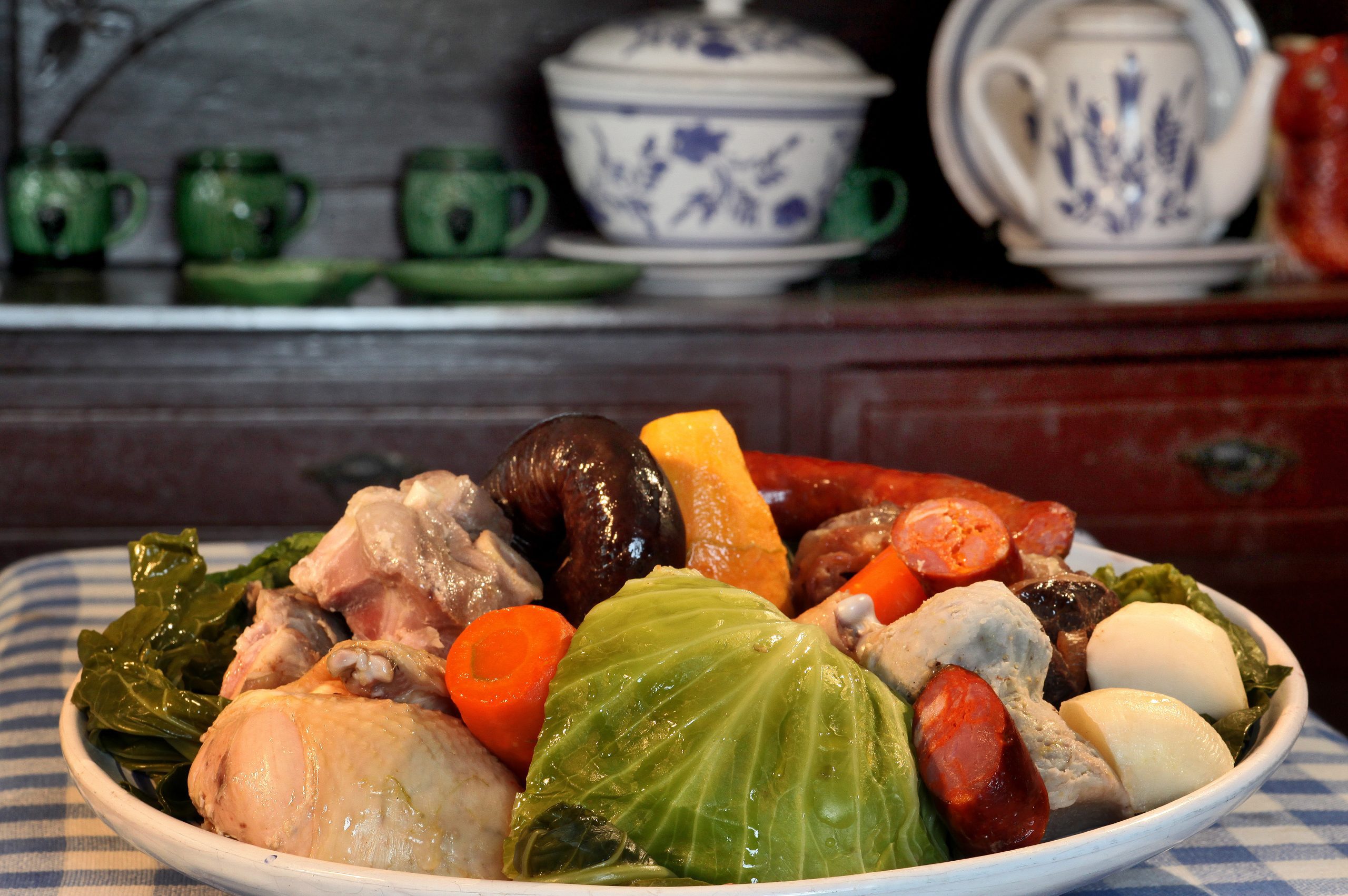The greenish-hued lake is located in Serra Devassa, within the volcanic complex of Sete Cidades. The surrounding vegetation conveys a perfect harmony between the lake and its environment that undoubtedly enchants anyone who visits it.
What is Lagoa de Santiago

This 0.24 km² lake is in the Sete Cidades area. Surrounded by some of its natural vegetation, as if protecting a precious asset, the greenish-hued waters of Lagoa de Santiago can leave any visitor amazed. Its beauty is truly captivating.
Check all our articles about each one of the most relevant points of interest in Sete Cidades: Caldeira Seca | Janela do Inferno | Miradouro da Grota do Inferno | Lagoa das Empadadas | Sete Cidades | Lagoa das Sete Cidades | Lagoa de Santiago | Lagoa do Canário | Lagoa do Congro | Miradouro das Cumeeiras | Monte Palace Hotel | Sete Cidades Legend | Miradouro da Vista do Rei | Lagoa de Santiago Viewpoint | Pico da Vara
Geology & Volcanology
Santiago Lake occupies an elongated crater with an N-S direction. Its walls are rocky and steep, covered by pumice stones. Other pyroclastic materials also cover these walls. These materials are the result of several explosive pyroclastic eruptions. These eruptions occurred in this volcanic structure in the last 5 thousand years.
History & Geography
Lagoa de Santiago, located in the Sete Cidades area, has an altitude of 355m. Its maximum length and width are 700m and 475m, respectively. The basin covering this lake spans 0.80 km². However, the lake itself, with a depth of 29m, covers an area of only 0.24 km².
As for its curious name, it may be explained by the Azorean chronicler of the 16th century, Gaspar Frutuoso. He referred to it in his volume IV of Saudades da Terra: What to do after visiting Lagoa de Santiago.
“…its depth and high concavity of this Santiago lake are frightening to those who see it. That’s why it seems they named it Santiago. When we see something dangerous, we immediately say — Santiago — invoking the name of the patron saint of Spain. May God protect us from it.”
Fauna & Flora
Gracefully protecting this lake is the vast vegetation of Cryptomeria japonica, incense (Pittosporum undulatum), Hedychium gardneranum, among many other elements. These elements of its natural vegetation include holly (Illex perado ssp. azorica), laurel (Laurus azorica), and mountain grape (Vaccinium cylindraceum). Additional species are Azorean cedar (Juniperus brevifolia) and heather (Erica scoparia ssp. azorica), all contributing to the lake’s beauty.
As this is a densely wooded area, it is also possible to spot some bird species. These include mallard ducks (Anas platyrhynchos), little egrets (Egretta garzetta), and grey herons (Ardea cinerea). Additionally, you can see the famous Azorean buzzard (Buteo buteo rothschildi). Some goldfish (Carassius auratus) can also be found in the lake.
Top Places to View & Visit in Lagoa de Santiago
To fully appreciate the beauty of this magical lake, you can visit viewpoints such as Miradouro da Grota do Inferno. Other views include Miradouro da Lagoa de Santiago and Miradouro da Lagoa do Canário.
Plan Your Visit to Lagoa de Santiago

How to Get to Lagoa de Santiago
One advantage of this lake is its proximity to other wonders that Sete Cidades offers. Its exact coordinates are 37°50’32” N 25°46’47” W. When leaving Ponta Delgada, head towards the western part of the island. Upon reaching Sete Cidades, you will have several options to stop and view the Lagoa de Santiago.
Where to Eat
If you need somewhere to eat near Lagoa de Santiago, click here. In this link, you’ll find the 10 best restaurants on TripAdvisor.
Where to Stay
To make your life easier, we’ve filtered the search by:
Pro Tips
To ensure a successful trip to observe and take in the wonders this lake has to offer, it is essential to plan by checking weather conditions or consulting live cameras throughout the island.
You can have different experiences, from a clear sky that provides stunning views to a bit of fog that adds a mystical touch to the lake’s surroundings. With careful planning, you can maximize your chances of having an unforgettable experience at this unique location.
Azores Guide Book
Azorean Language & Phrases 🗣️ | Currency & Banks 💵 | Credit Cards & Traveler’s Cheques 🏧 | Driving in the Azores 🚗 | Electricity 🔌 | Experiences & Tours 🗺️ | Health & Safety 🩺 | Internet & Wi-Fi Access 🛜 | Phones & Mobile Service 📞 | Post Offices & Buying Stamps ✉️ | Public Holidays 🏖️ | Shopping 🛒 | Time & Daylight 🕒 | Whale Watching Guide 🐳 | Best Island to Visit 🏞️
Nearby Attractions
Serra Devassa

Serra Devassa is a natural wonder on São Miguel Island, featuring two small lakes and a forest of cryptomeria vegetation. Visitors can hike to the top of the Serra Devassa and reach a viewpoint with a breathtaking landscape characterized by lush greens and an unobstructed view of the sea surrounding the entire island.
Walking through the vegetation offers a peaceful and tranquil experience, with diverse trees, plants, and flowers surrounding the area.
Covering a distance of 4.5 km, with a minimum altitude of 765 meters and a maximum of 864 meters, the Serra Devassa is an ideal destination for nature lovers and hikers seeking to explore the beauty of São Miguel Island.
Lagoa do Canário

Lagoa do Canário, located on São Miguel Island, is a breathtaking natural wonder that showcases the contrasting blue hues of the lake against the lush green vegetation surrounding it. The picturesque scenery is made even more beautiful by the walls of hydrangeas that adorn the roads in the forested area beyond the lake.
This stunning location is perfect for anyone seeking a peaceful escape to relax and unwind while enjoying the beauty of nature. As one of the top tourist attractions on the island of São Miguel, visiting Lagoa do Canário is highly recommended for anyone visiting the Azores.
Grota do Inferno Viewpoint

The Grota do Inferno Viewpoint provides visitors with an incredible panoramic view of several lakes within the Sete Cidades volcanic complex. Take in the fresh air and marvel at the stunning vistas of Lagoa de Santiago, Lagoa Rasa, Lagoa do Canário, and Lagoa das Sete Cidades.
Vista do Rei Viewpoint

The Vista do Rei viewpoint is where some of the most iconic postcard images of the Azores have been captured. The green and blue lakes found here are one of Portugal’s seven natural wonders, and it is easy to see why when viewed from this vantage point.
You can also catch a glimpse of Sete Cidades village situated on the shore of the blue lake and the stone bridge that appears to separate the two colors of the lakes, even though it is just one lake. The water runs under the bridge, creating the illusion of a two-colored lake.
Lagoa das Empadadas

Lagoa das Empadadas is a crater lake located in the western part of the island of São Miguel. It is a small lake with clear blue-green waters surrounded by a dense forest. The lake is accessible by hiking trails and is a popular destination for nature lovers and hikers on the island of São Miguel.
Lagoa das Sete Cidades

Lagoa das Sete Cidades is a natural wonder that draws innumerable visitors annually. It is a quintessential landscape of the Azores, renowned for its breathtaking beauty. The lake has been designated one of Portugal’s seven natural wonders and is safeguarded by Natura 2000.
It is a remarkable location on the planet, reminding us of our insignificance in the face of nature’s grandeur. Both locals and tourists relish glimpses of the lake from various viewpoints within the extensive volcanic complex.
Mosteiros

Facing the ocean, the ideal stop for sea lovers, Mosteiros is a town where the soothing salty breeze is felt. Whether taking a walk at its welcoming center or refilling your energy at the beach, Mosteiros makes you feel relaxed and at peace with the world.
If you still have doubts, wait until the sun starts setting. This town is known for its mesmerizing multicolored sunset, giving its viewers a taste of magic.
Check all our articles about each one of the most relevant points of interest in Mosteiros: Mosteiros | Ponta da Ferraria | Praia dos Mosteiros | Pico Vermelho Windmill | Miradouro da Ilha Sabrina | Miradouro Vigia da Baleia
Ponta da Ferraria

Ponta da Ferraria is a natural wonder that offers a unique experience for visitors to the Azores. Unlike other hot springs in the region, it is entirely free to access and is located within a volcanic fissure in the ocean, providing a truly natural and serene setting.
Visitors should plan their visit for low tide and when sea conditions are suitable to enjoy the warm waters fully. This is an opportunity to witness the Azores’ volcanic origins and dip in a natural hot spring in the Atlantic Ocean.
Check all our articles about each one of the most relevant points of interest on São Miguel Island: 3-day itinerary for São Miguel | 5-day itinerary for São Miguel | Discovery Azores | Traditional Azorean Clothing | Tipping in the Azores | Do People Speak English in the Azores? | Miradouros da Vigia da Baleia | Furnas | Lagoa | Lagoa do Fogo | Mosteiros | Maia | Nordeste | Ponta Delgada | Povoação | Ribeira Grande | Sete Cidades | Vila Franca do Campo
Complementary Information
Best Season to Visit the Azores
The Azores Archipelago boasts a unique climate that shapes its lush landscapes, making it a splendid year-round destination. With mild temperatures and minimal fluctuations, each season offers something unique. Spring averages 16 °C, summer reaches 21 °C, autumn cools to 18 °C, and winter remains mild at 14 °C.
→ For a detailed breakdown of the weather by month, check the following links 🌤️☔️: January | February | March | April | May | June | July | August | September | October | November | December
How to Get to the Azores
The Azorean Archipelago is easily accessible through numerous flight routes. Lisbon and Porto are the main entry points to the continent, with direct flights available to São Miguel (PDL), Terceira (TER), Faial (HOR), Pico (PIX), and Santa Maria (SMA). To find the best flight, use search engines like eDreams or Skyscanner. These platforms let you compare prices and schedules from multiple airlines in one convenient location.
For more details on how to get to the Azores, take a look at our complete guide. But what if you want to explore beyond your arrival island? We’ve got you covered!
- Azores airports 🛬
- Flights between islands ✈️
- Ferries between islands ⛴️
- Which island to choose? 🏝️
- What airlines fly to the Azores? 🛩️
→ Once you’ve found the perfect route, book your tickets and get ready to experience one of the world’s most stunning island groups!
Travel Essentials
Essential Information for your Azores trip: Azorean Language & Phrases 🗣️ | Currency & Banks 💵 | Credit Cards & Traveler’s Cheques 🏧 | Driving in the Azores 🚗 | Electricity 🔌 | Experiences & Tours 🗺️ | Health & Safety 🩺 | Internet & Wi-Fi Access 🛜 | Phones & Mobile Service 📞 | Post Offices & Buying Stamps ✉️ | Public Holidays 🏖️ | Shopping 🛒 | Time & Daylight 🕒 | Whale Watching Guide 🐳 | Best Island to Visit 🏞️
Useful Tools & Apps
The weather in the Azores can be variable, so it’s helpful to use some apps before visiting the islands. Spotazores provides live camera feeds from the main tourist attractions, allowing you to check the weather and plan your visit. For accurate weather predictions, use Windy or Windguru — they provide the most reliable predictions.
Video
Conclusion
The Lagoa de Santiago is a true natural wonder in the Azores, with its unique and stunning beauty. Its location inside a volcanic crater, surrounded by lush vegetation and emerald-green waters, makes it an unforgettable sight.
Whether you prefer a comfort spot in one of the viewpoints, go birdwatching, or enjoy the panoramic view. A visit to Lagoa de Santiago is a must-do activity for anyone traveling to the Sete Cidades area of the Azores. Don’t miss out on the opportunity to witness this magical place.
Authors’ Note
I am pleased to inform you that all the recommendations in this article are based on my personal experience and observations. As the author, I have personally visited each attraction mentioned, ensuring that every suggestion is grounded in first-hand knowledge and genuine enthusiasm.
FAQs
To get to Lagoa de Santiago, follow the EN1-1A from Ponta Delgada to the Miradouro da Lagoa de Santiago, near Sete Cidades on São Miguel Island.
The Lagoa de Santiago formed at the bottom of a volcanic crater resulting from an eruption that occurred thousands of years ago, creating a caldera that accumulated water over time.
The Miradouro da Lagoa de Santiago offers a panoramic view of the lake, providing a stunning perspective of the volcanic crater and surrounding vegetation.
The distance between Lagoa Rasa and Lagoa de Santiago is approximately 2 kilometers, allowing for a short walk between the two lakes.





